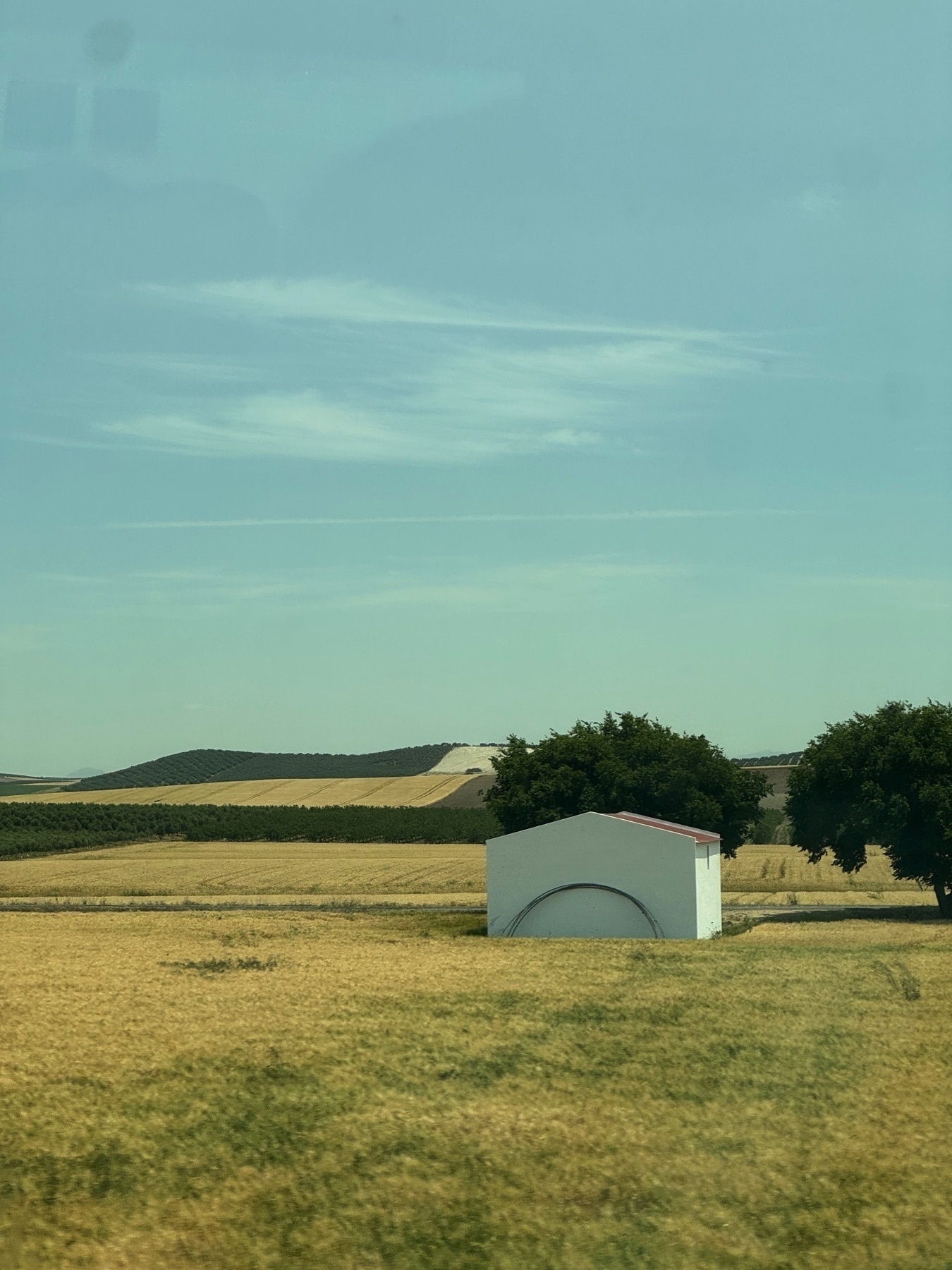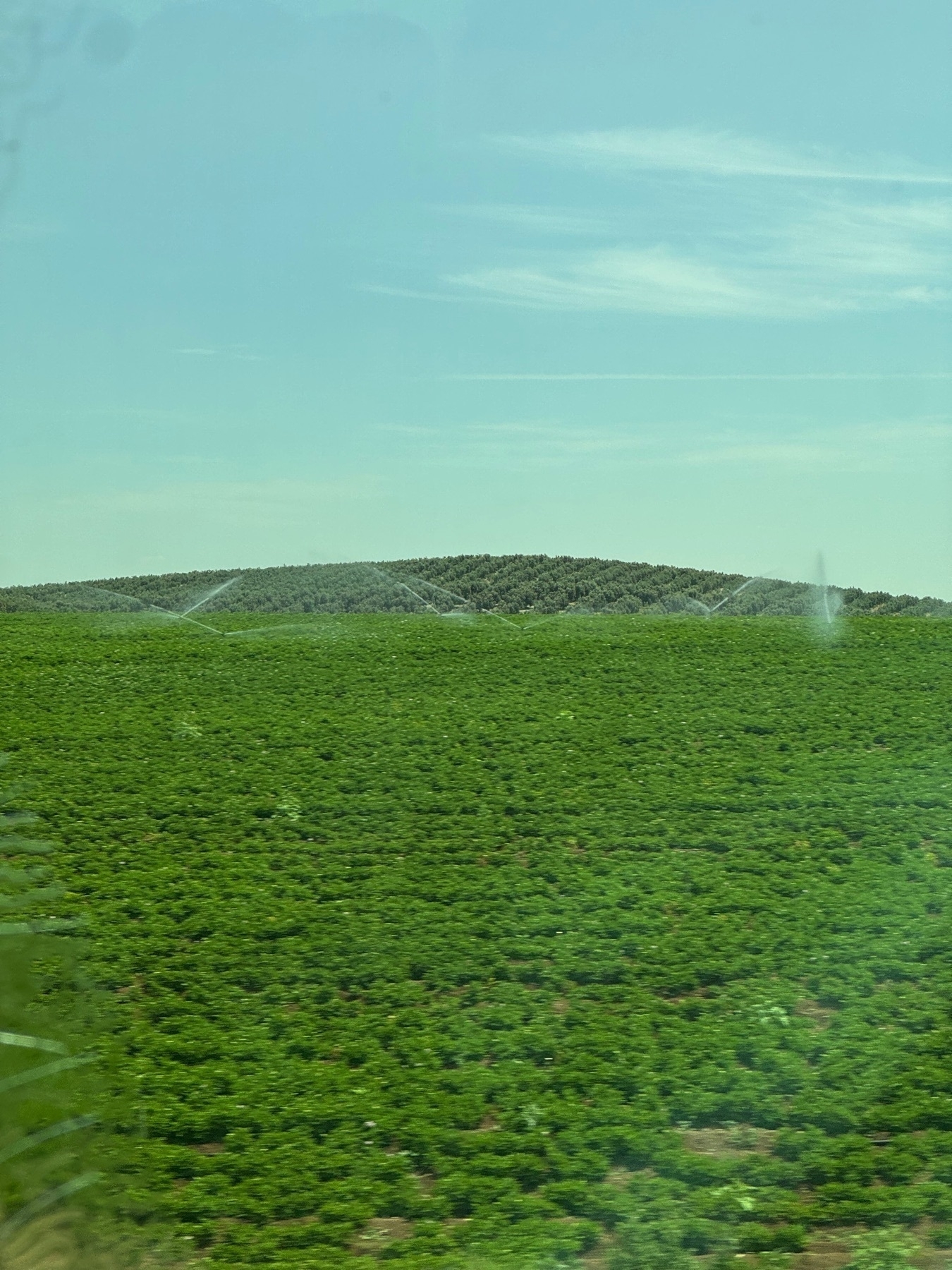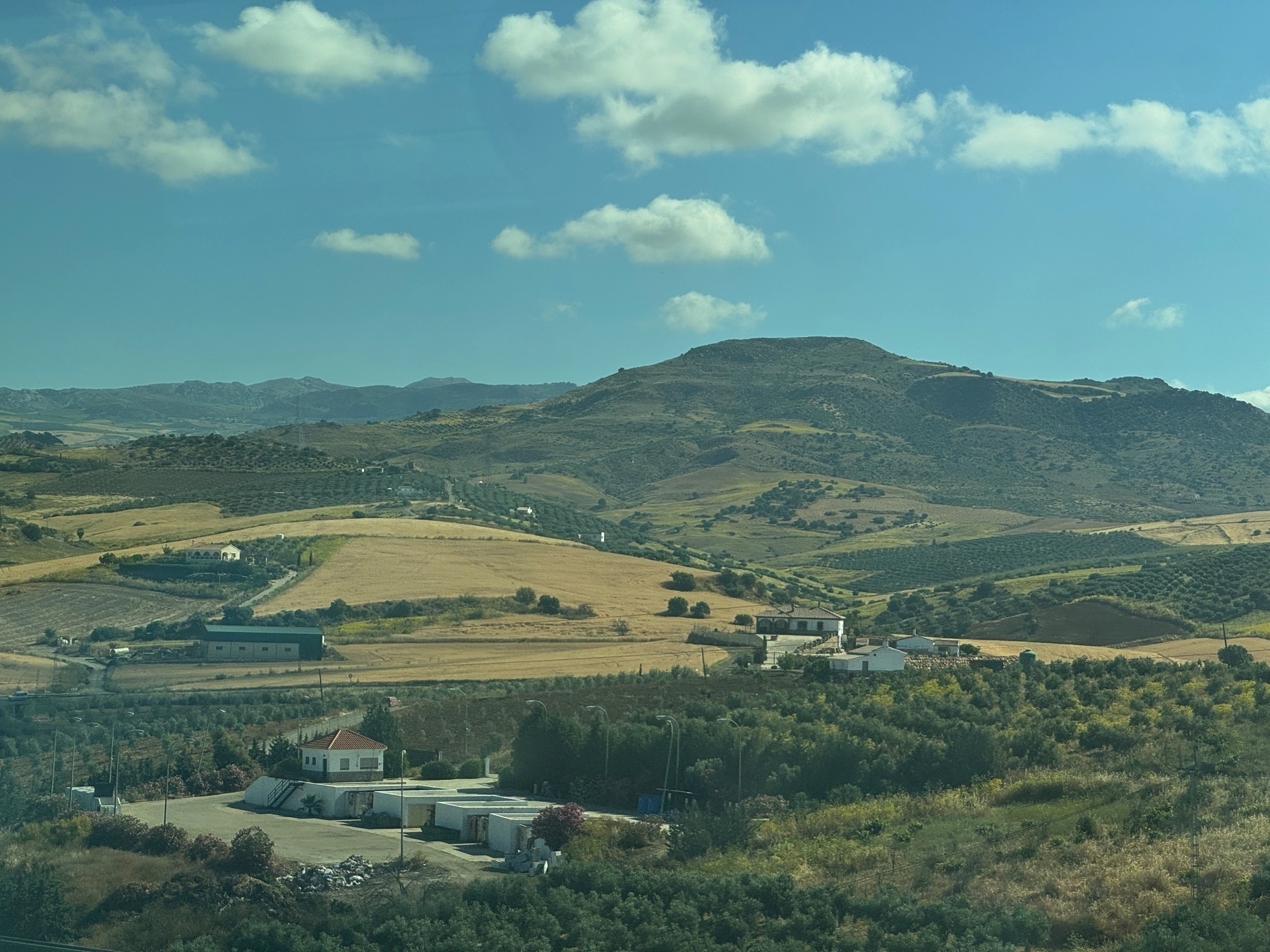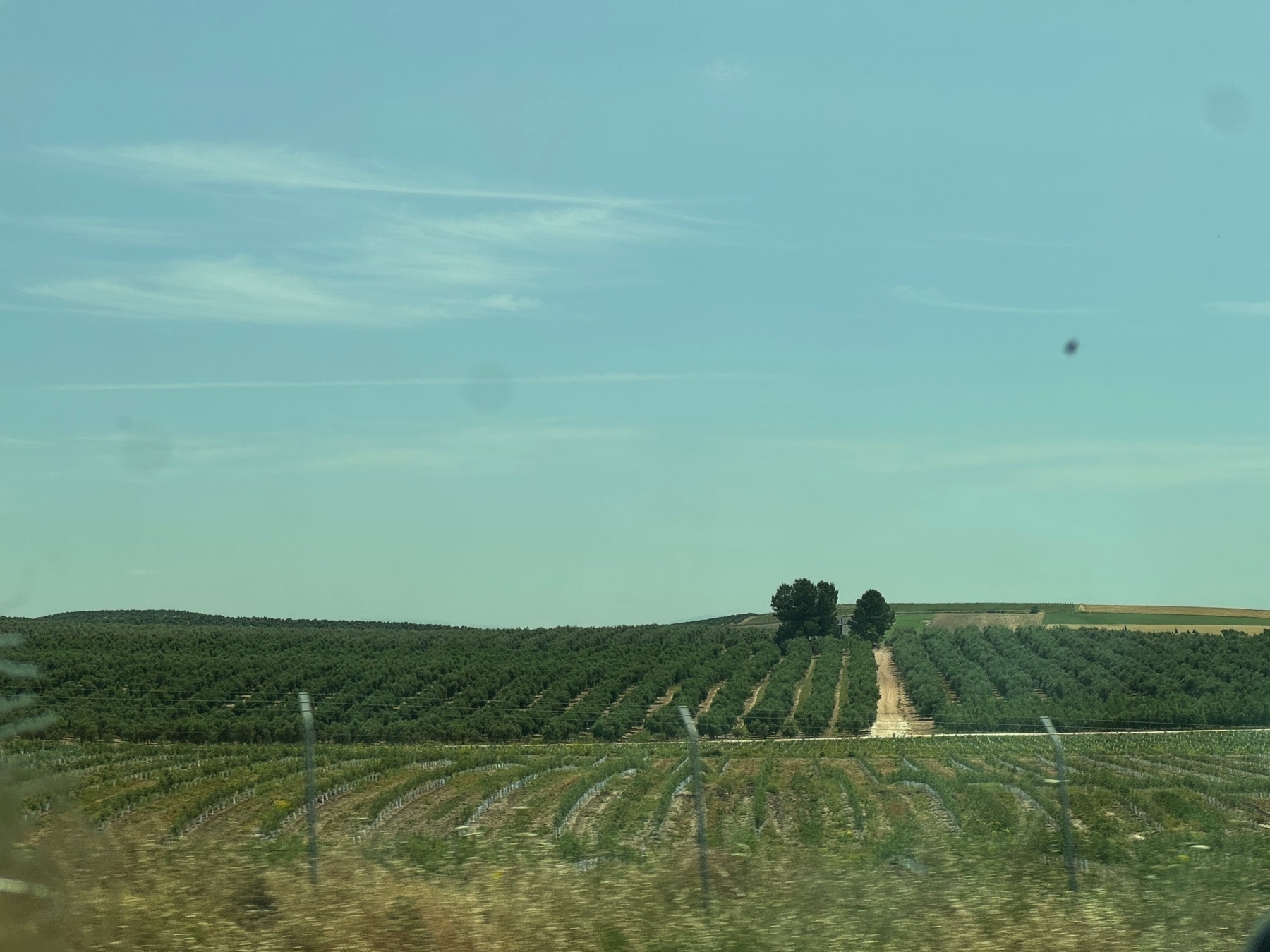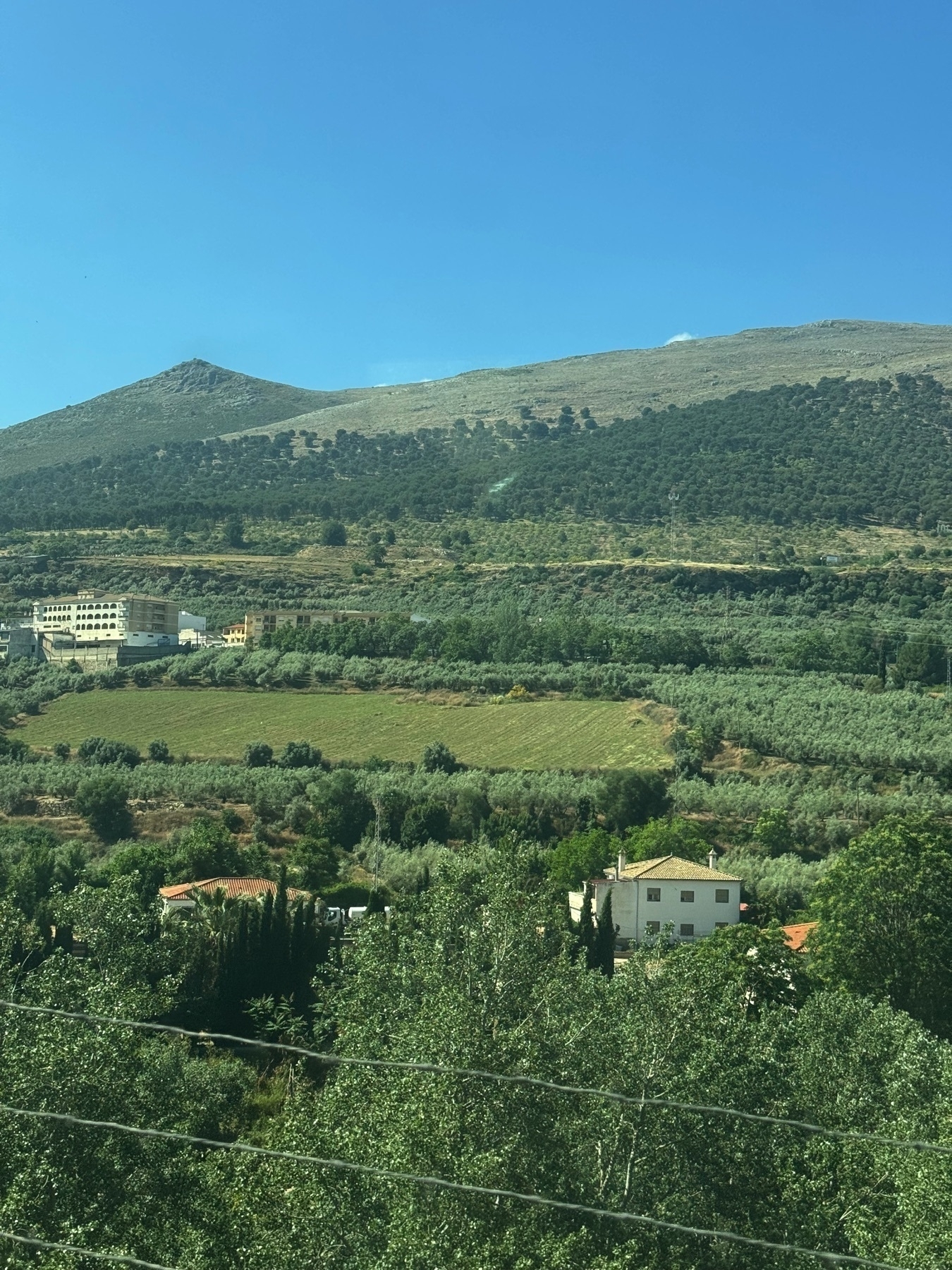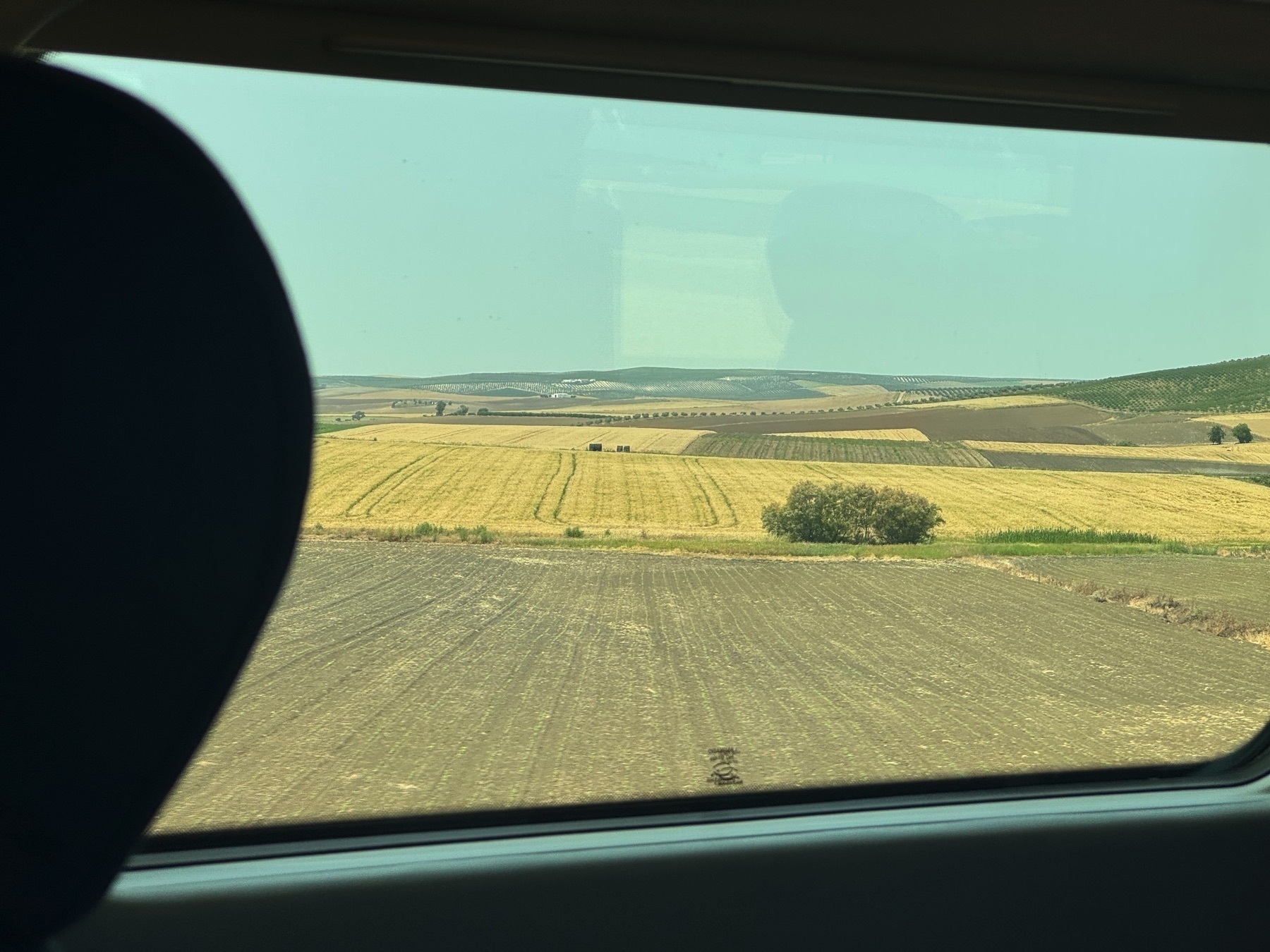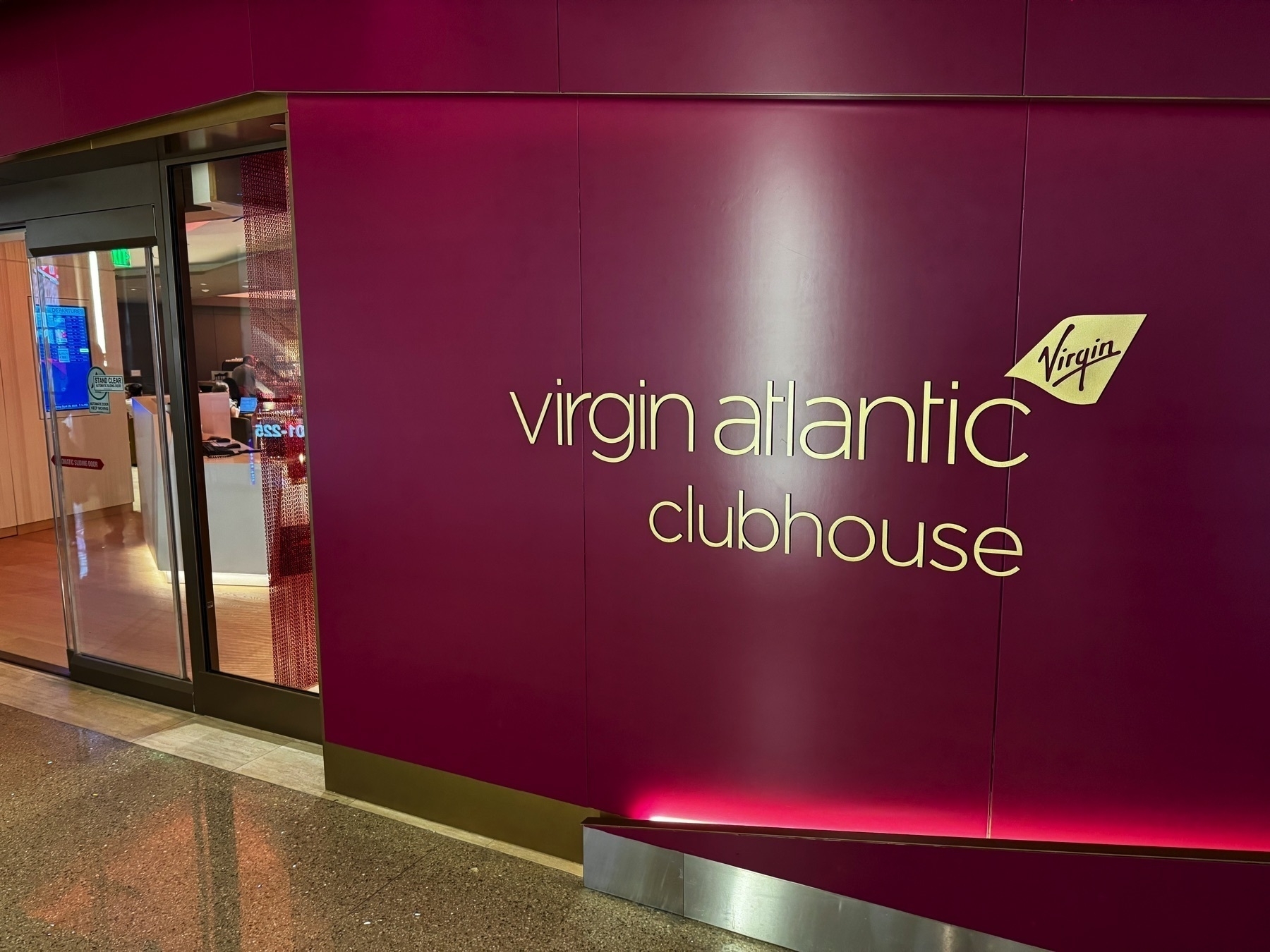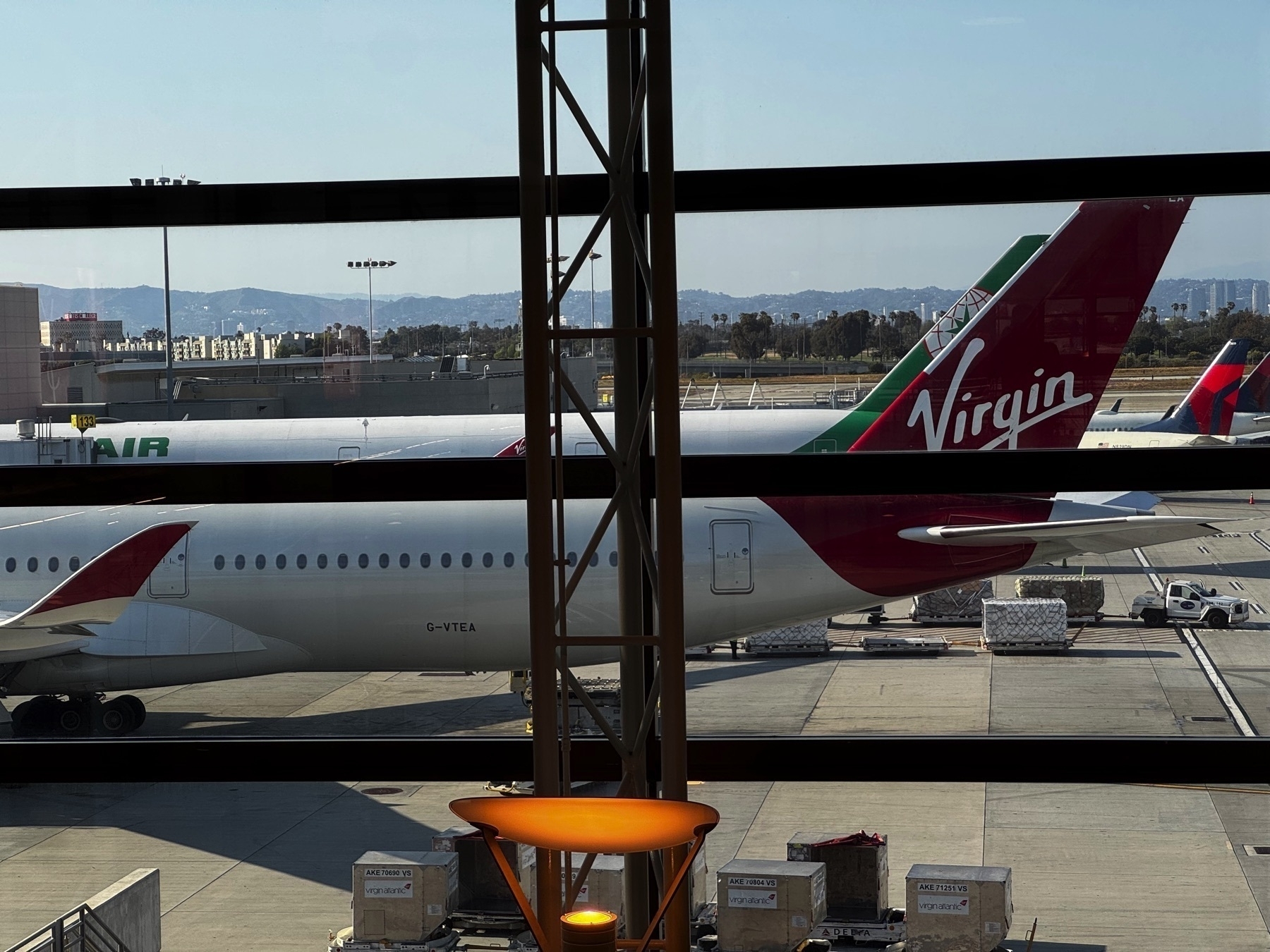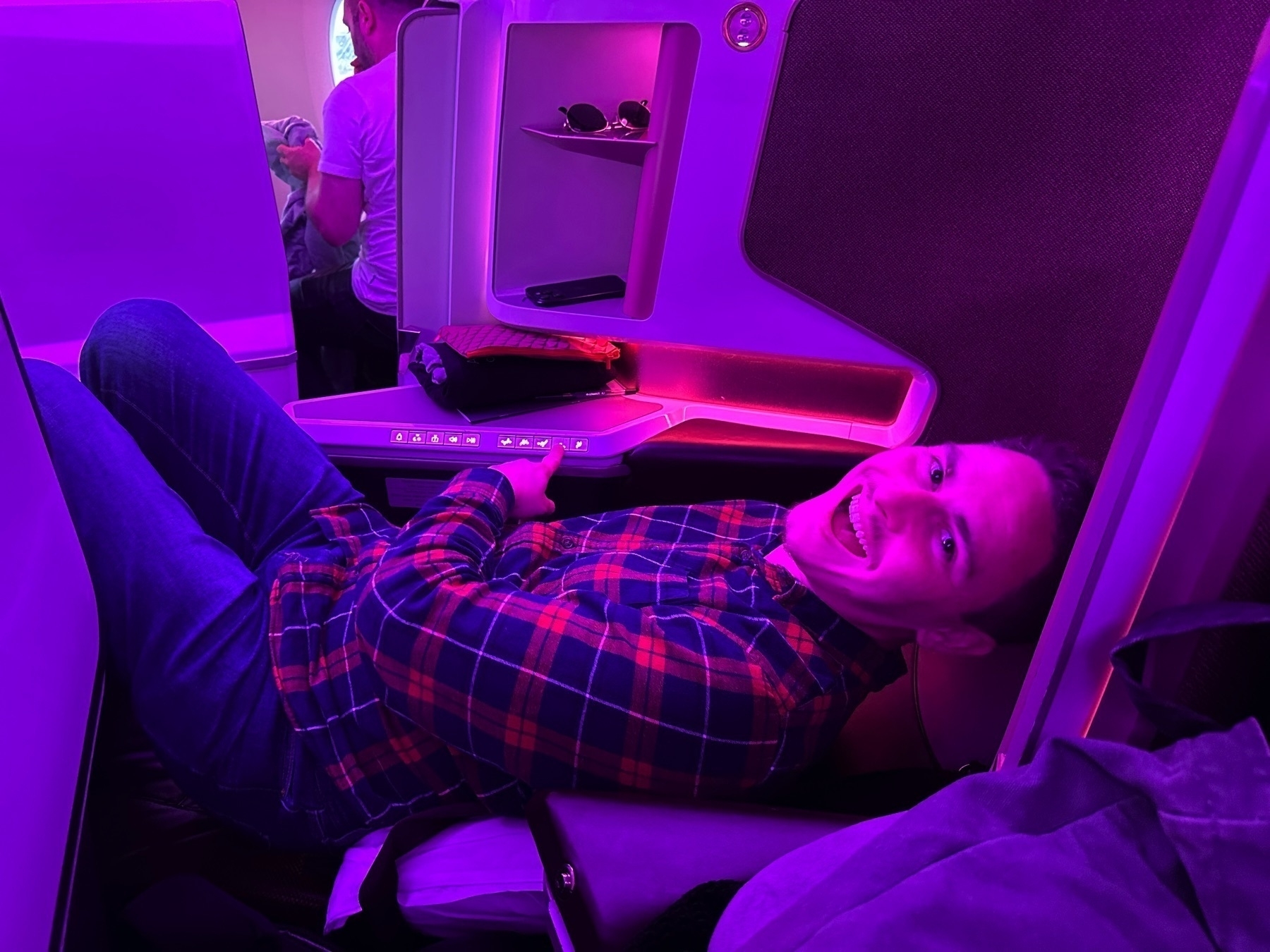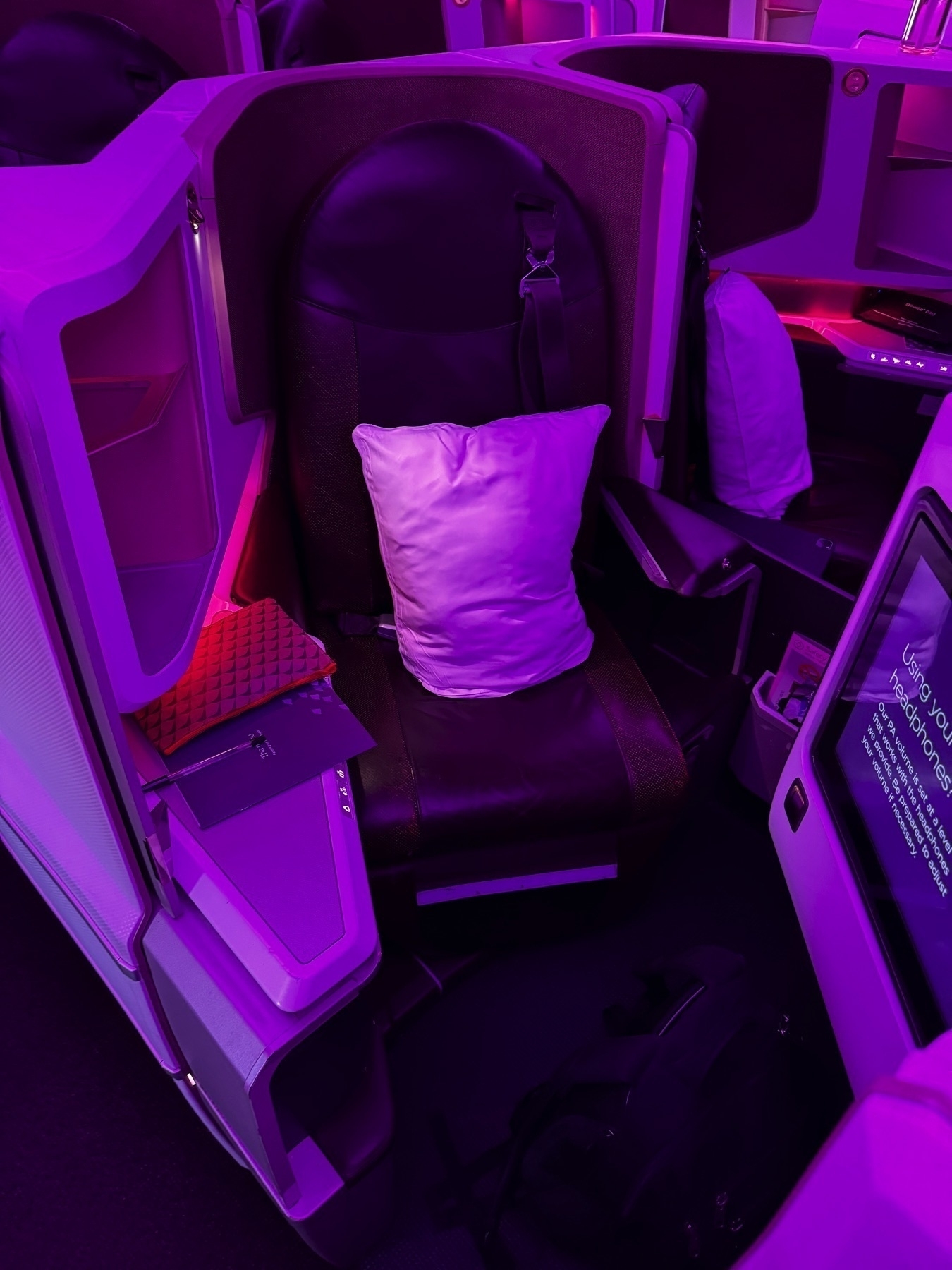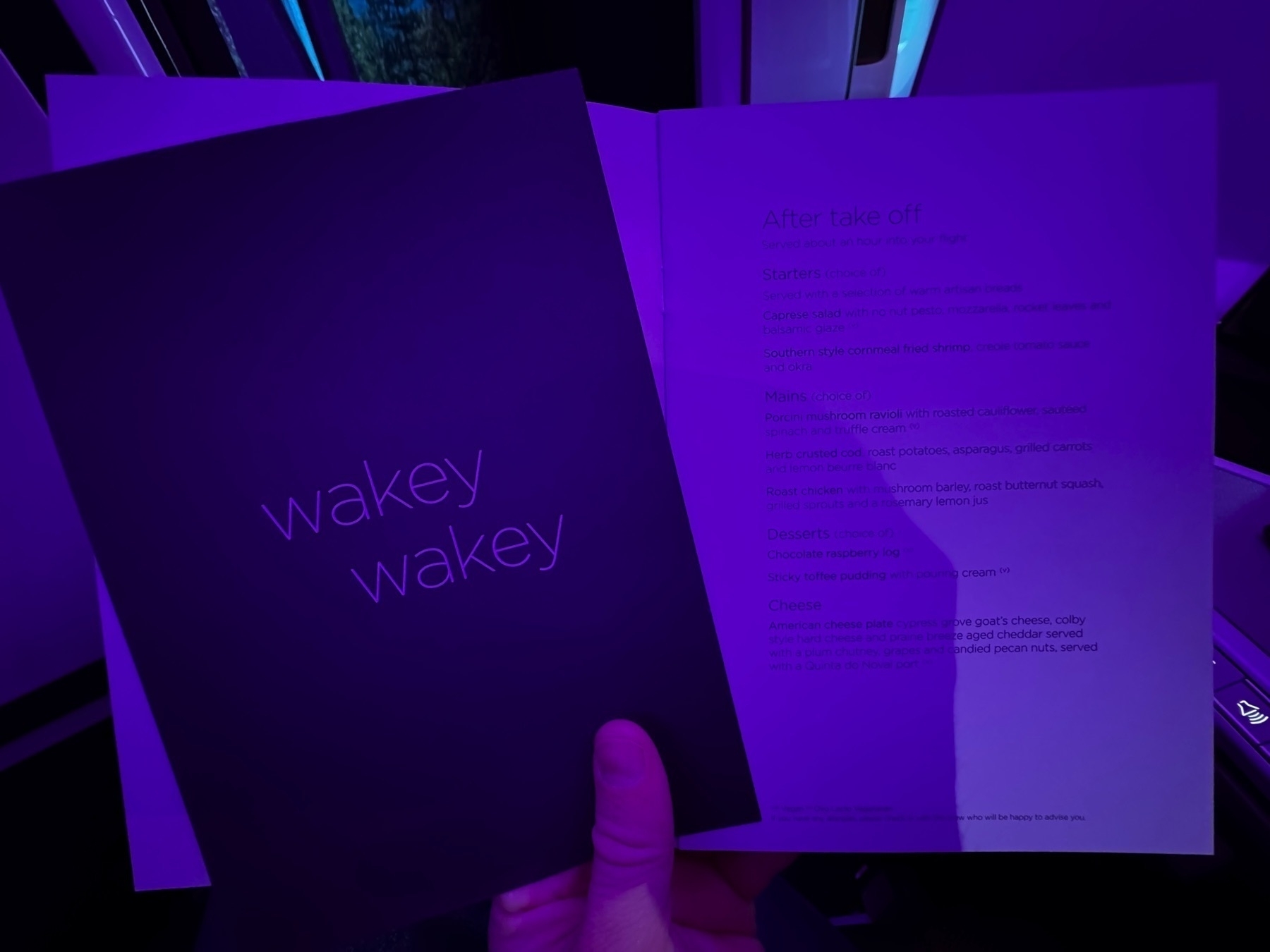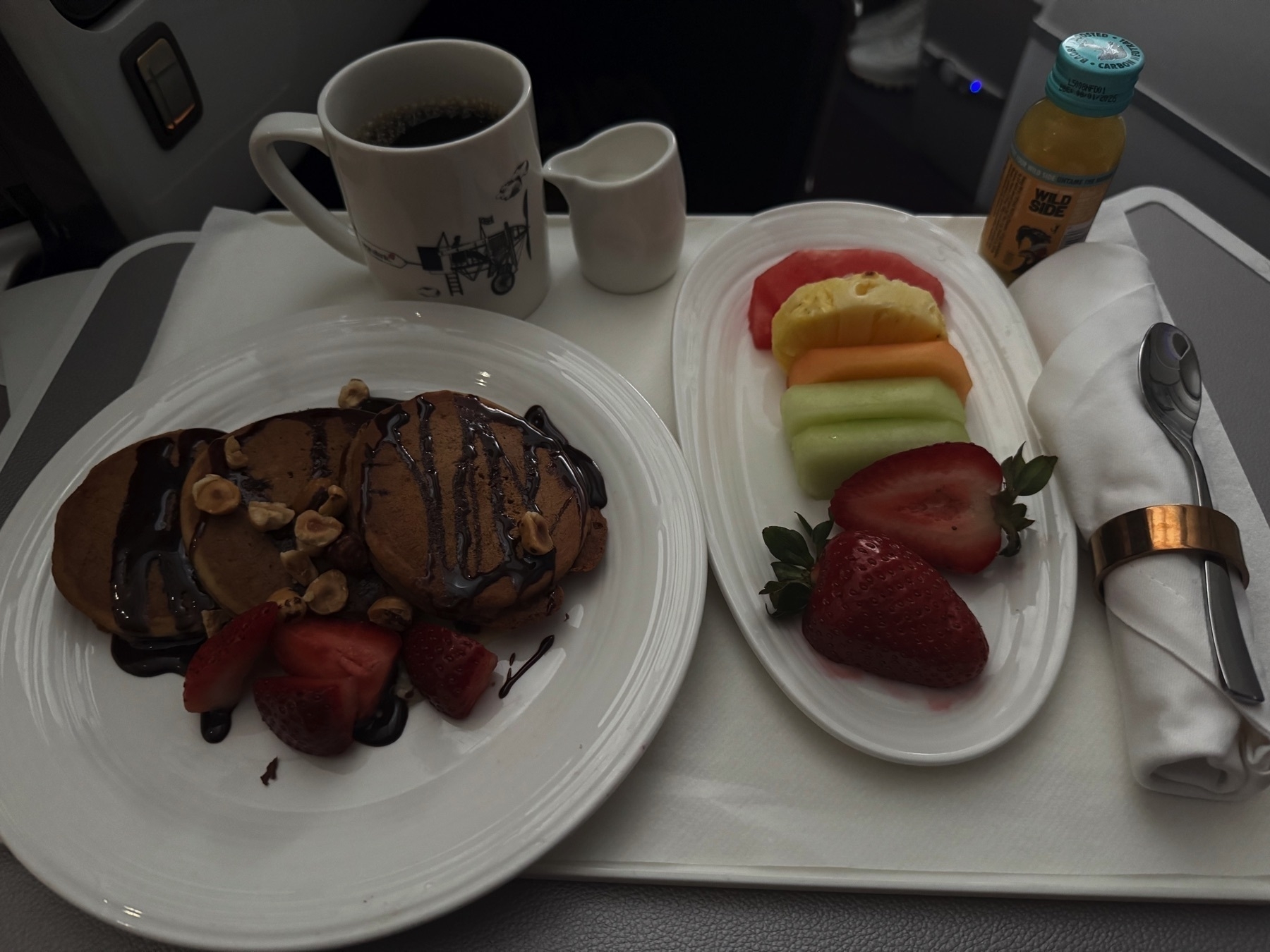2025
The weekend we were in Houston just happened to be Pride Houston, and thus I ended up going to my first pride event. 🏳️🌈
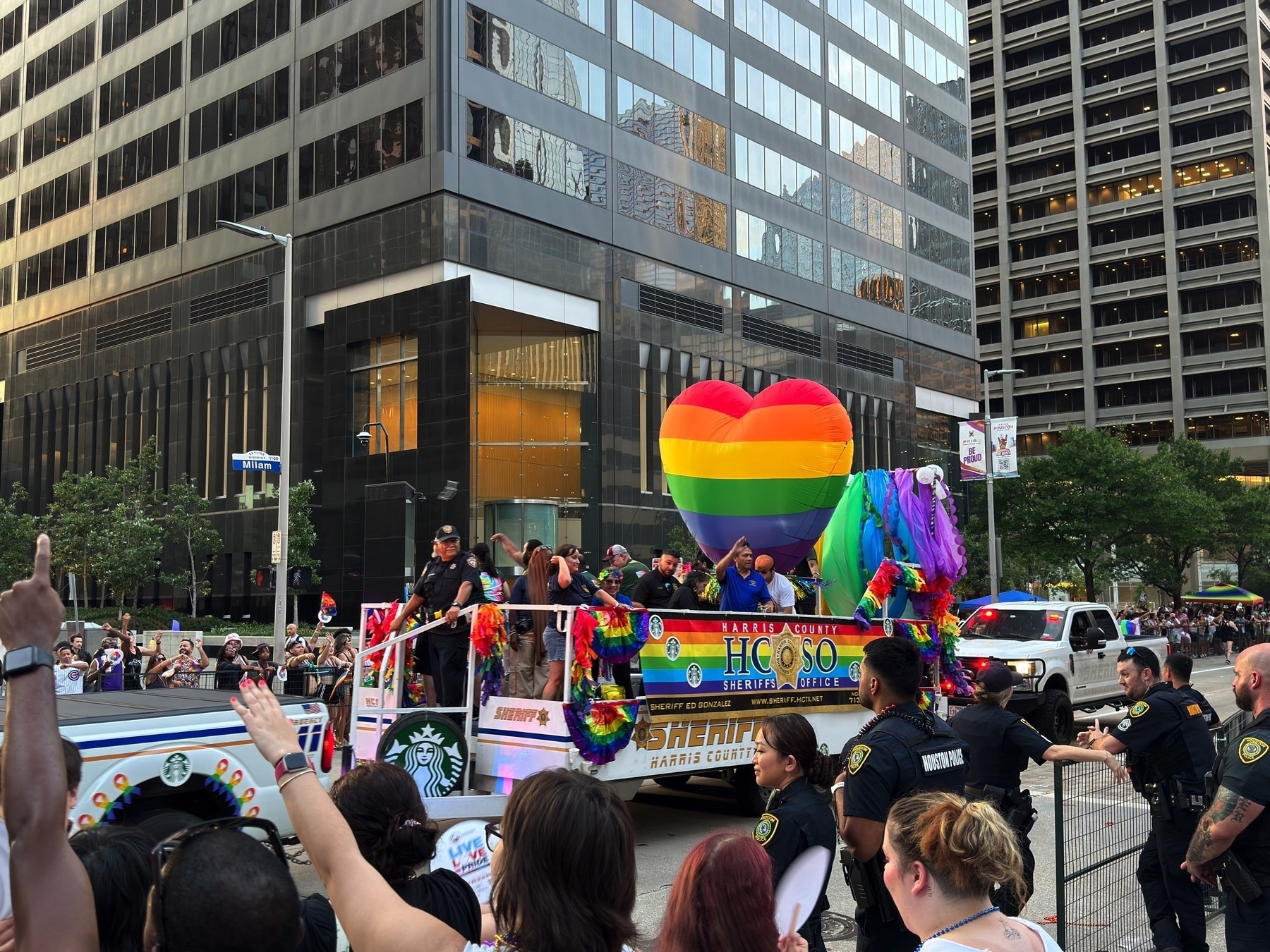
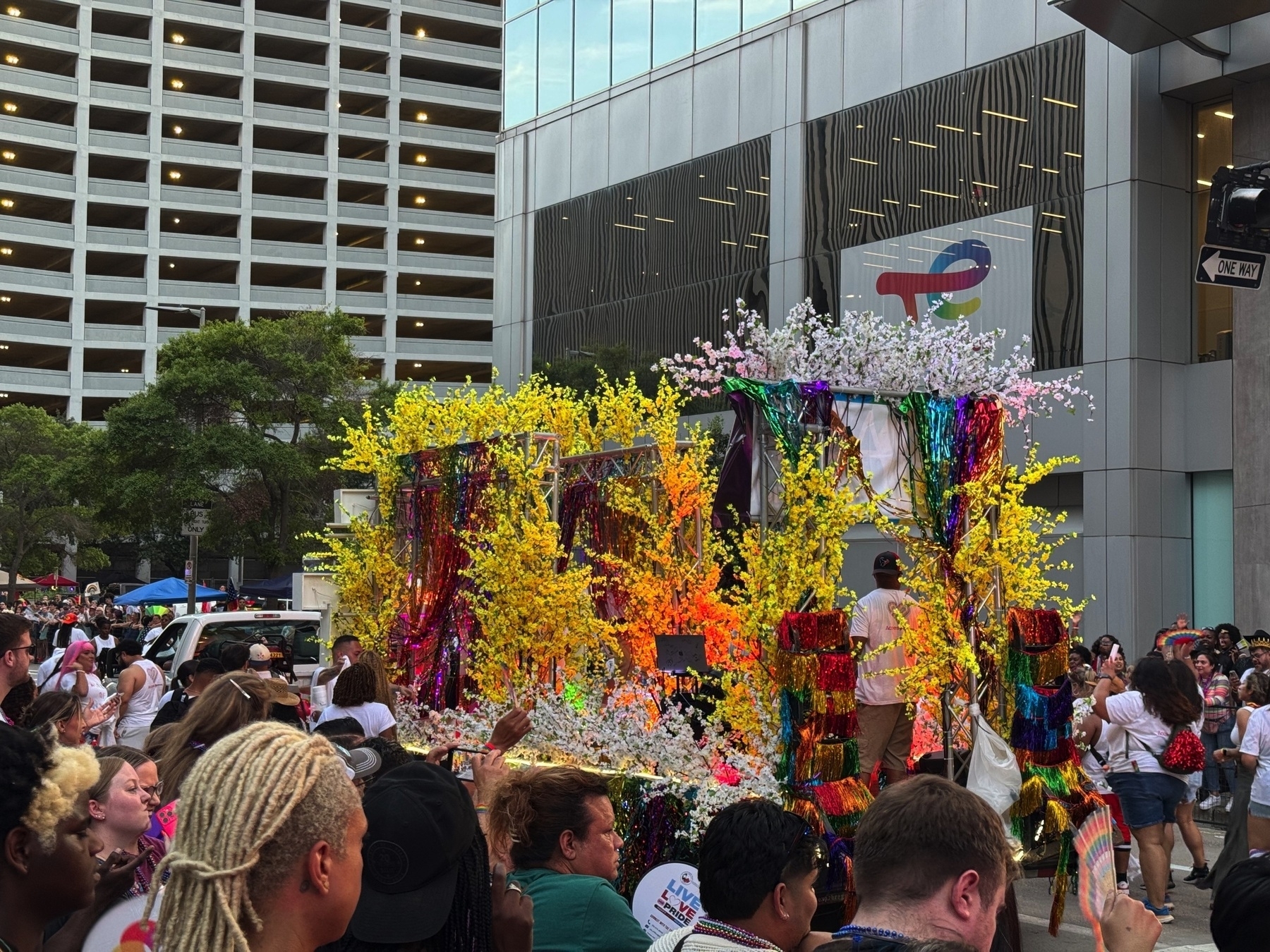
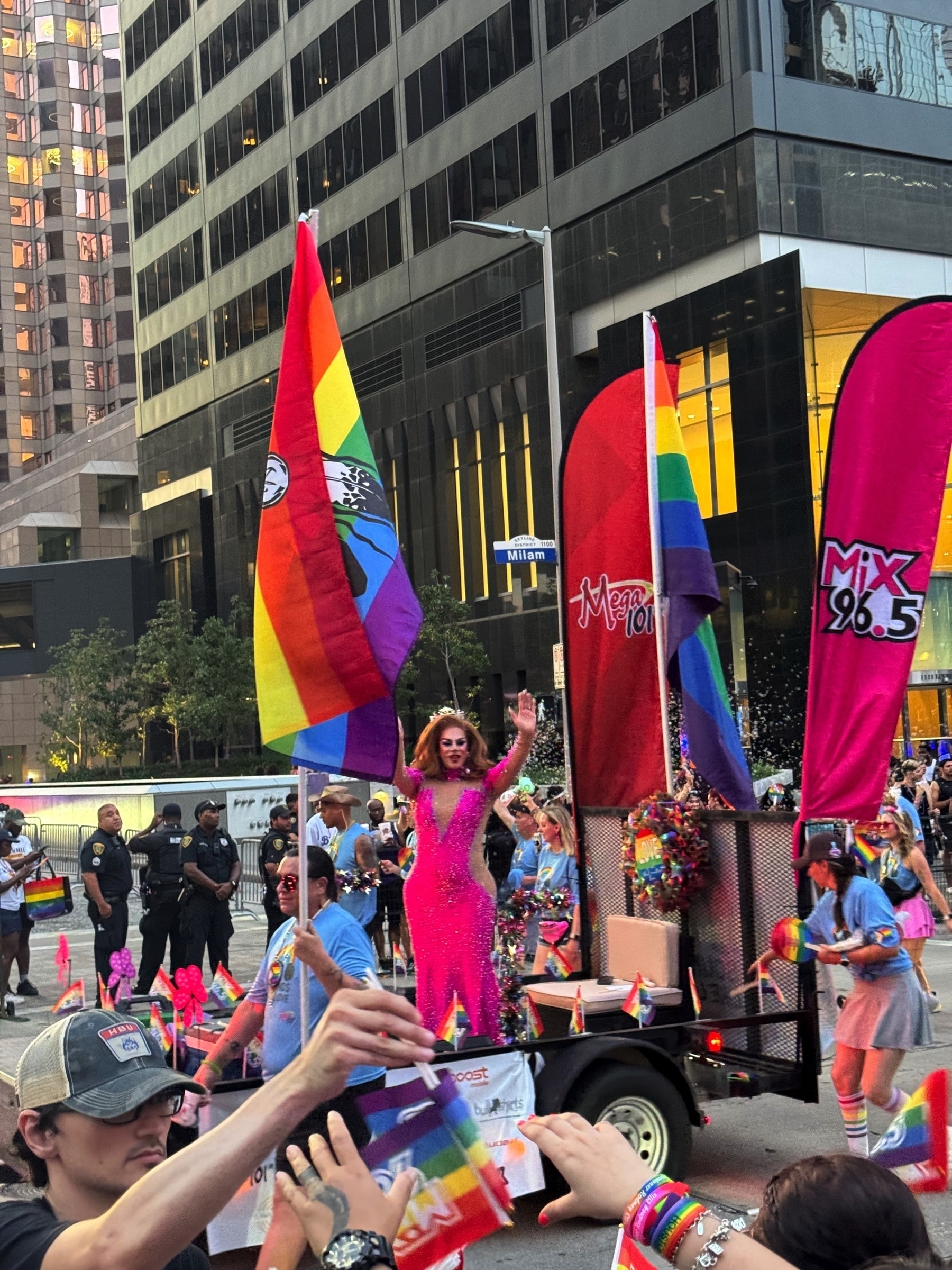
The Pit Room. 📍
The line for The Pit Room was long (maybe an hour?) but it was totally worth it. Amazing brisket and ribs.
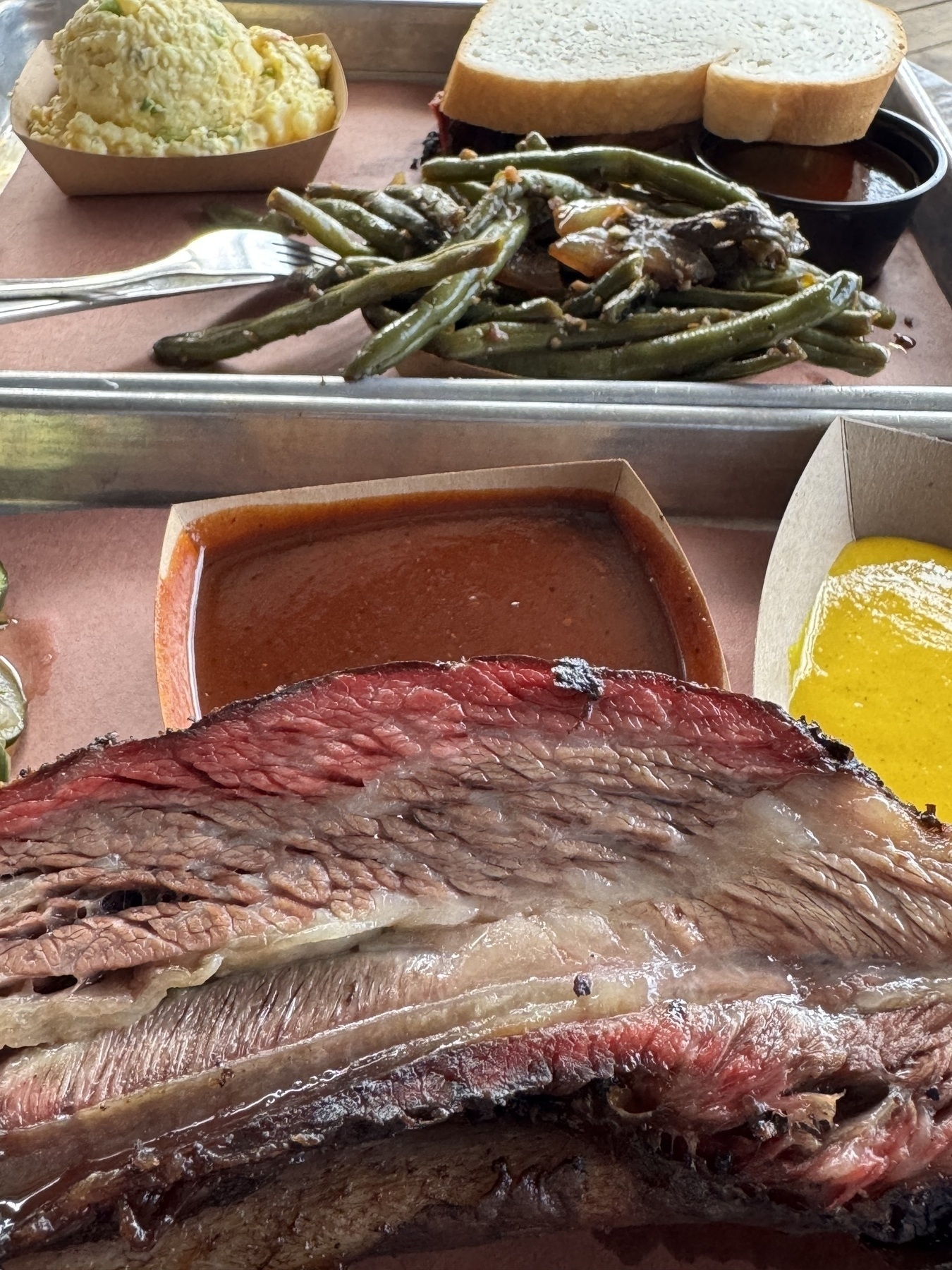
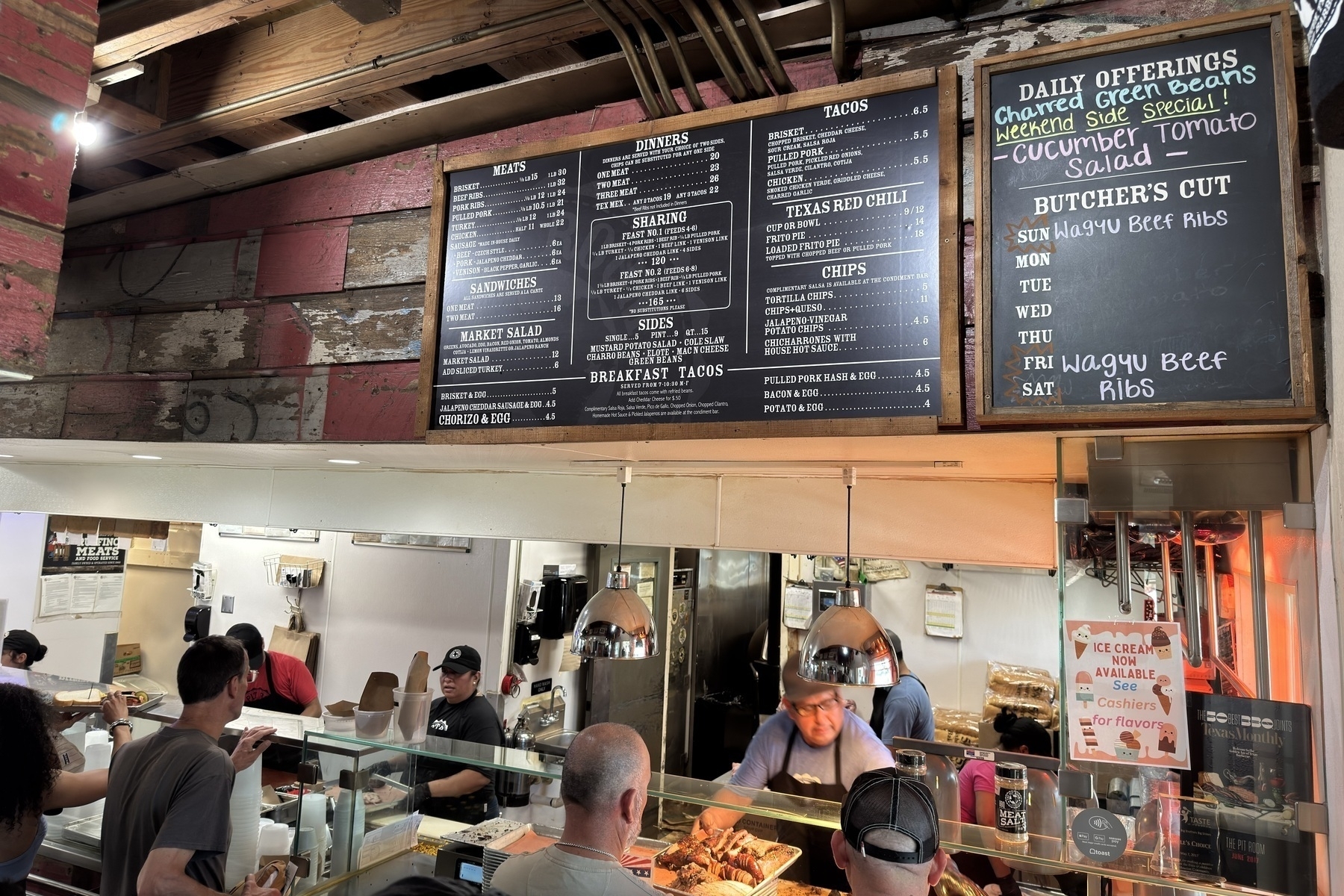
I knew that I would lose steam in posting photos from Europe if I didn’t get them mostly done while I was there… and I was right! 🙈
Off to Houston for a little Beyoncé and birthday celebration for Hugo. ✈️

We made it back up the River Thames and got some great views of iconic London buildings.
We started near Canary Wharf, passed under London Bridge with the Shard nearby, then went by the Walkie-Talkie, Tower Bridge, and finally saw the London Eye before reaching Westminster.
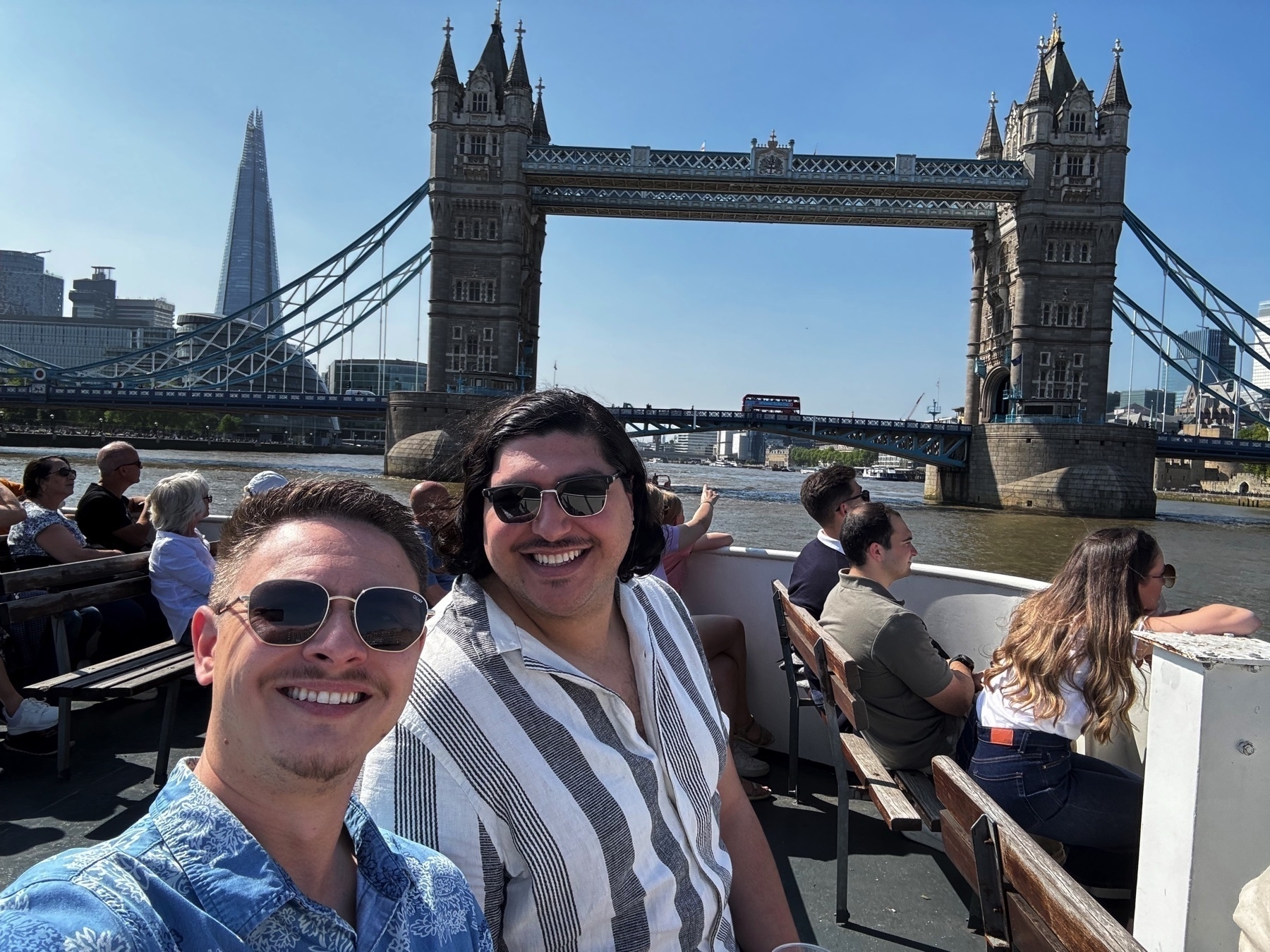
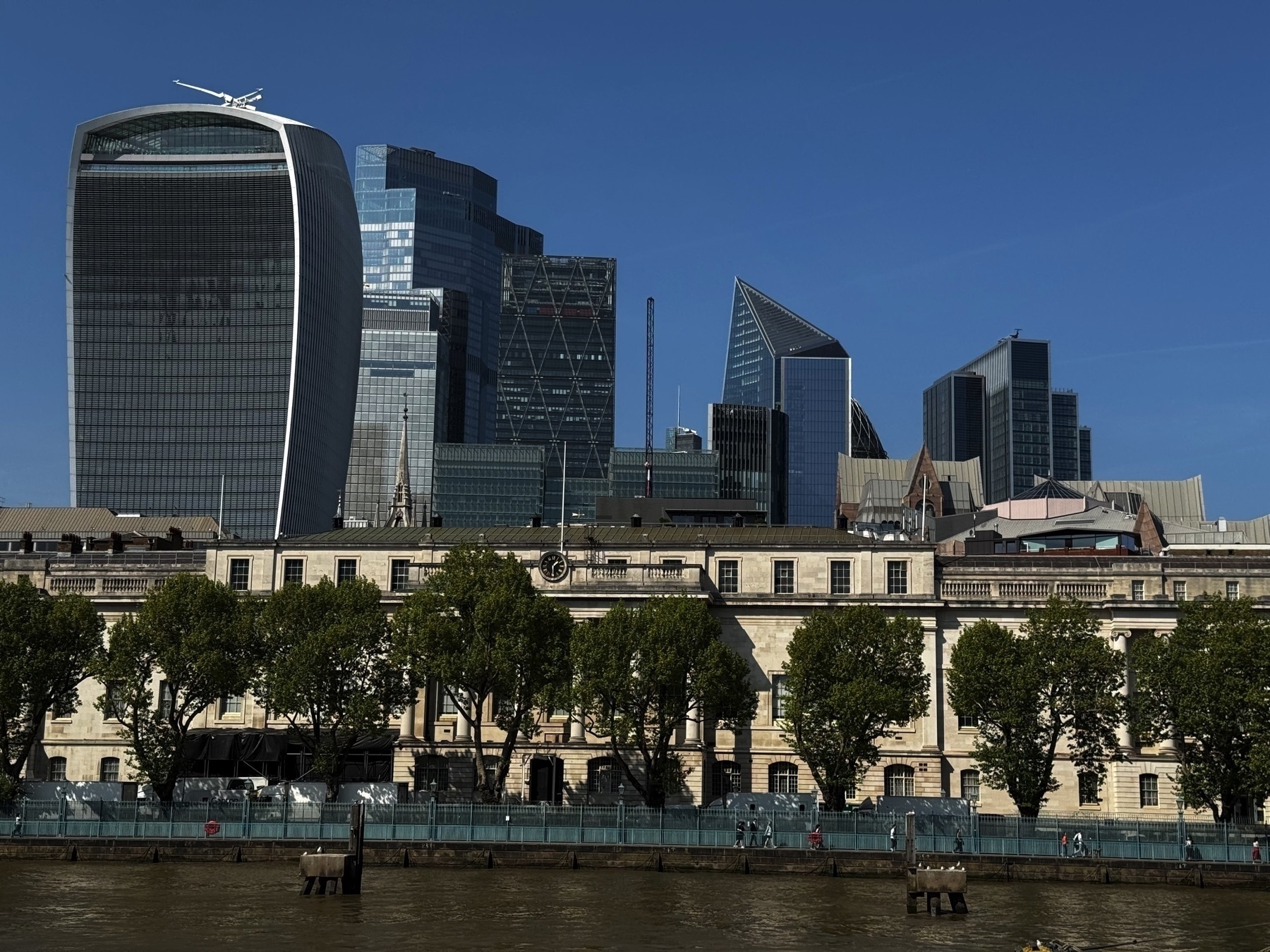
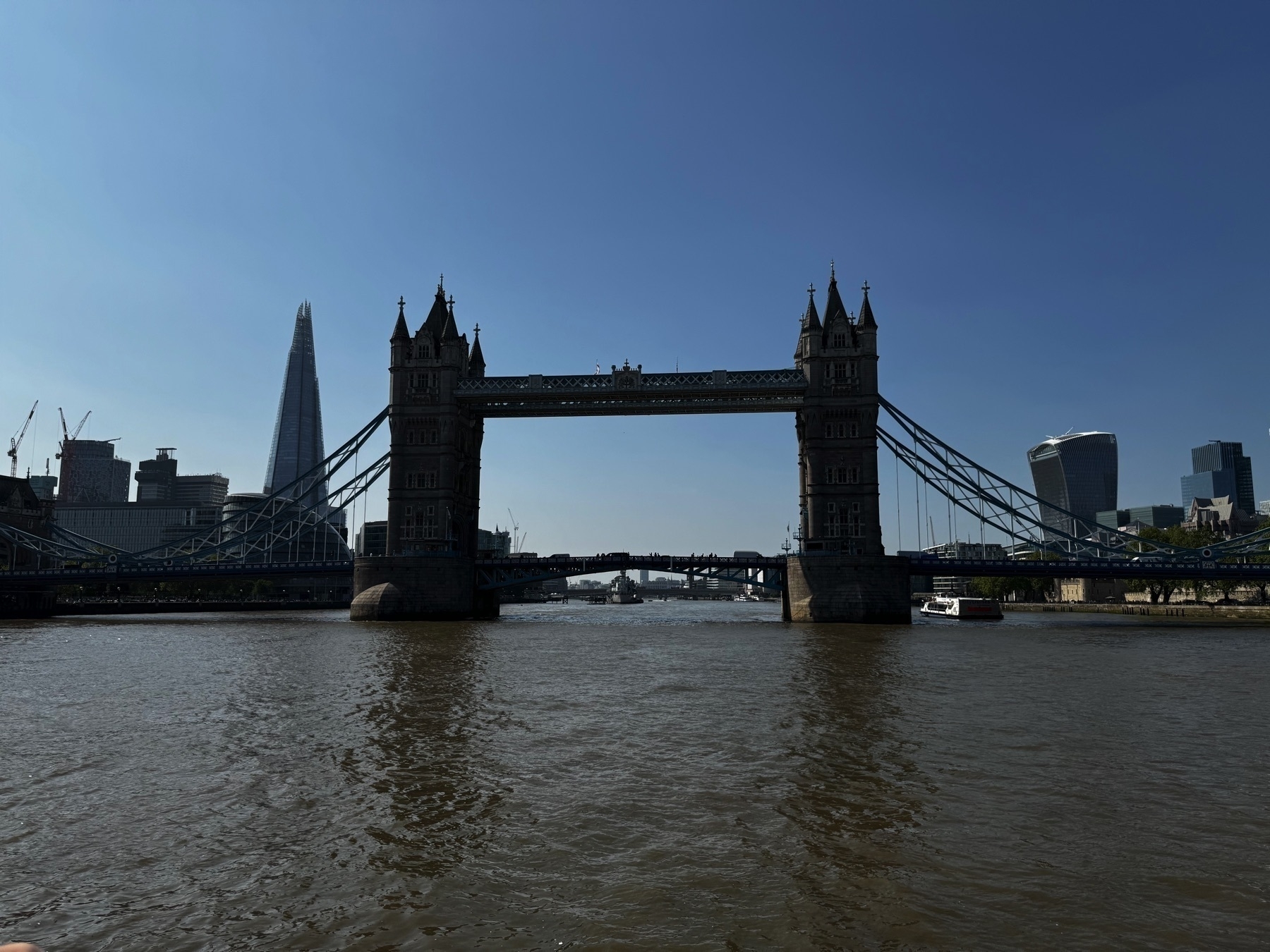
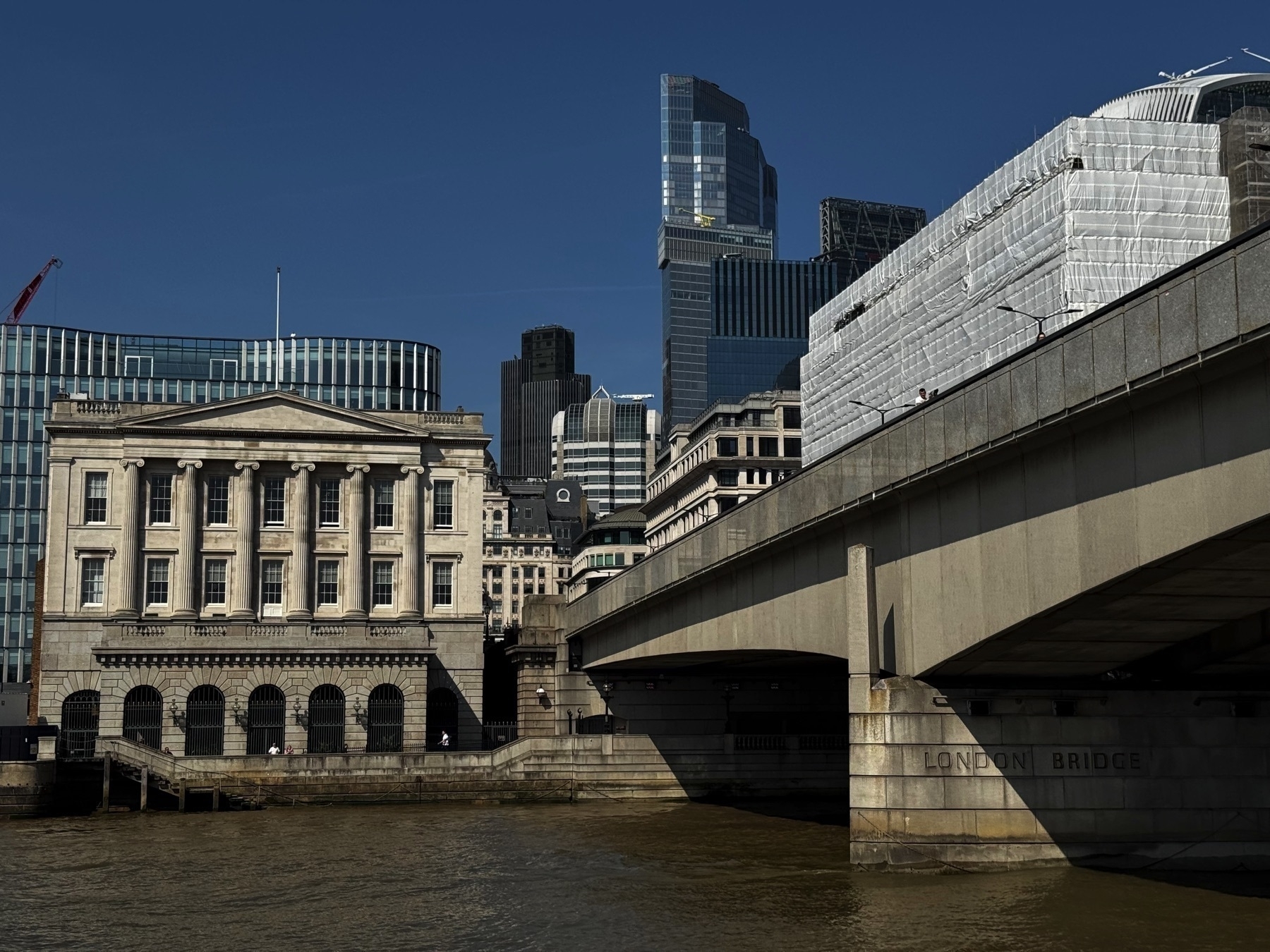
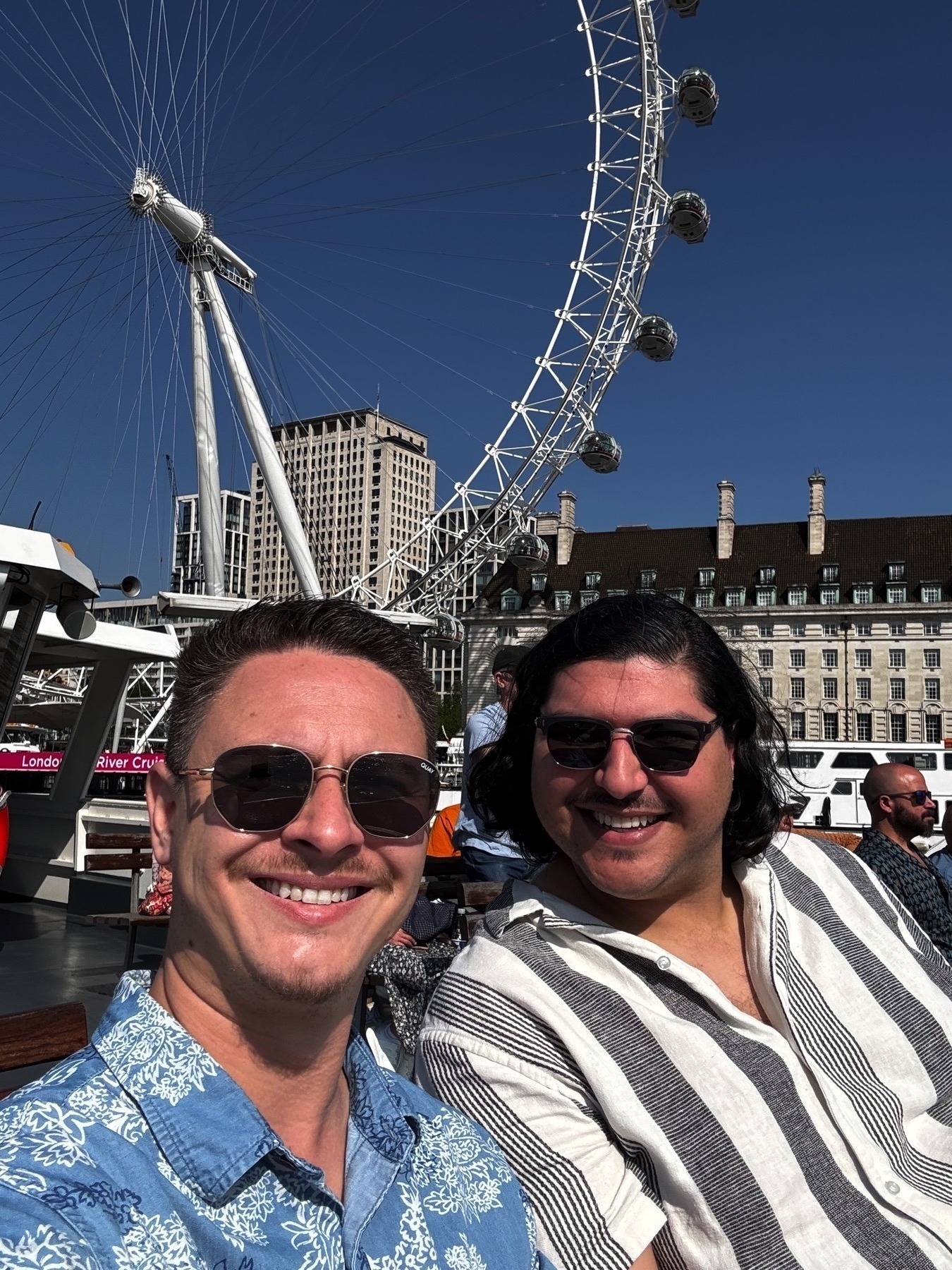
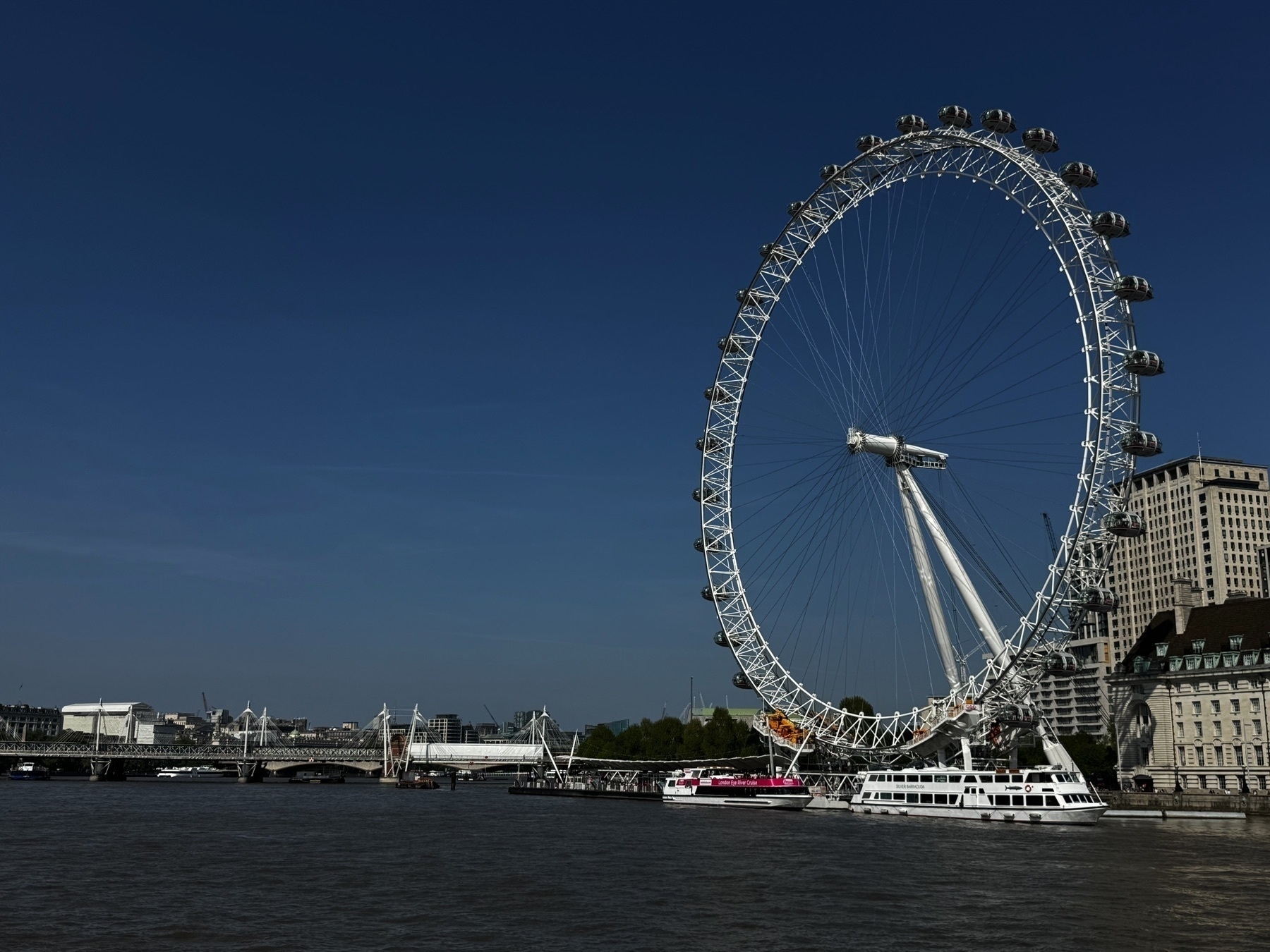
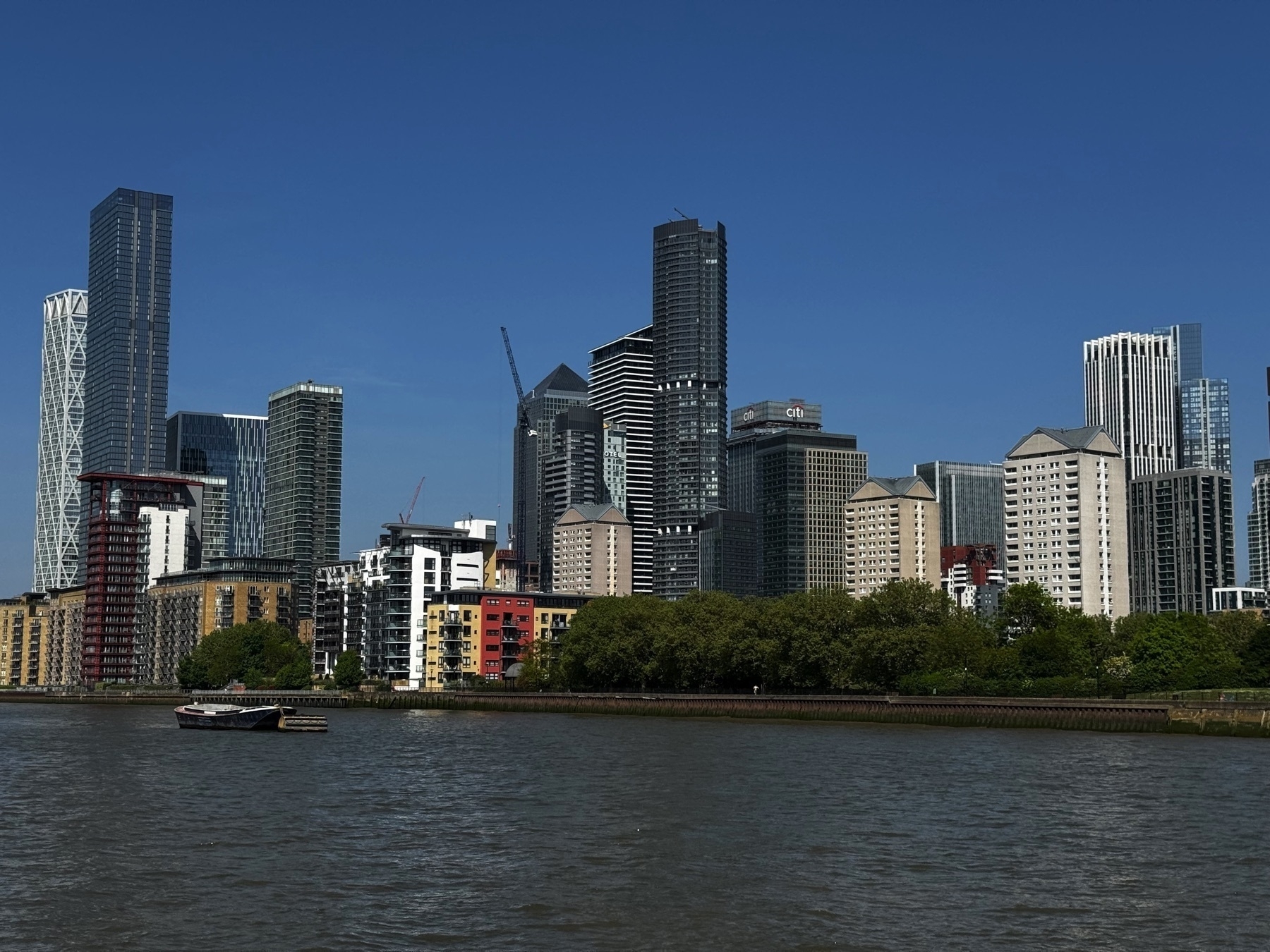
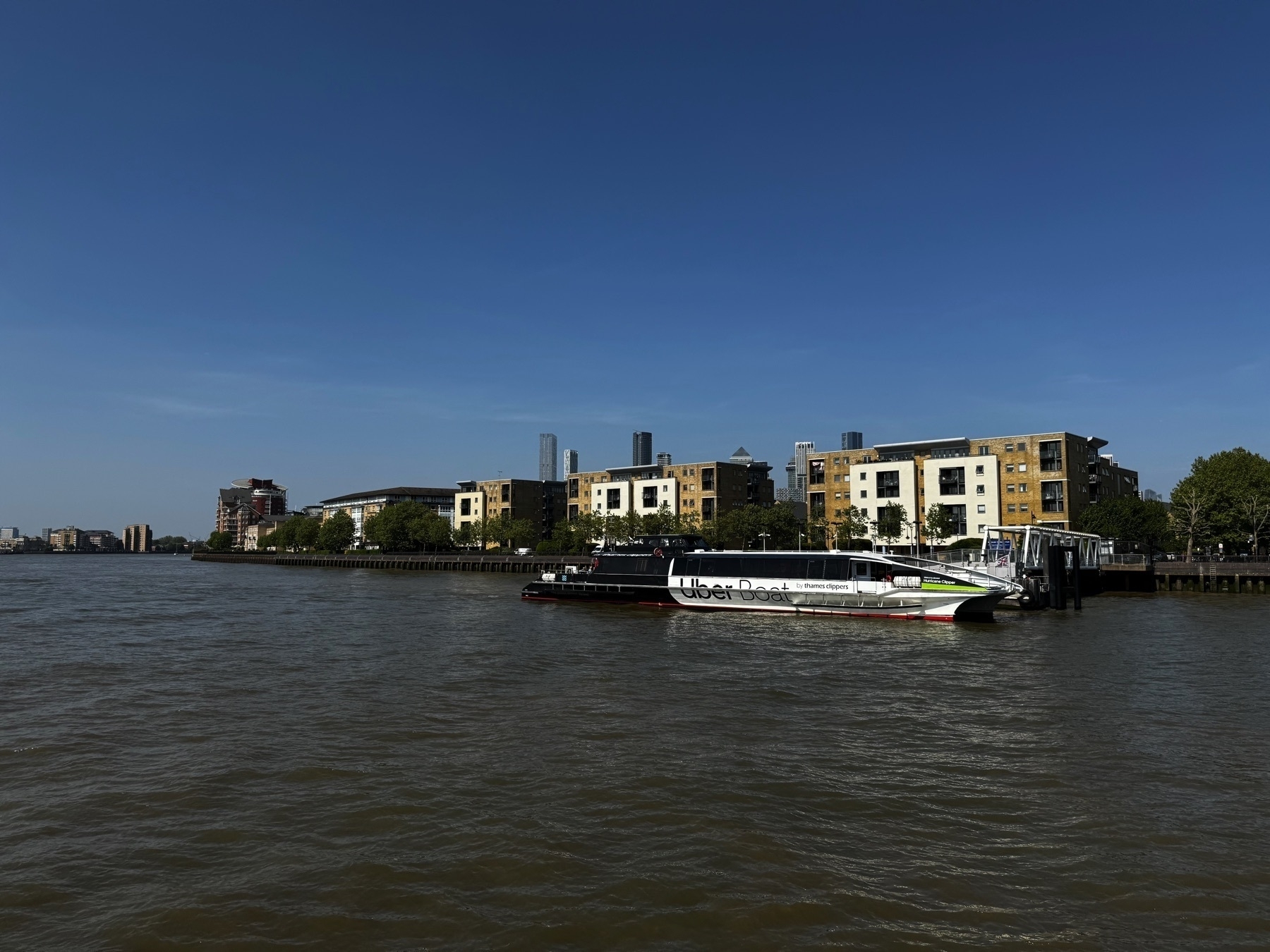
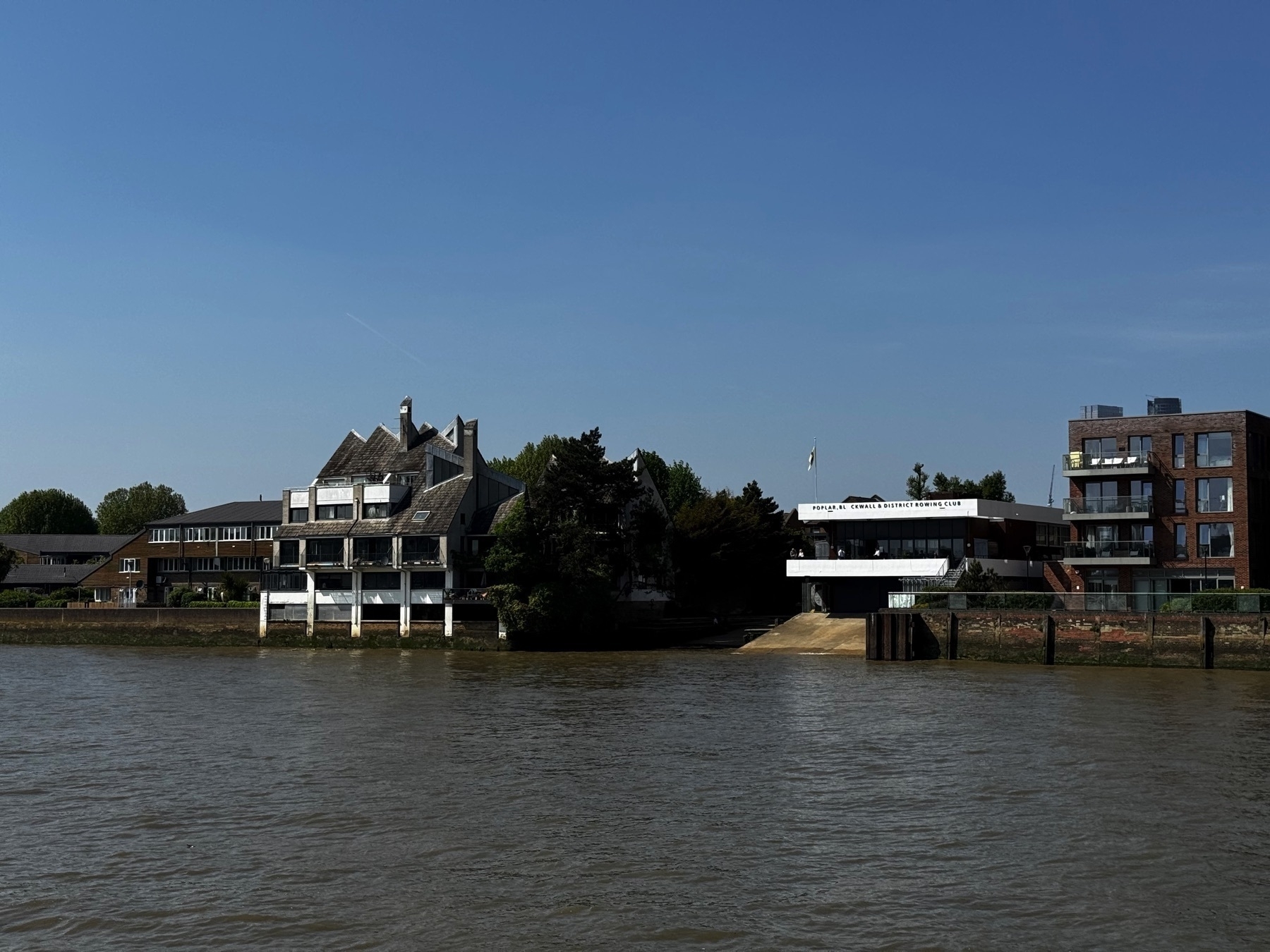
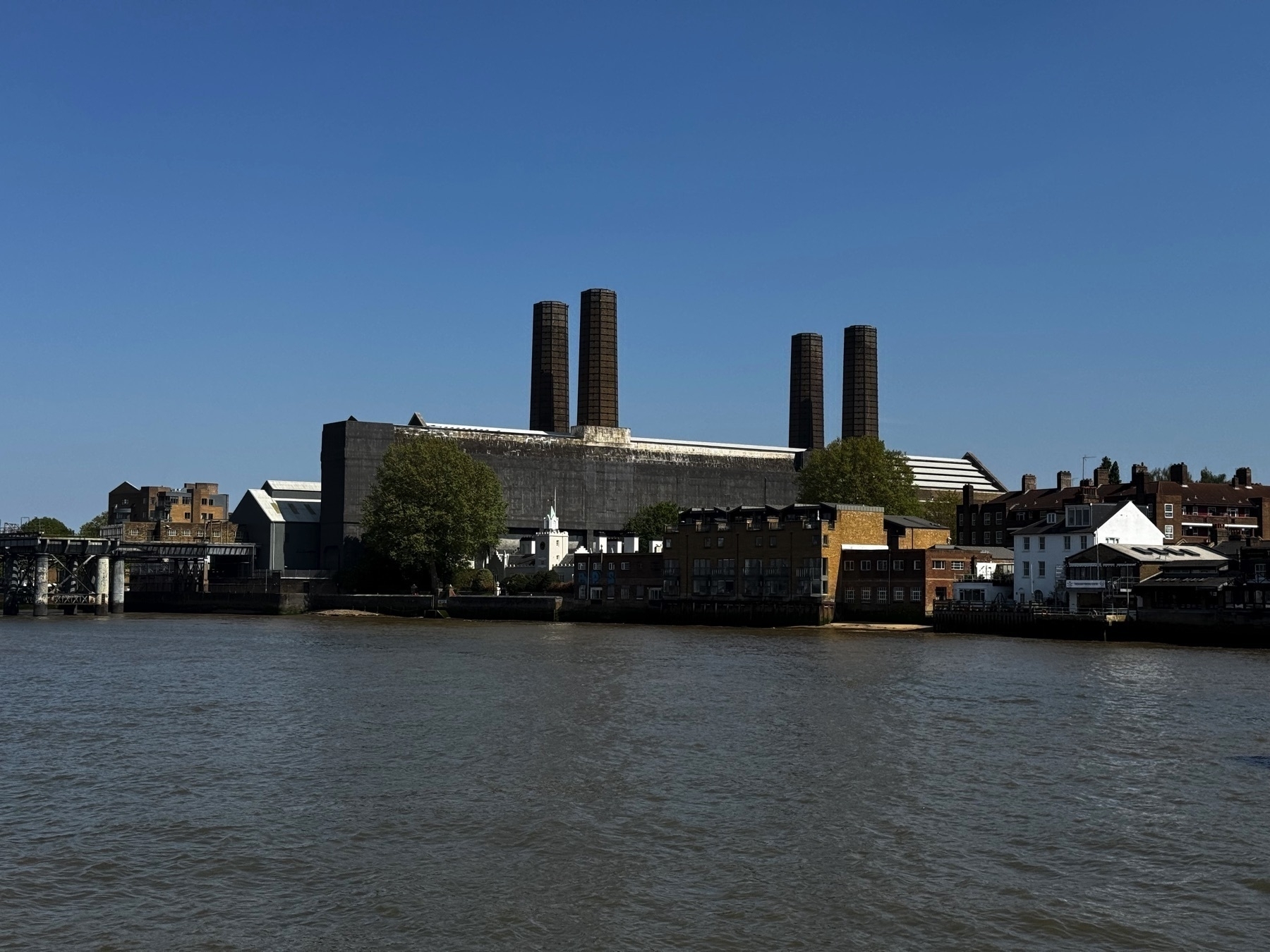
On our first full day, we walked through Greenwich Market and stumbled upon the Armada Portrait at the Queen’s House!
Then we walked through Greenwich Park and uphill to the Royal Observatory. We didn’t go inside but it was cool to see the skyline view and straddle the Prime Meridian (for free)!
<img src=“https://cdn.uploads.micro.blog/221073/2025/2e42853f74.jpg" width=“450” height=“600” alt=“A person stands with arms raised and smiling while straddling the Prime Meridian line at the Royal Observatory in Greenwich, London. The line, marking 0° longitude, is clearly visible underfoot, dividing the Eastern and Western Hemispheres. The historic stone marker above their head is labeled “Greenwich Meridian.” The individual’s casual outfit and relaxed pose reflect the lighthearted tourist experience.">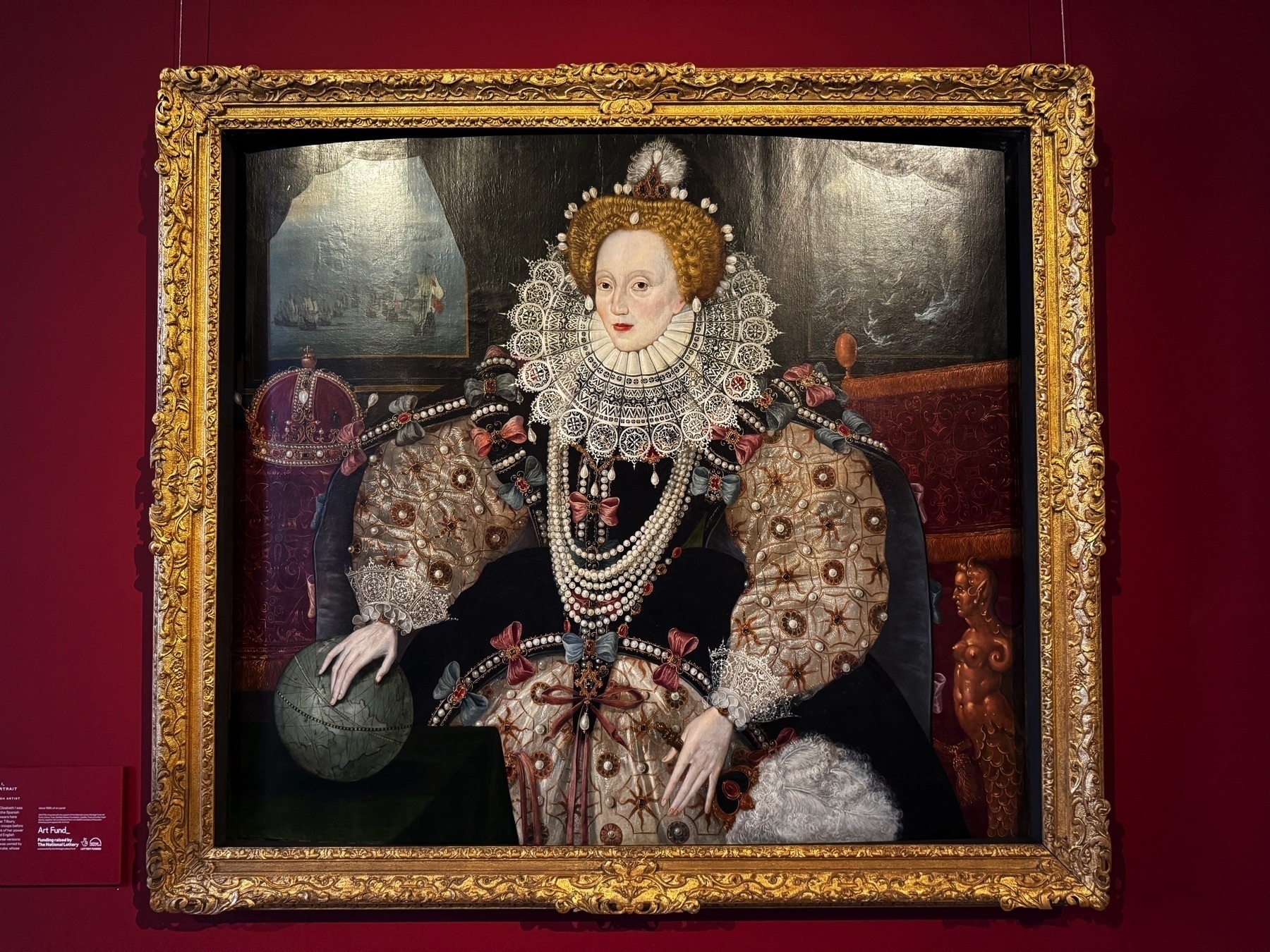
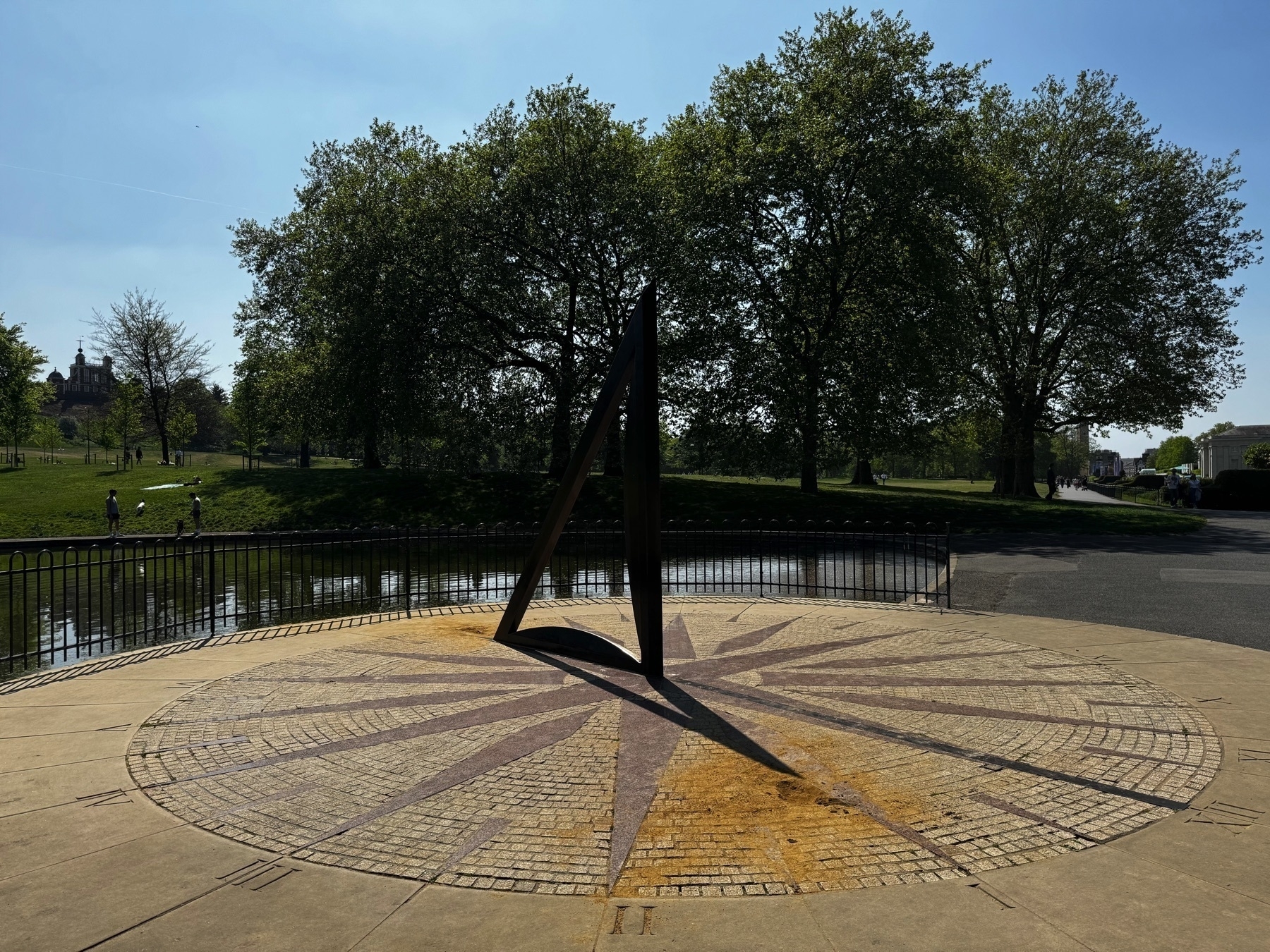
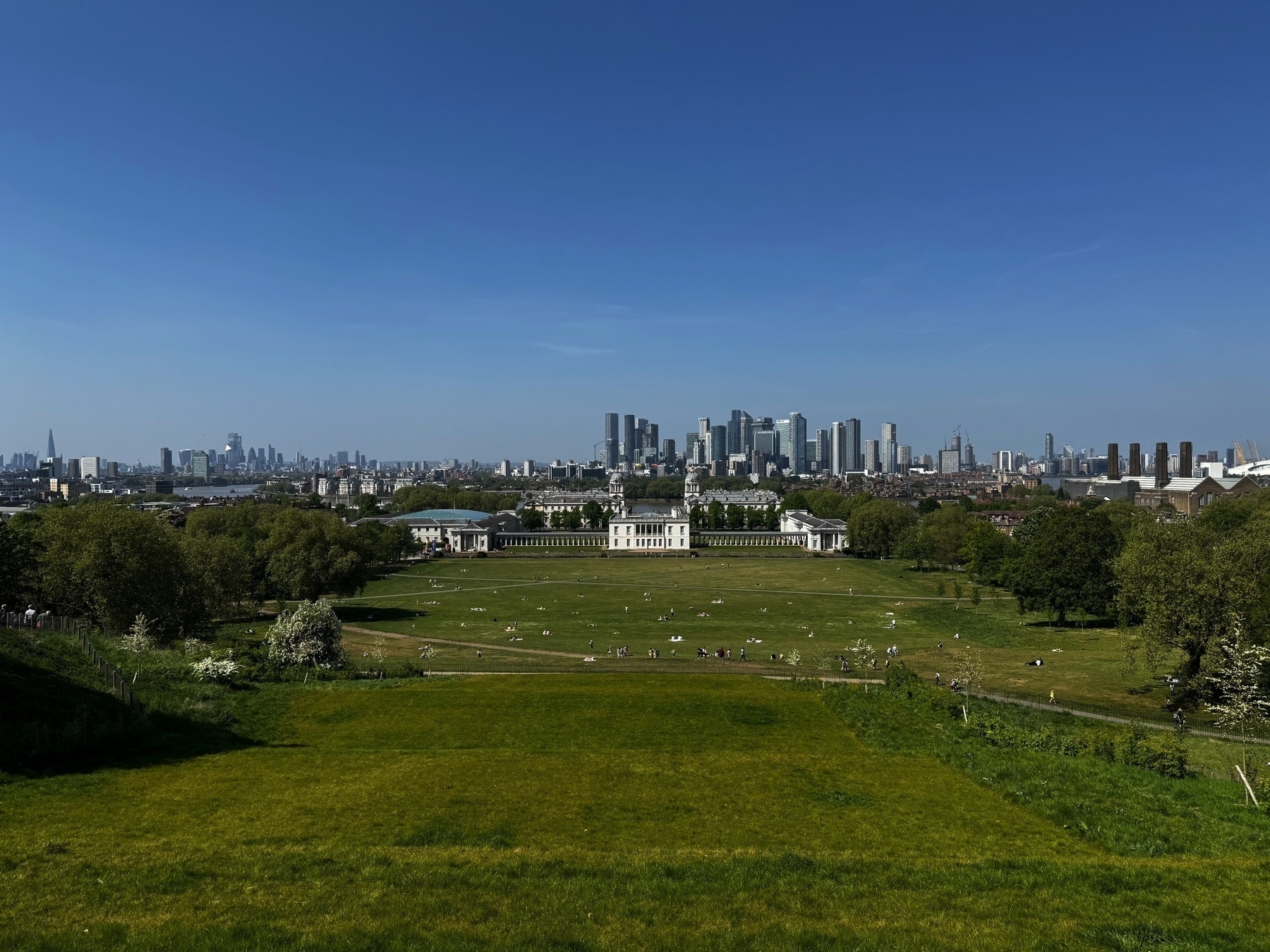

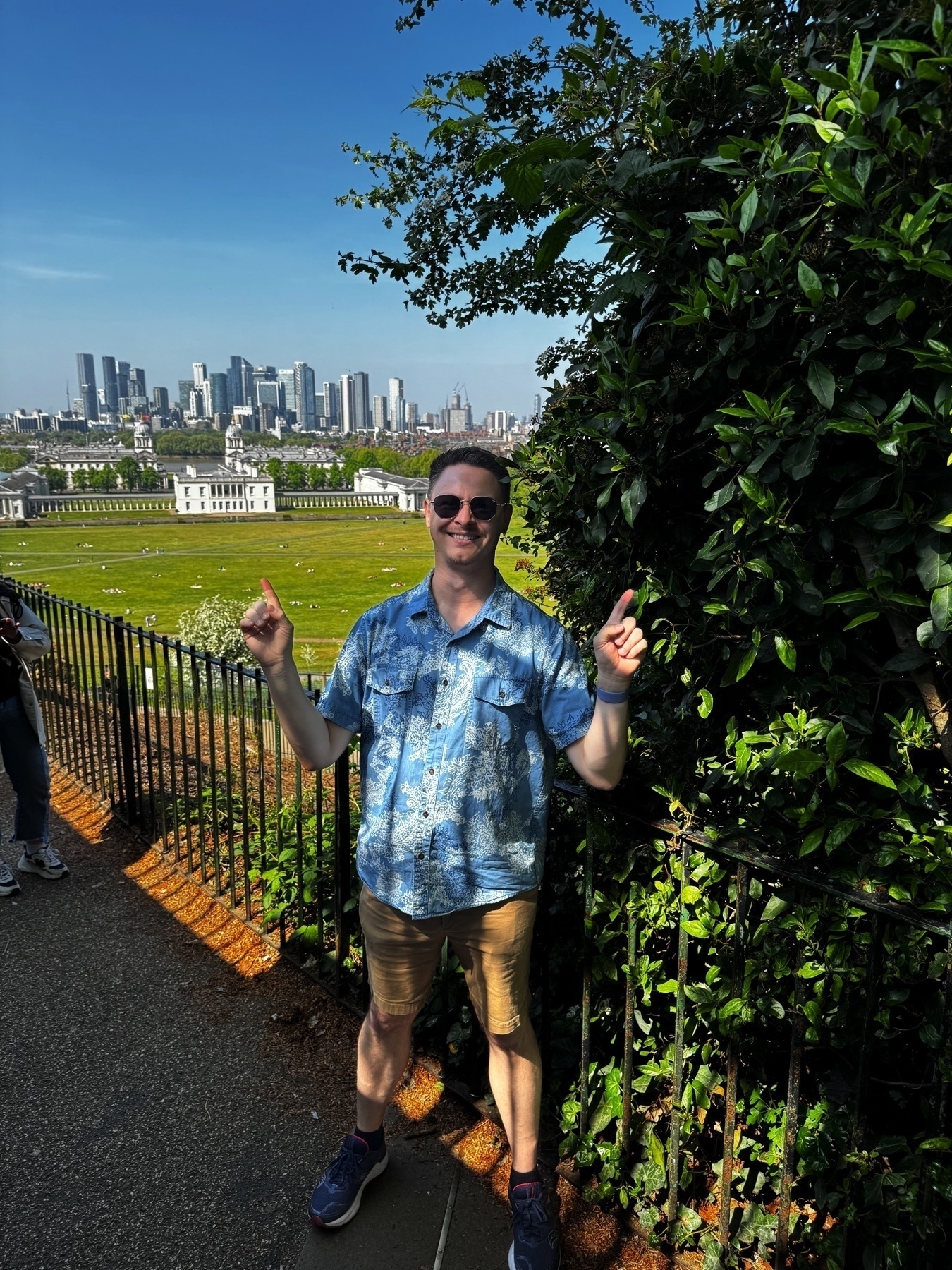
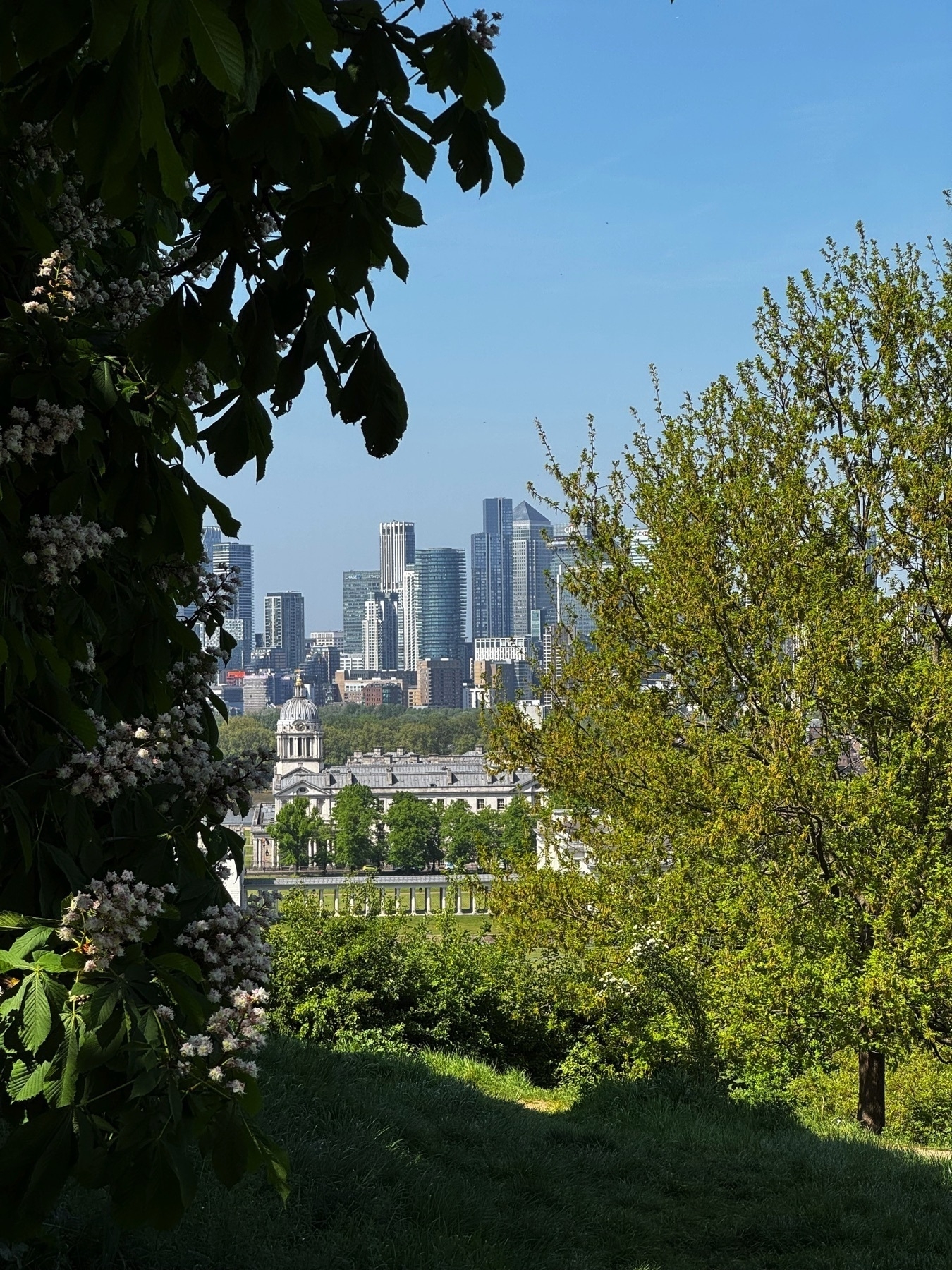
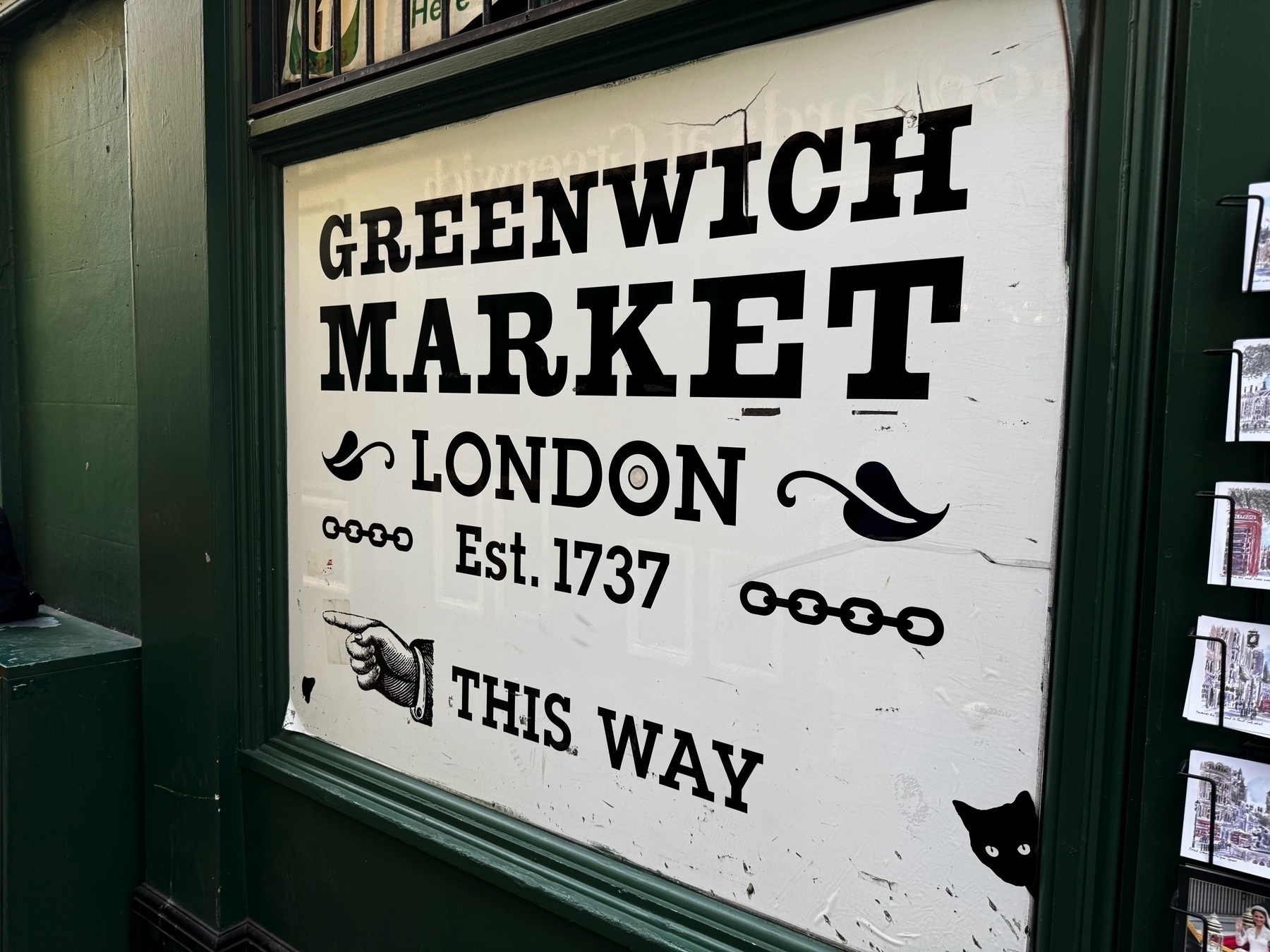
Spain 2025
Here’s an index of all the cities we visited in Spain:
…and a couple other posts I wrote:
We spent four weeks on the mainland and we absolutely loved it. I’m so glad we were able to spend a week each in València, Sevilla, and Málaga. We only had a few days each in Granada and Madrid; more of a whetting of our appetite for those cities.
I can’t wait to go back one day.
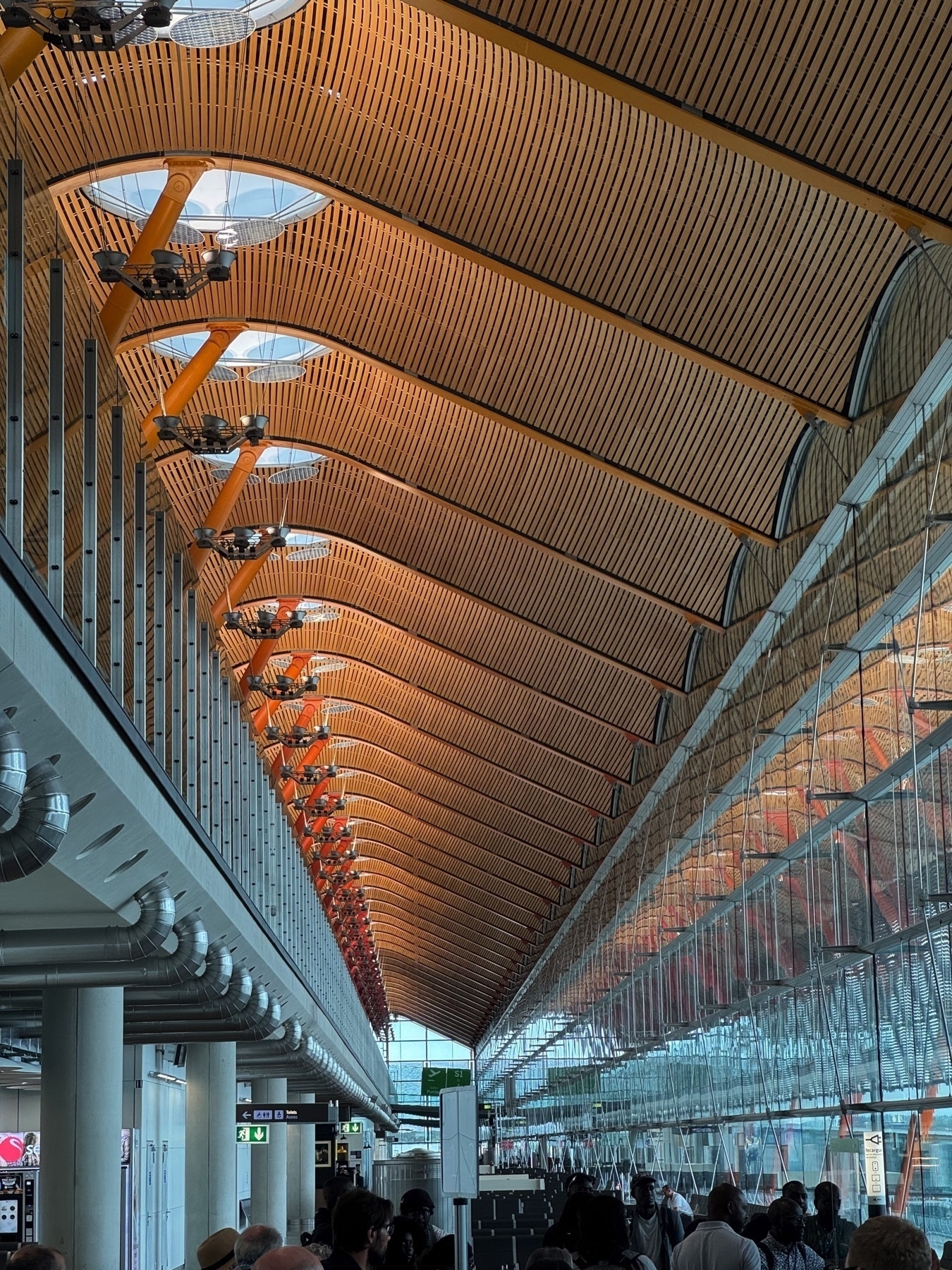
We saw anti-tourist art in most of the Spanish cities we visited. I certainly understand the sentiment—housing, gentrification, cultural erosion, etc.—these are real problems. On the flip side, we saw shops and talked to locals that were happy to have the extra business. It’s a tough balance.
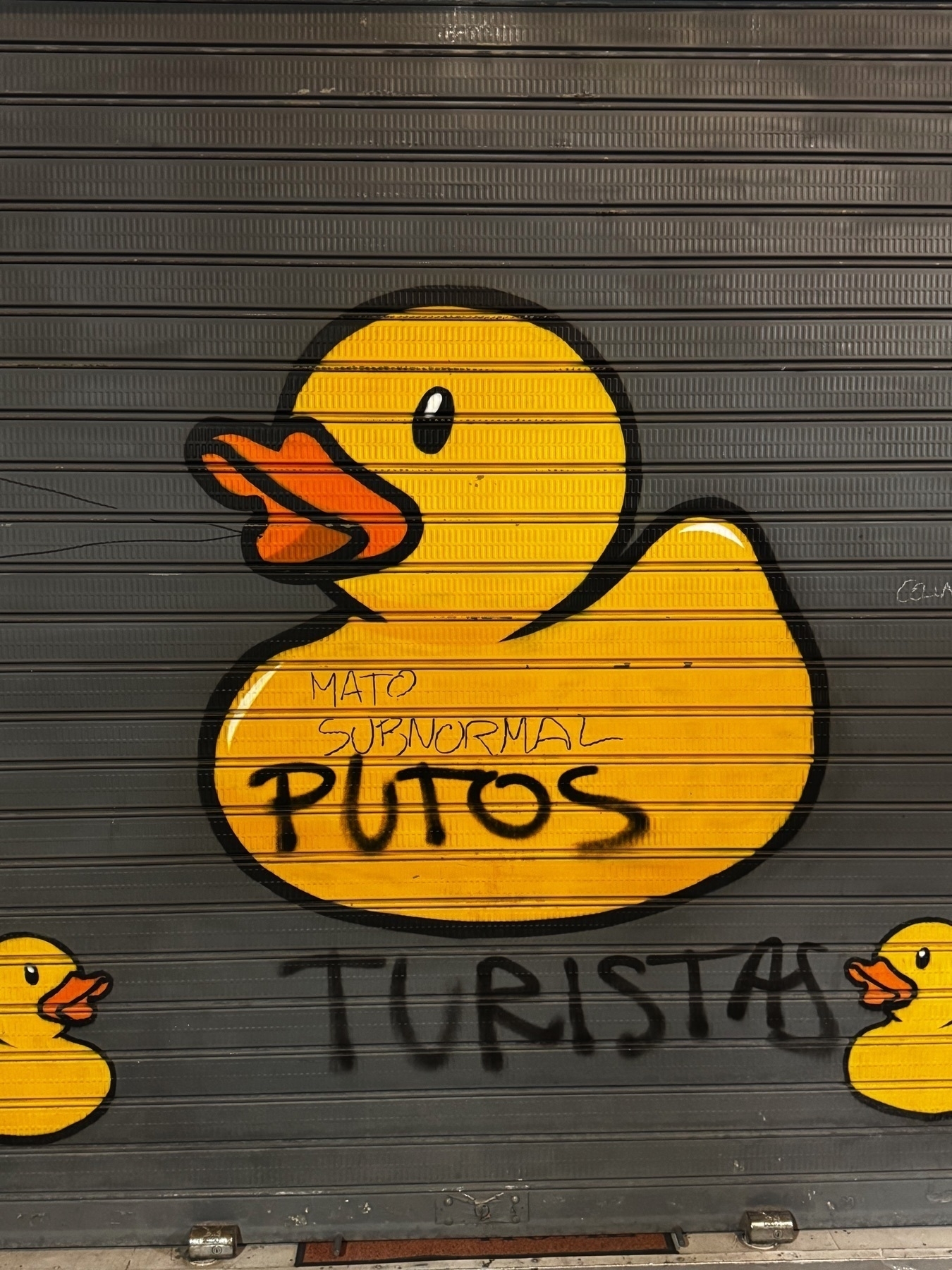
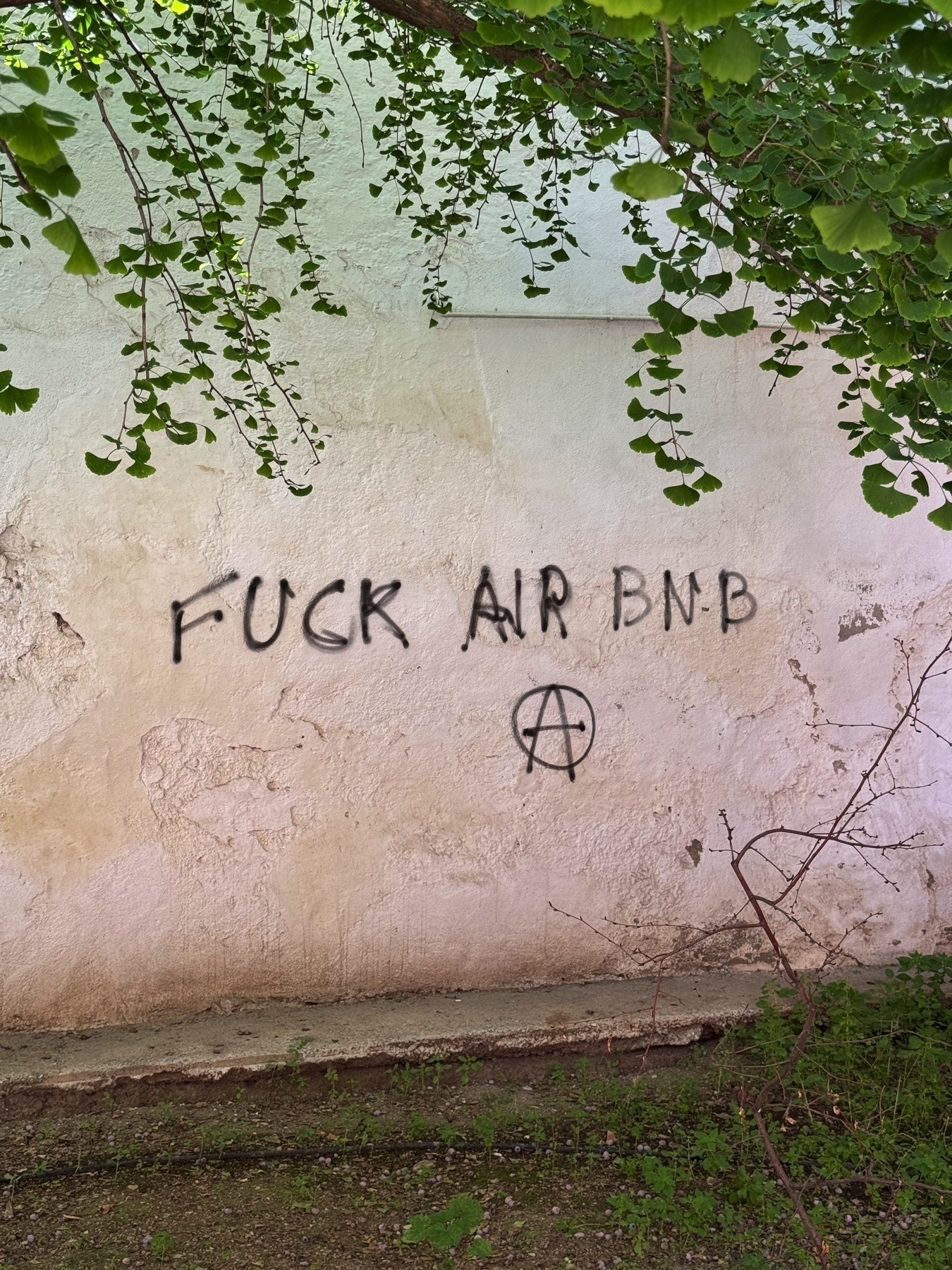
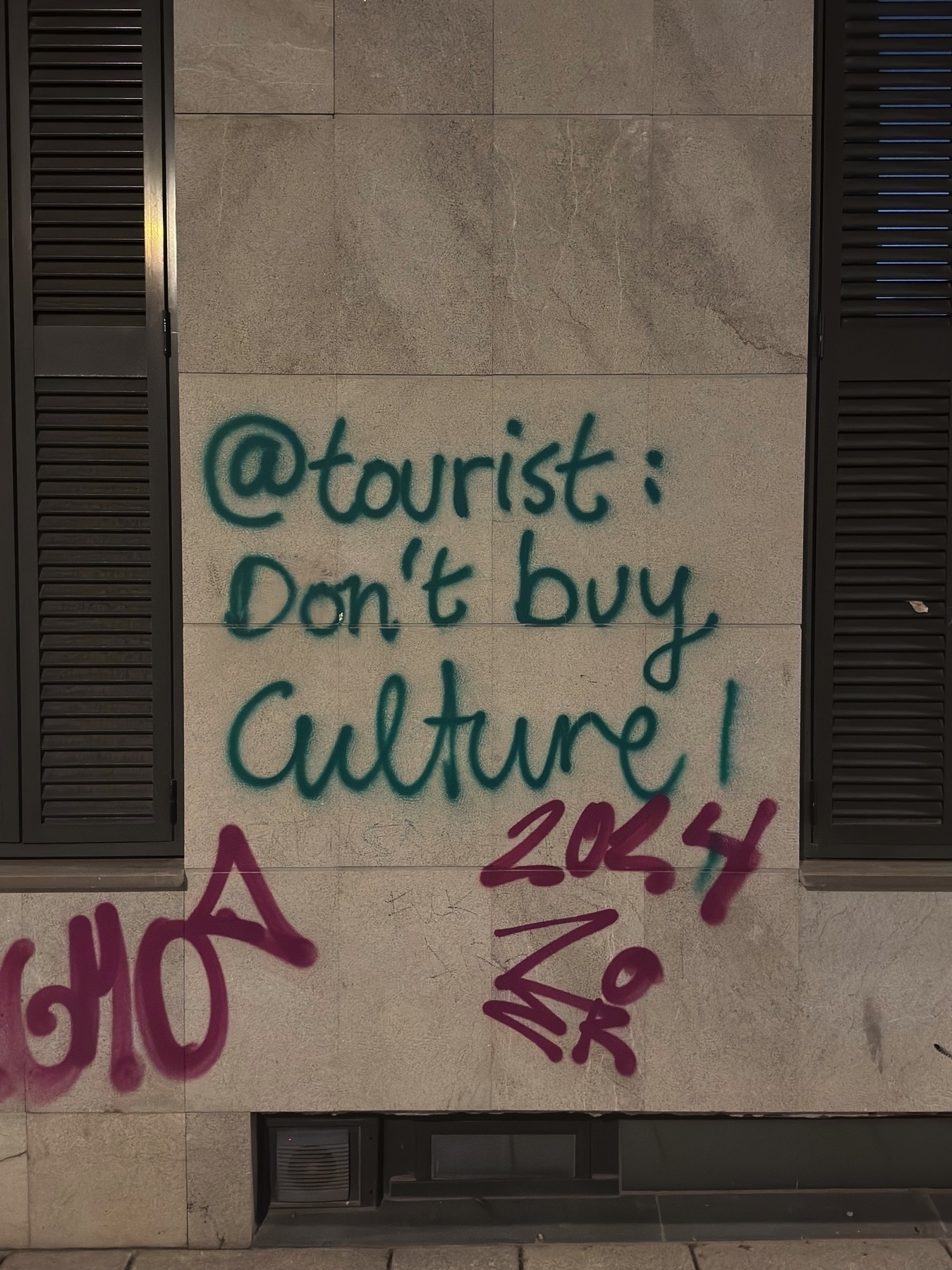
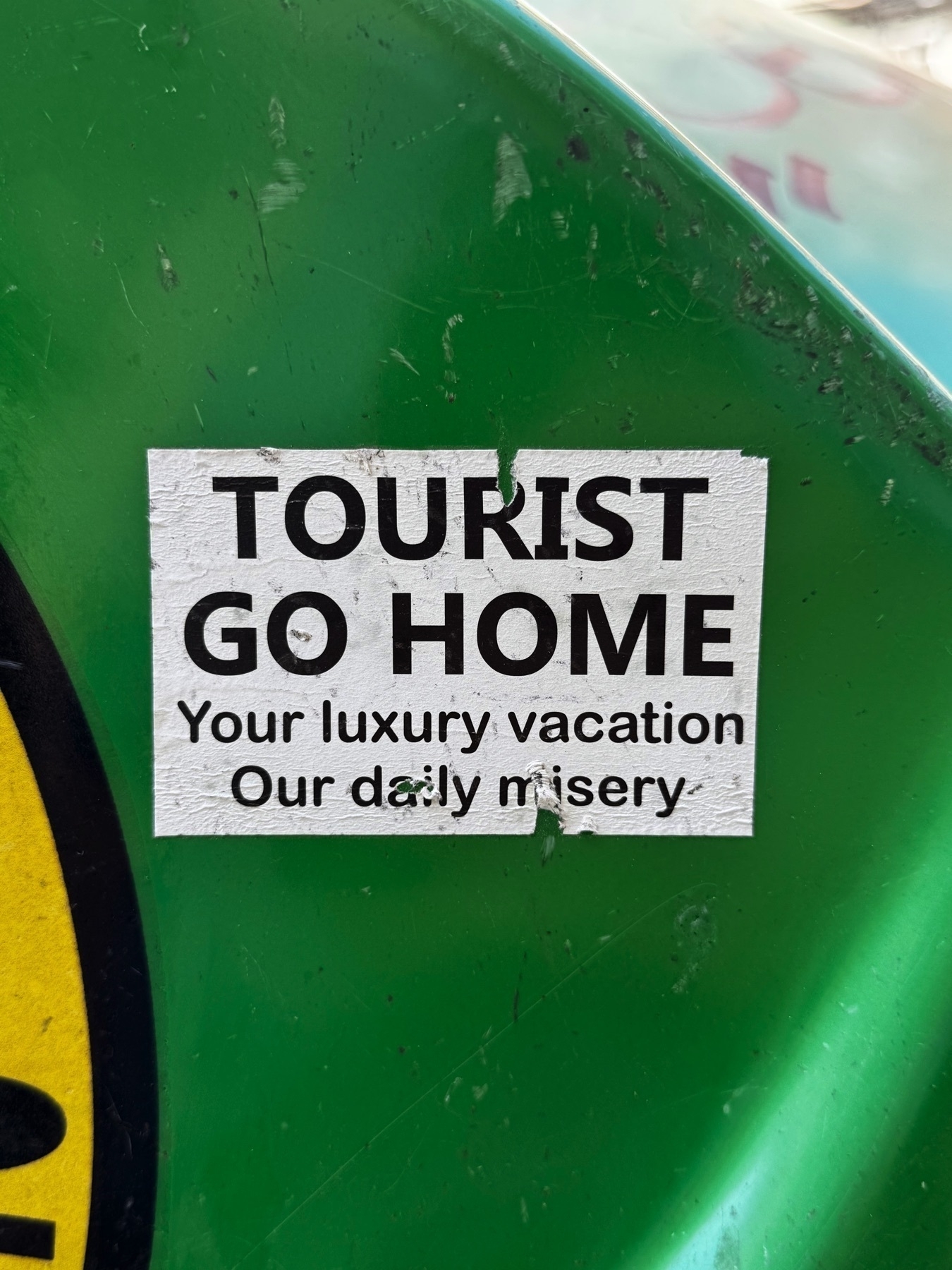
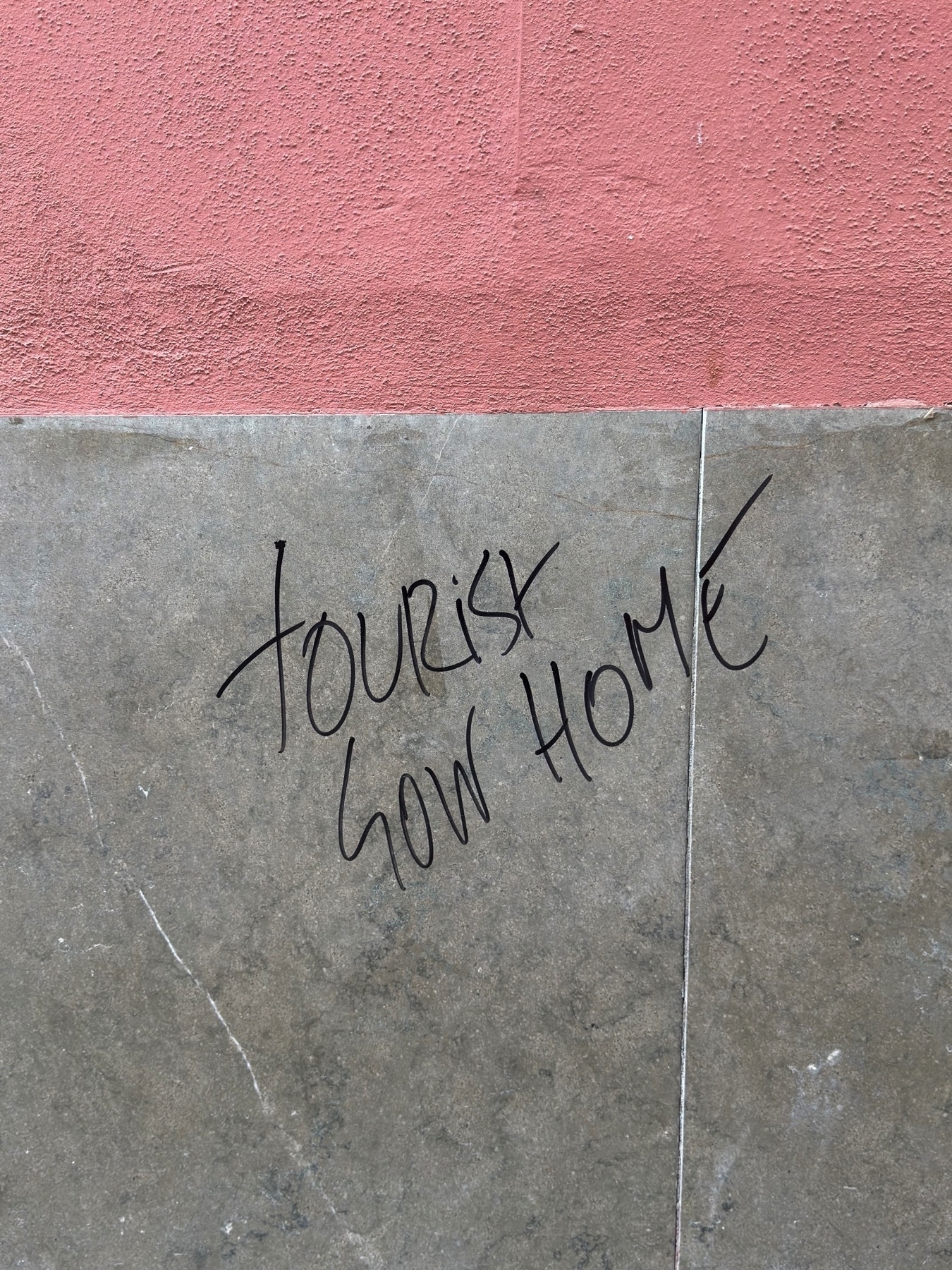
Madrid
We had so much more to explore in Madrid and so little time.
Here’s what I’ve posted about Madrid:
- Taberna La Concha (One of our favorite restaurants)
- Museo Nacional del Prado (The art museum to visit)
- Taberna Sanlúcar (Delicious cuisine from Cádiz)
- Mercado de San Miguel (A market with all food, no groceries)
- Pastelería El Riojano (Delectable lady fingers with chocolate)
- Monasterio del Corpus Christi las Carboneras (Nun cookies, for us)
- Mercado Jamón Ibérico (Our last jamón 100% ibérico de bellota)
- Royal Palace (The largest active palace?)
- More food shoutouts (Taberna Tempranillo, Casa del Abuelo, and Casa Revuelta get special shout-outs)
- Walking around the city (It’s so large!)
We were only in Madrid for three nights (and I wasn’t feeling too hot for one of them), so we didn’t get to experience as much as the city has to offer.
The only place we went back to twice was Taberna La Concha, which had great Vermouth and fun servers.
I’m so glad my dad suggested Museo Nacional del Prado—it’s a choose your own adventure with audio guides and worth the time.
I get the sense that our Airbnb was not legal, but that’s for a post for another day.
Overall, Madrid is the easiest city to fly in and out of in Spain, and I’m excited to visit again while coming in and out of the country.
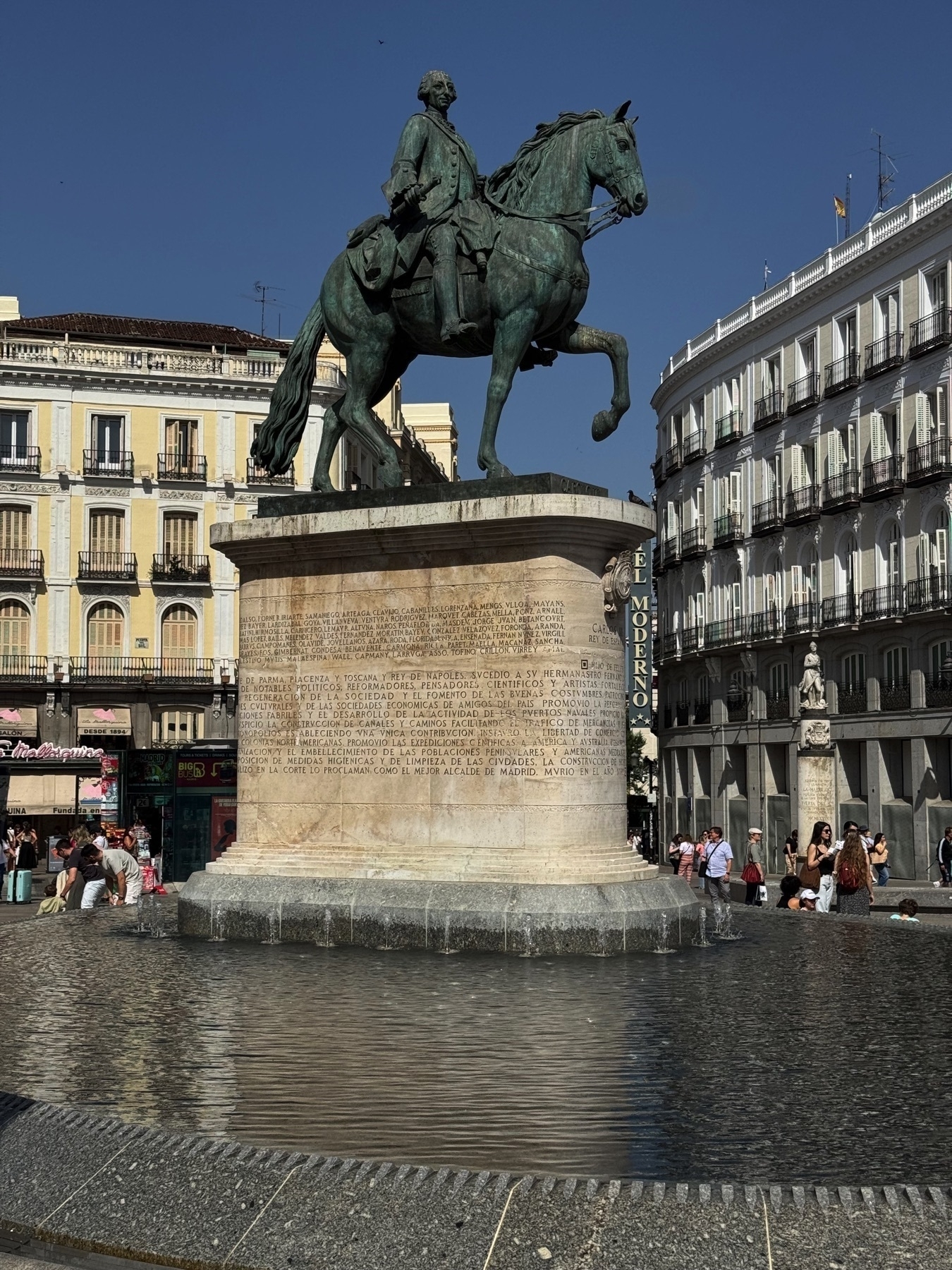
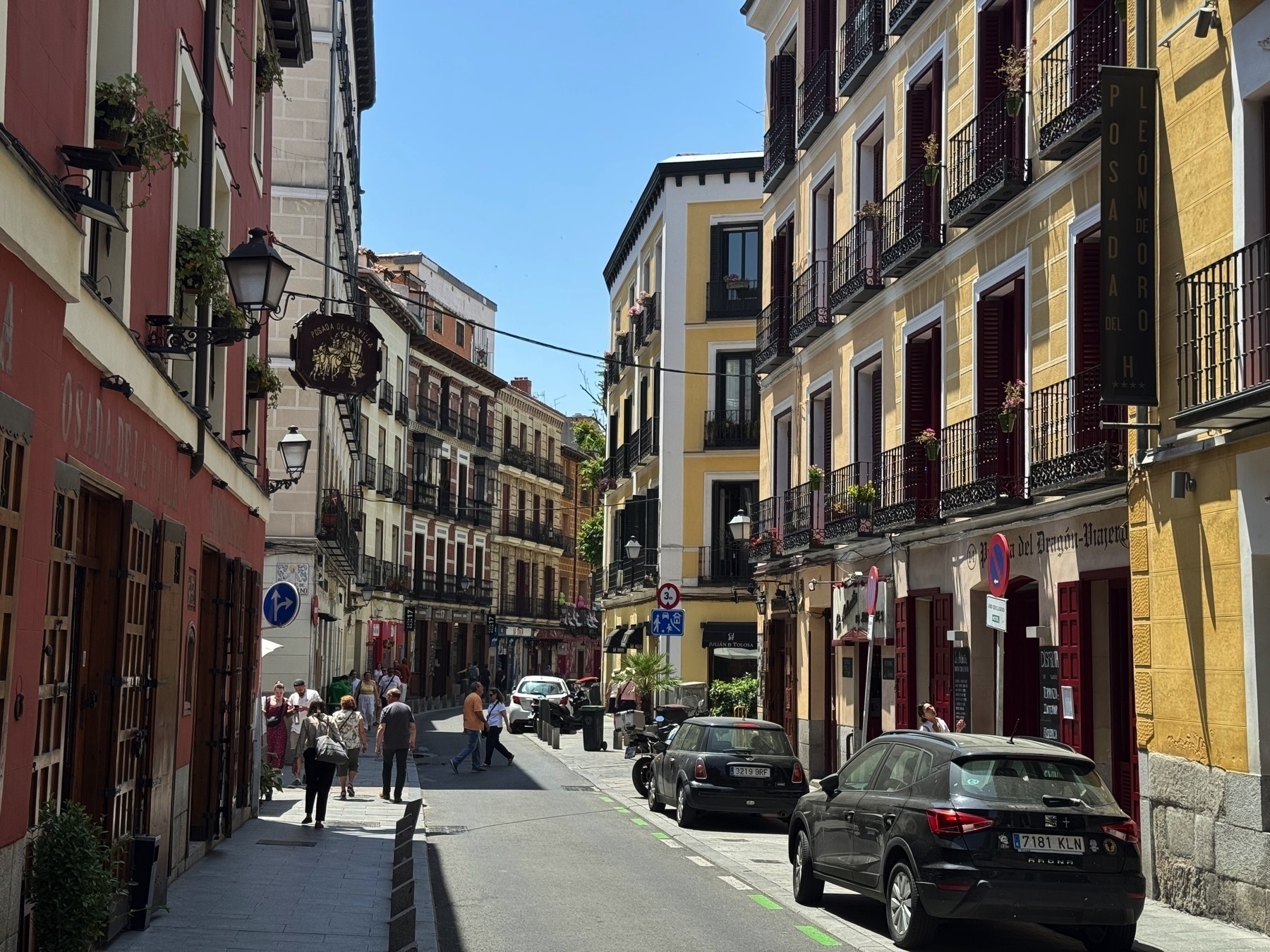
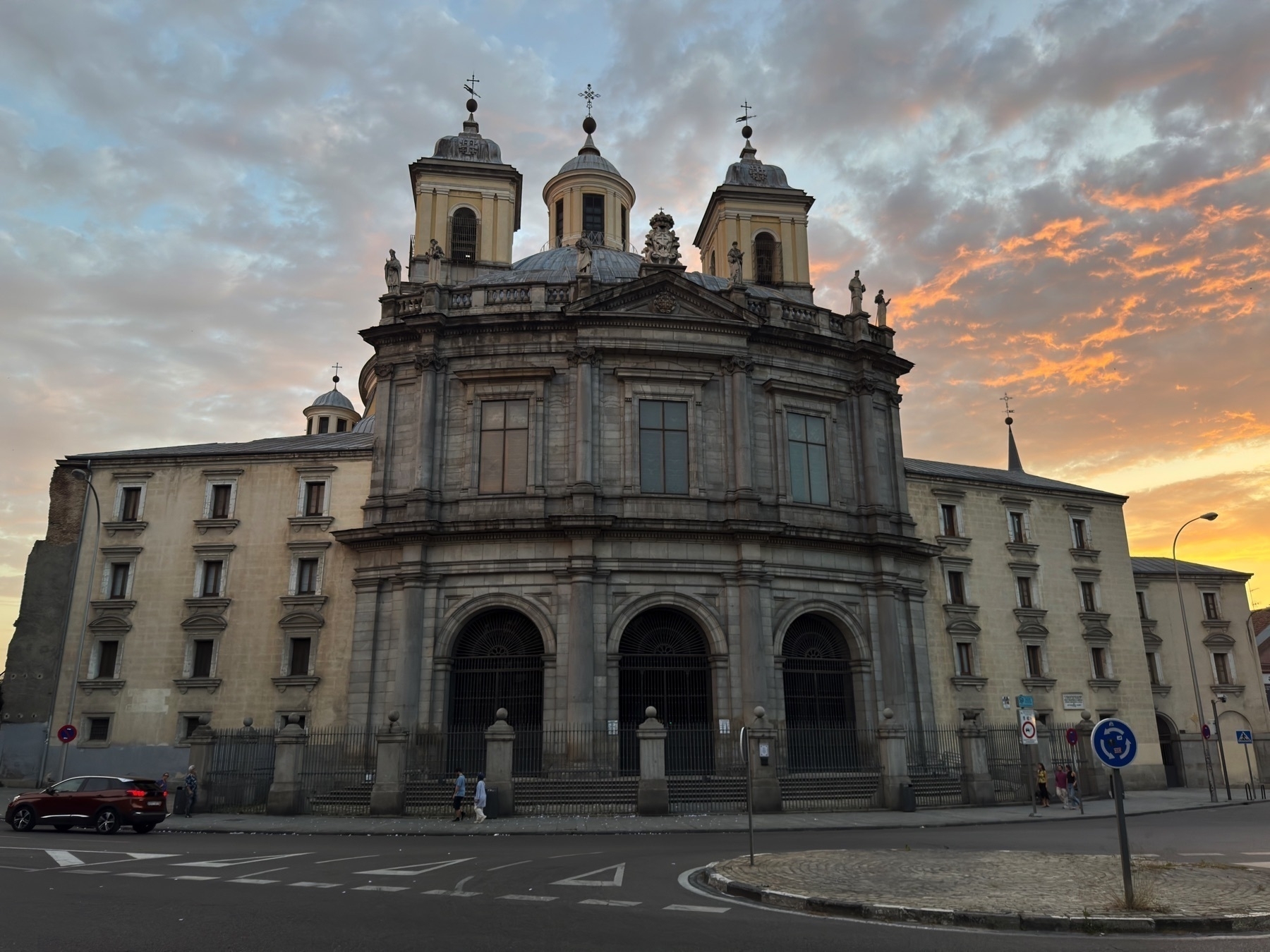
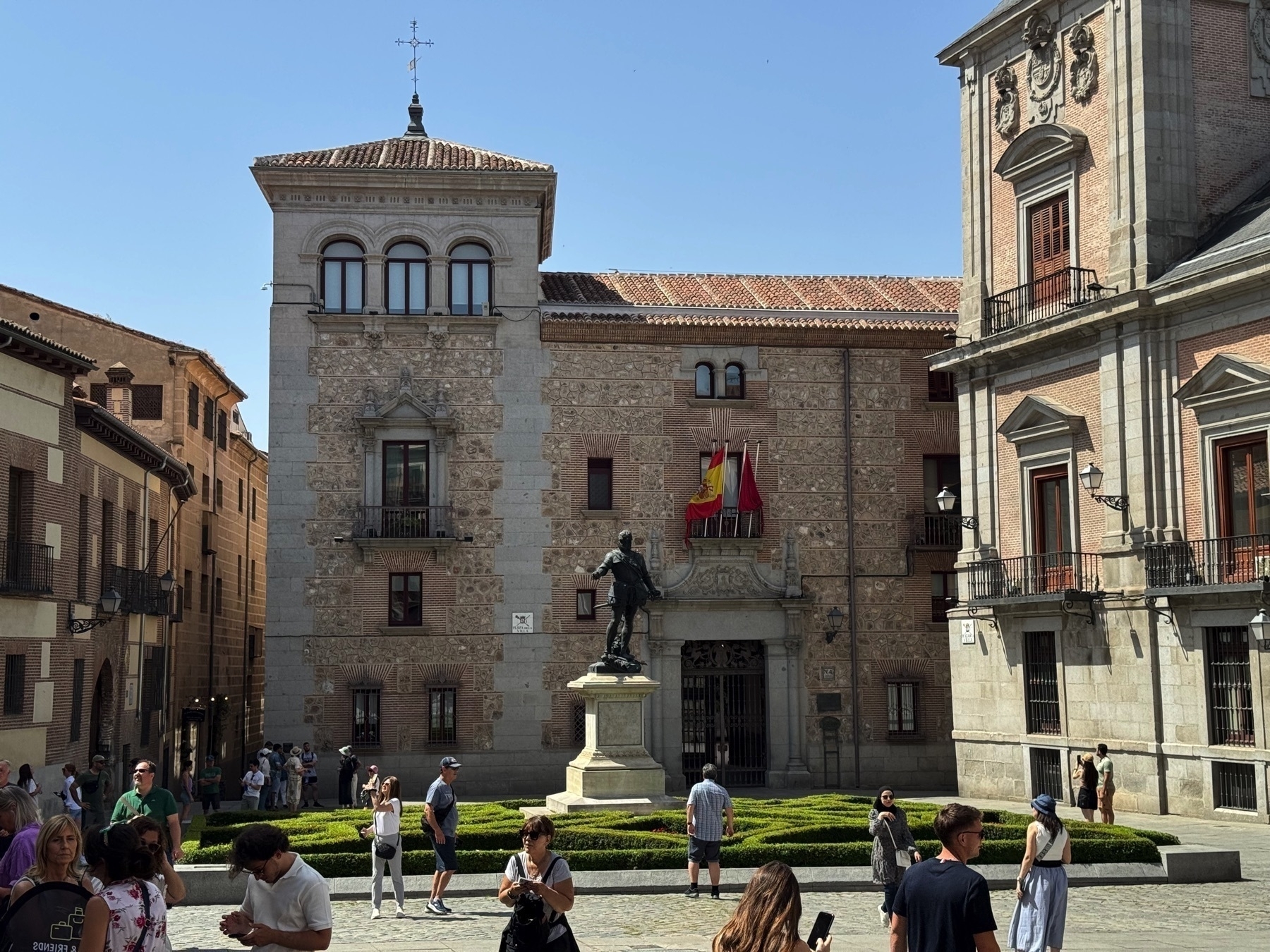
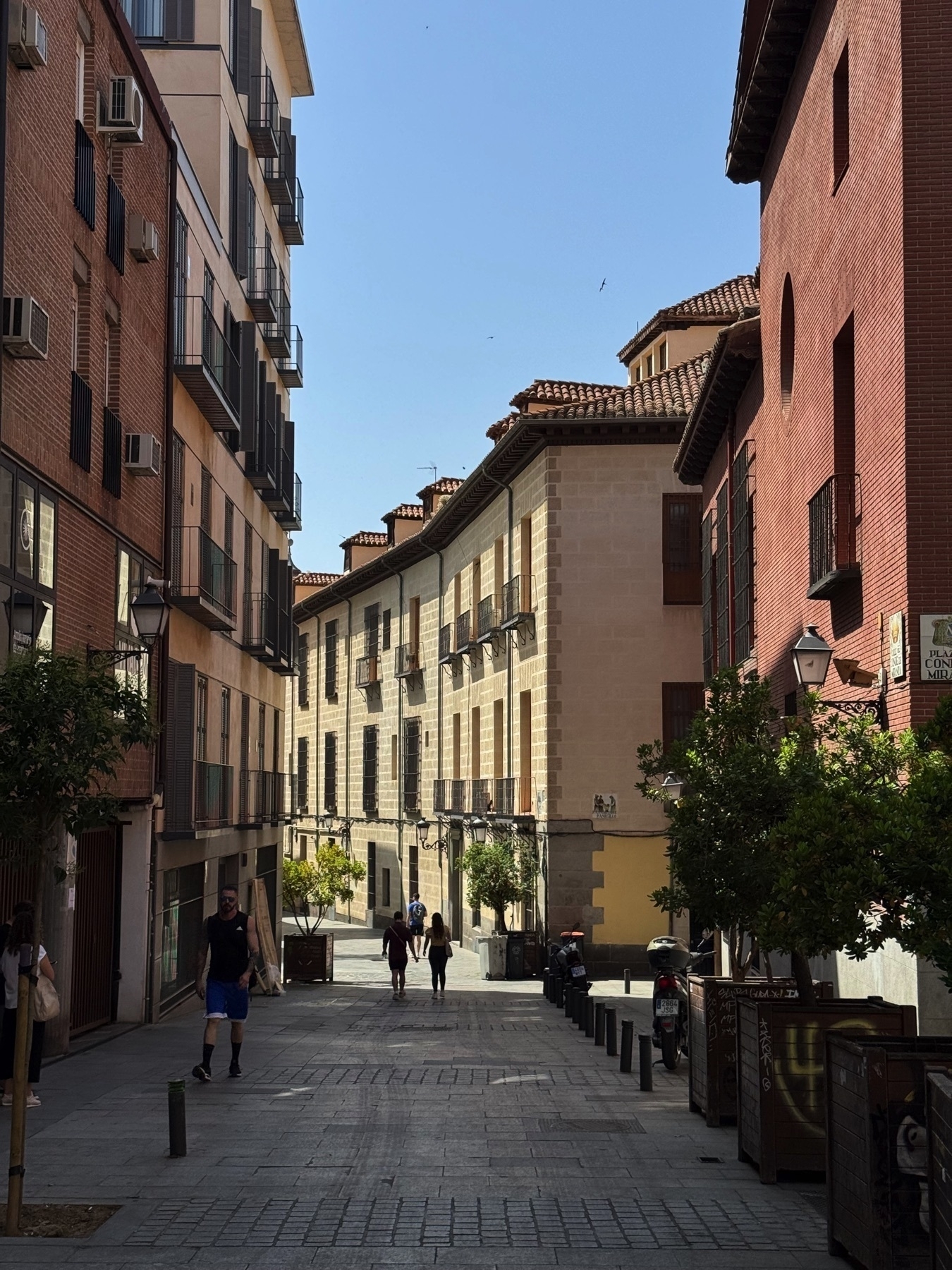
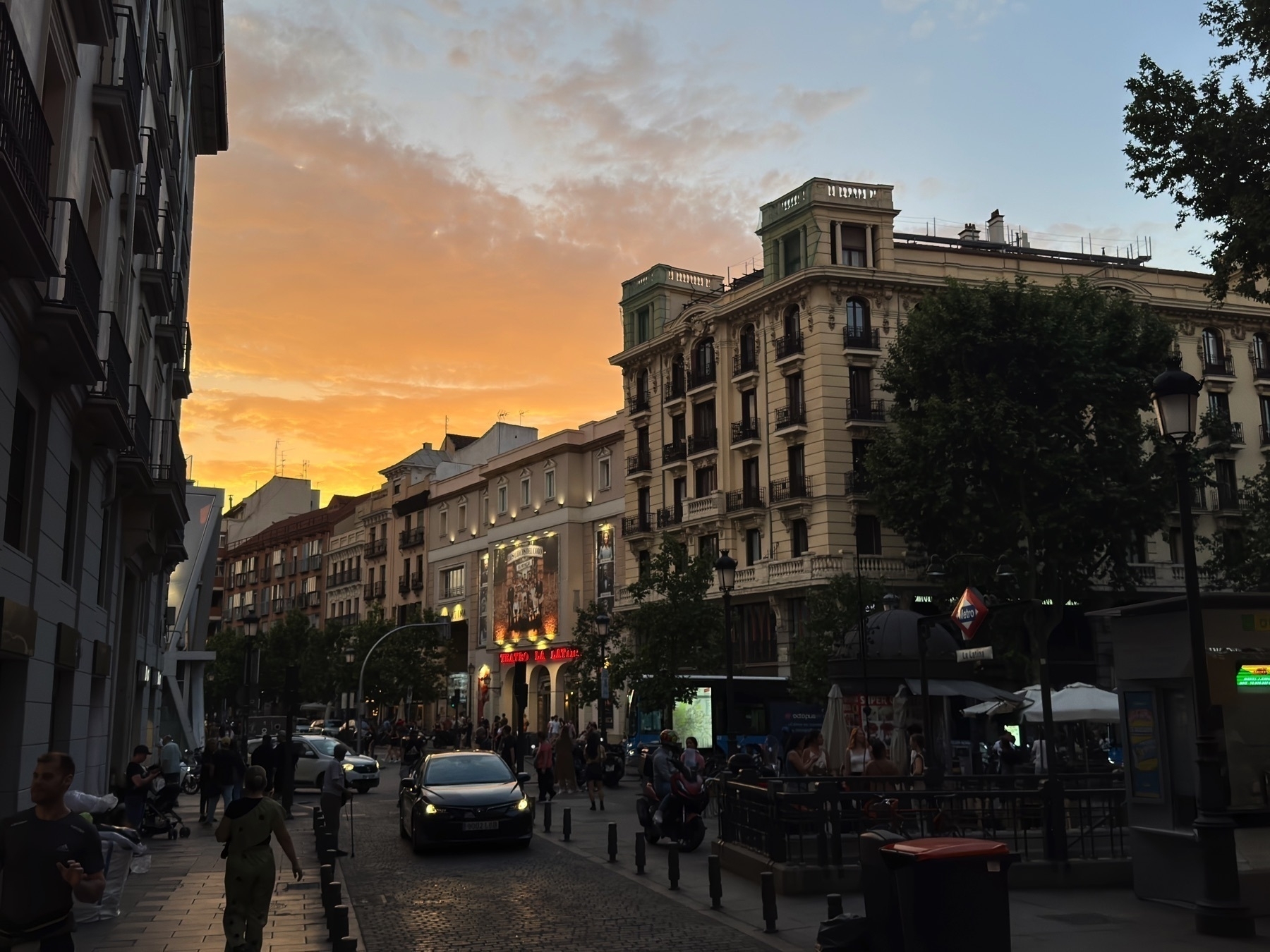

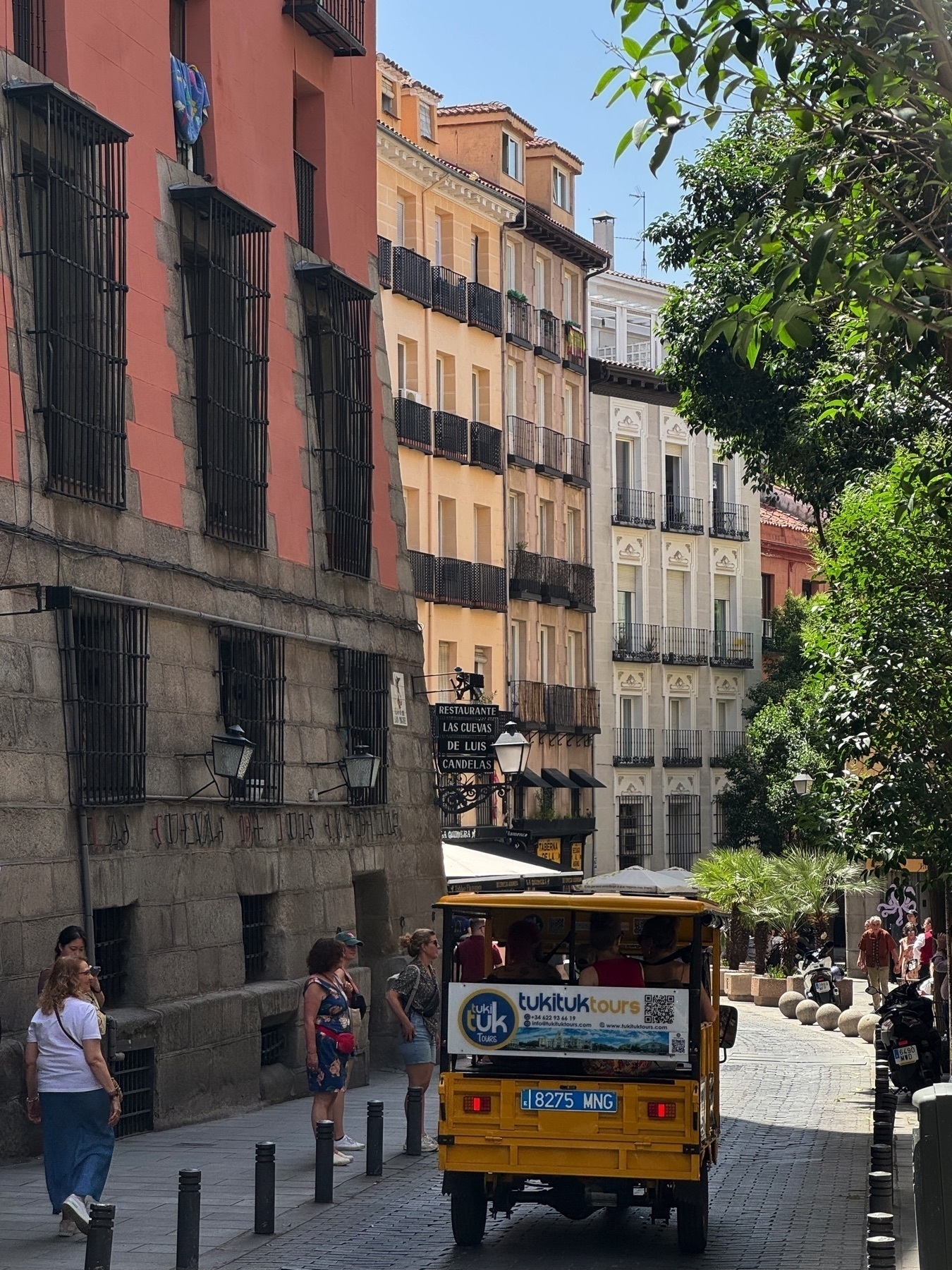
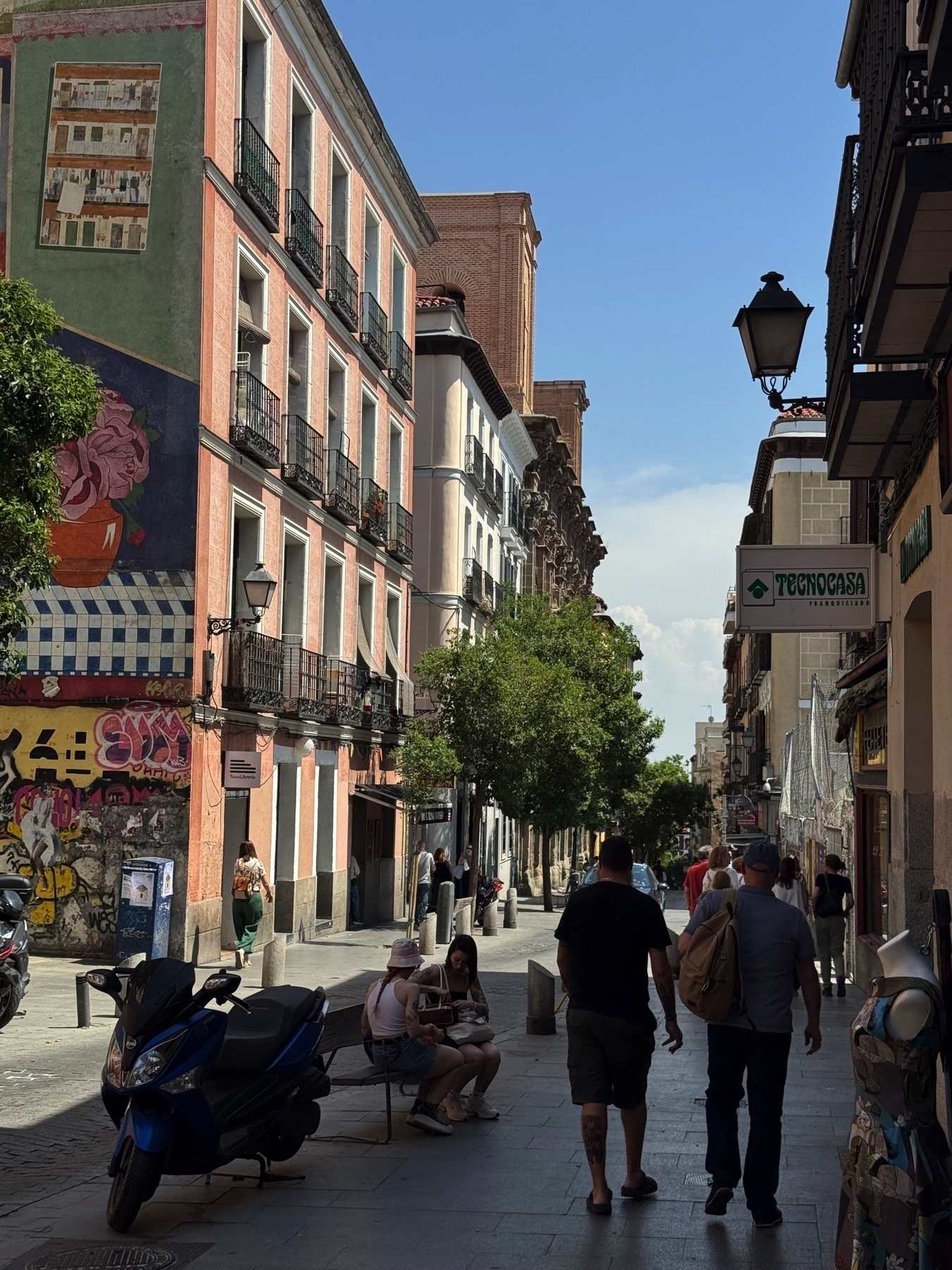
Some more shots from walking around Madrid.
It surprised me that Madrid has rolling hills throughout the city—it’s not all flat! It also felt endlessly large—we were only there for three nights, so we didn’t get to explore much more than ~30 minutes walking distance away from our apartment.
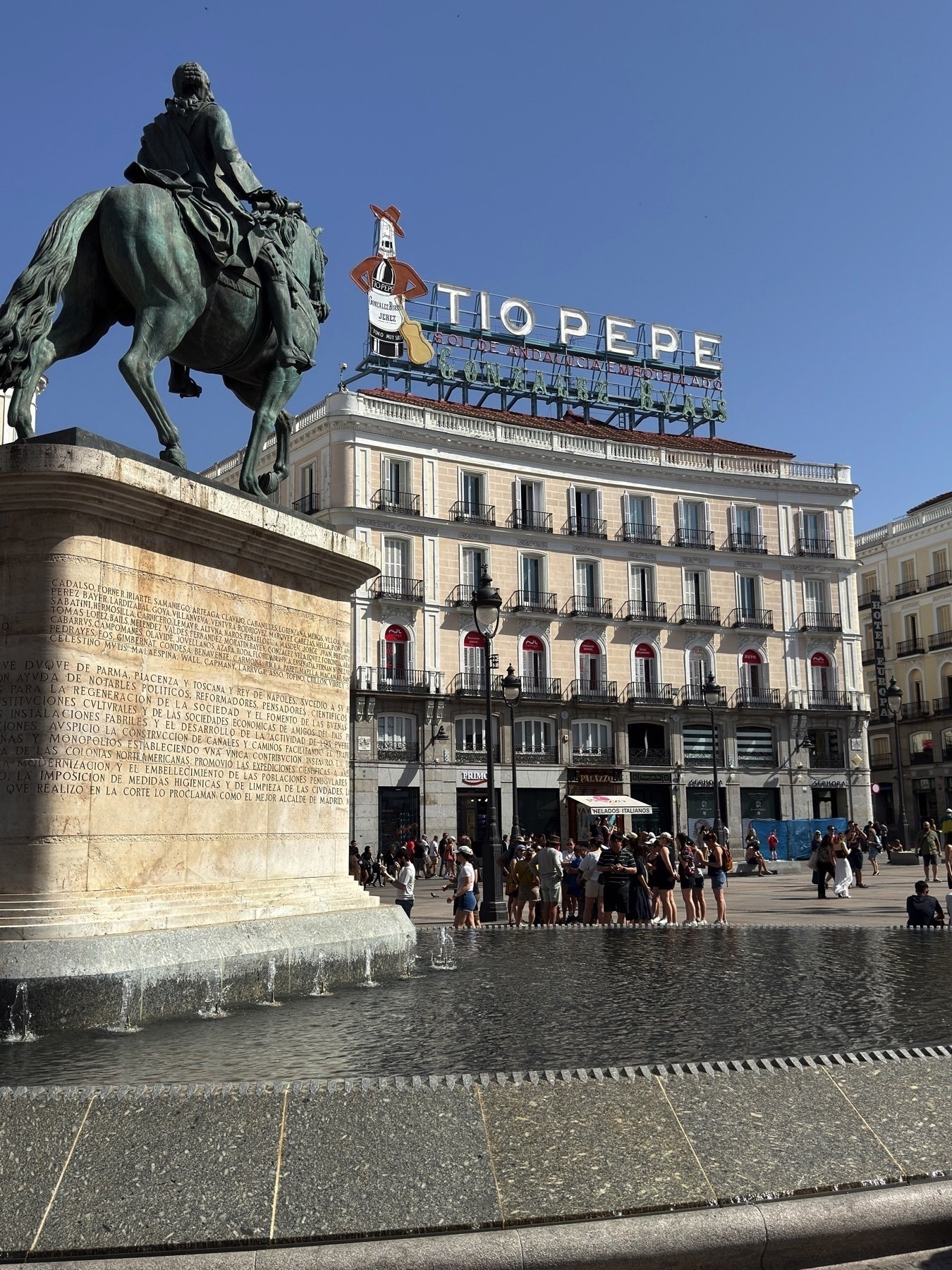
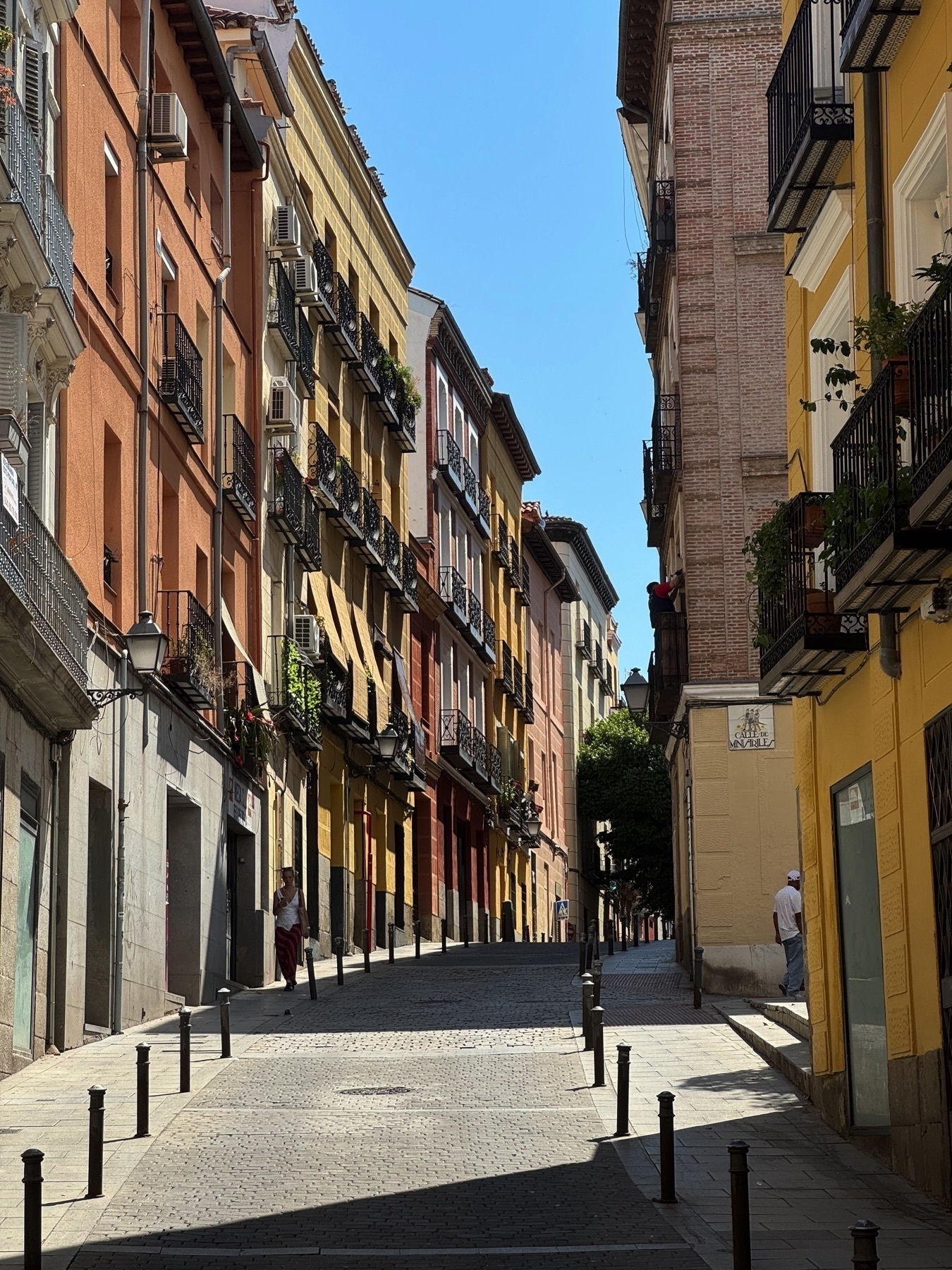
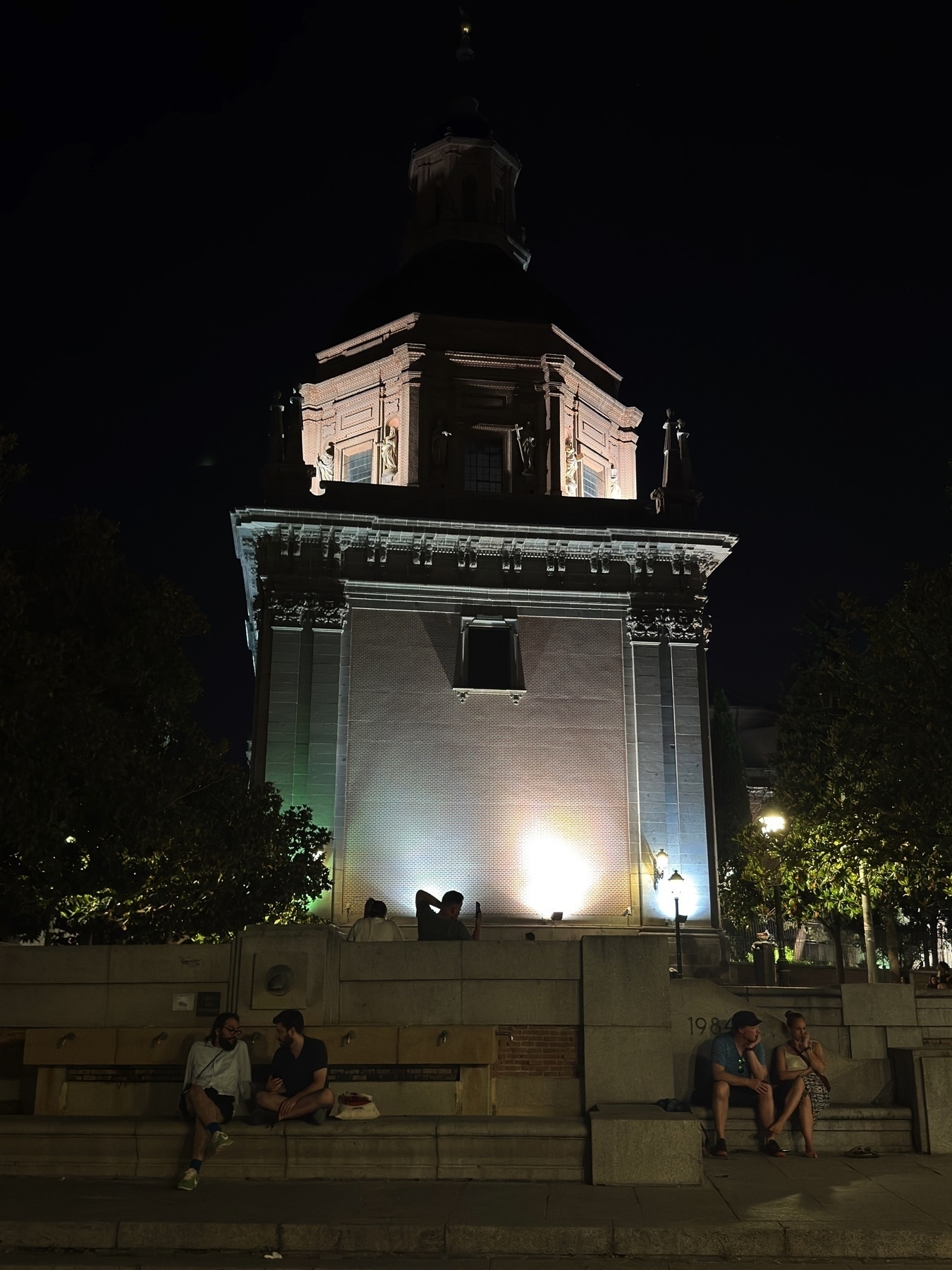
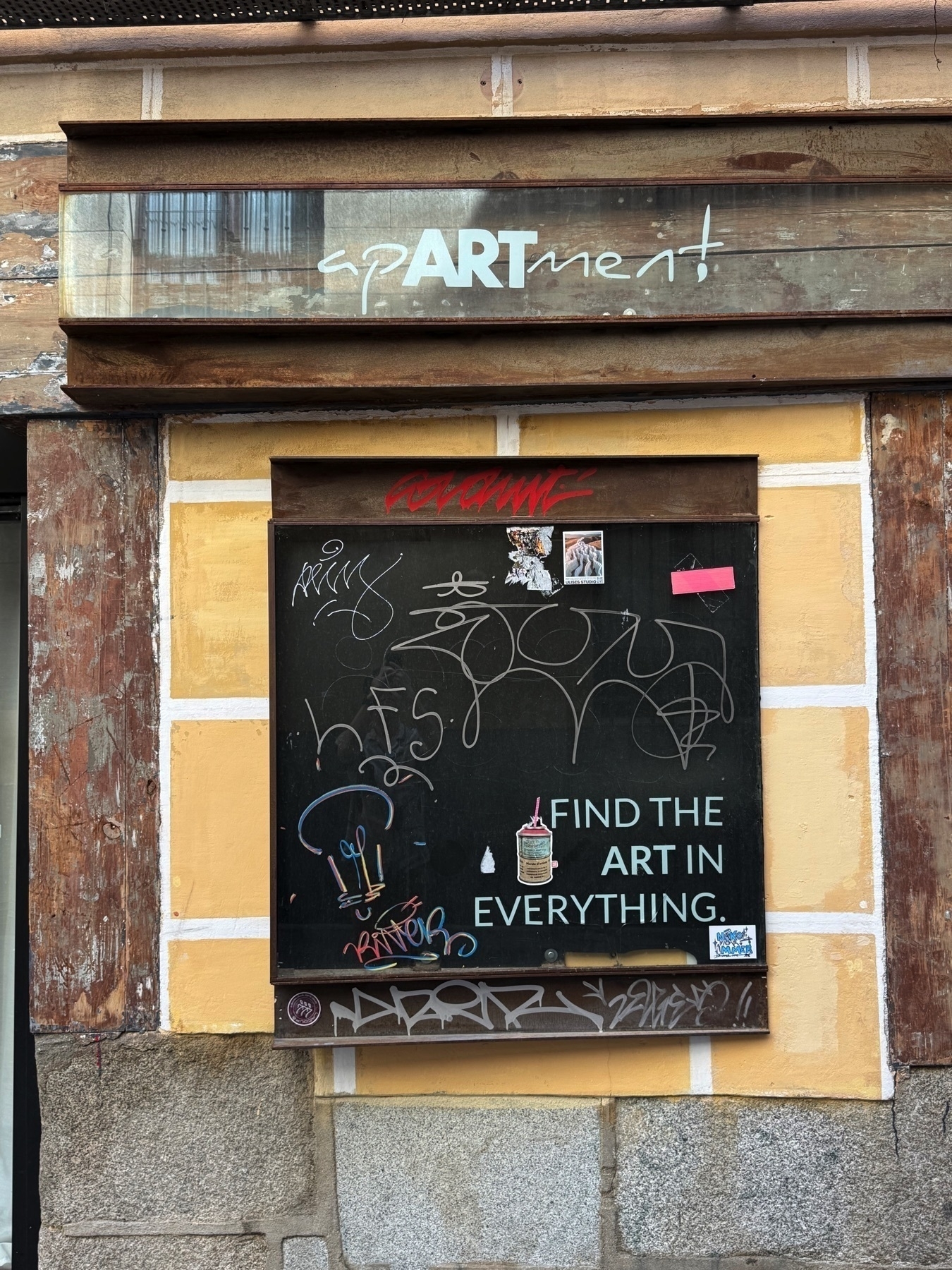
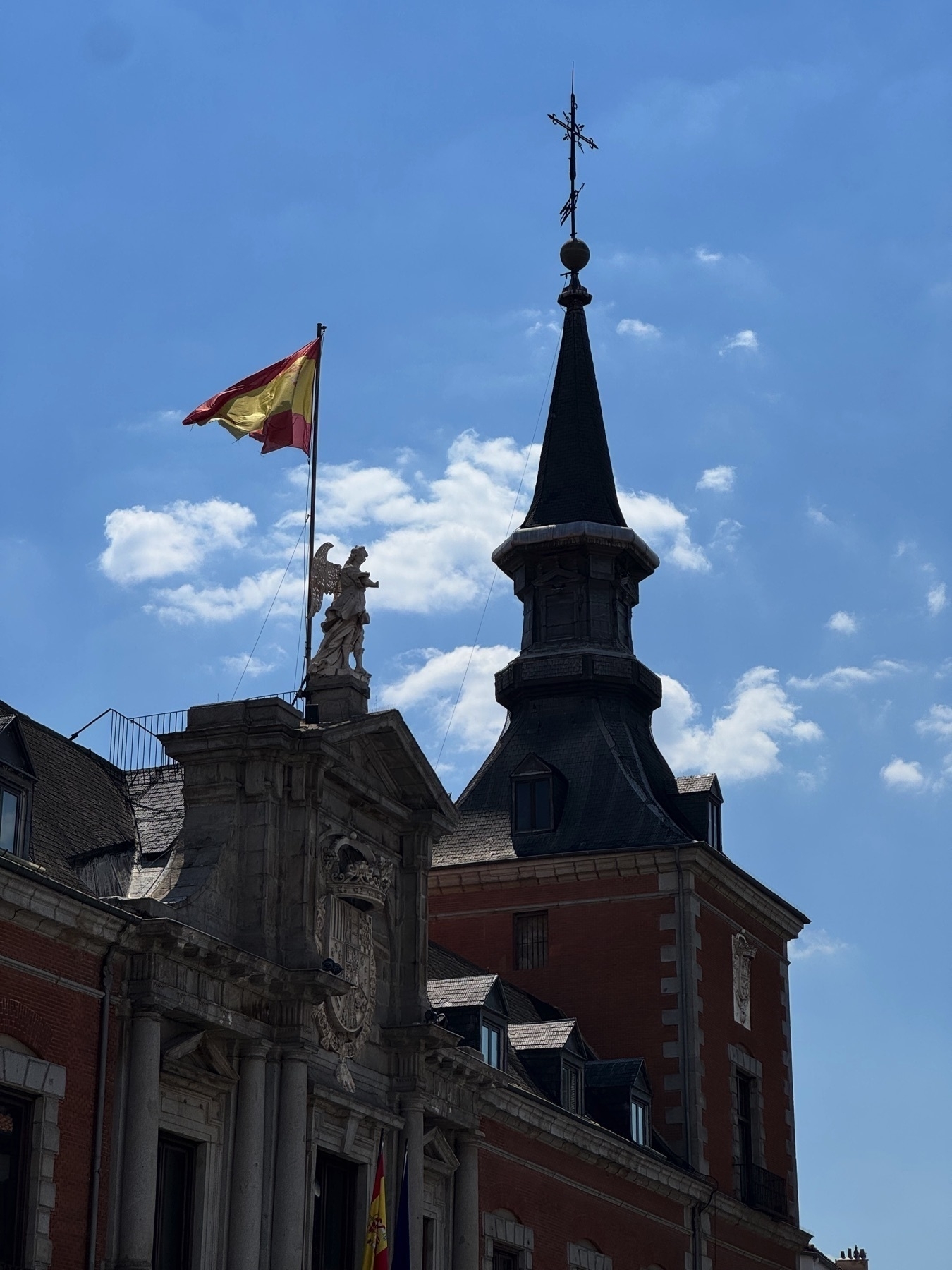
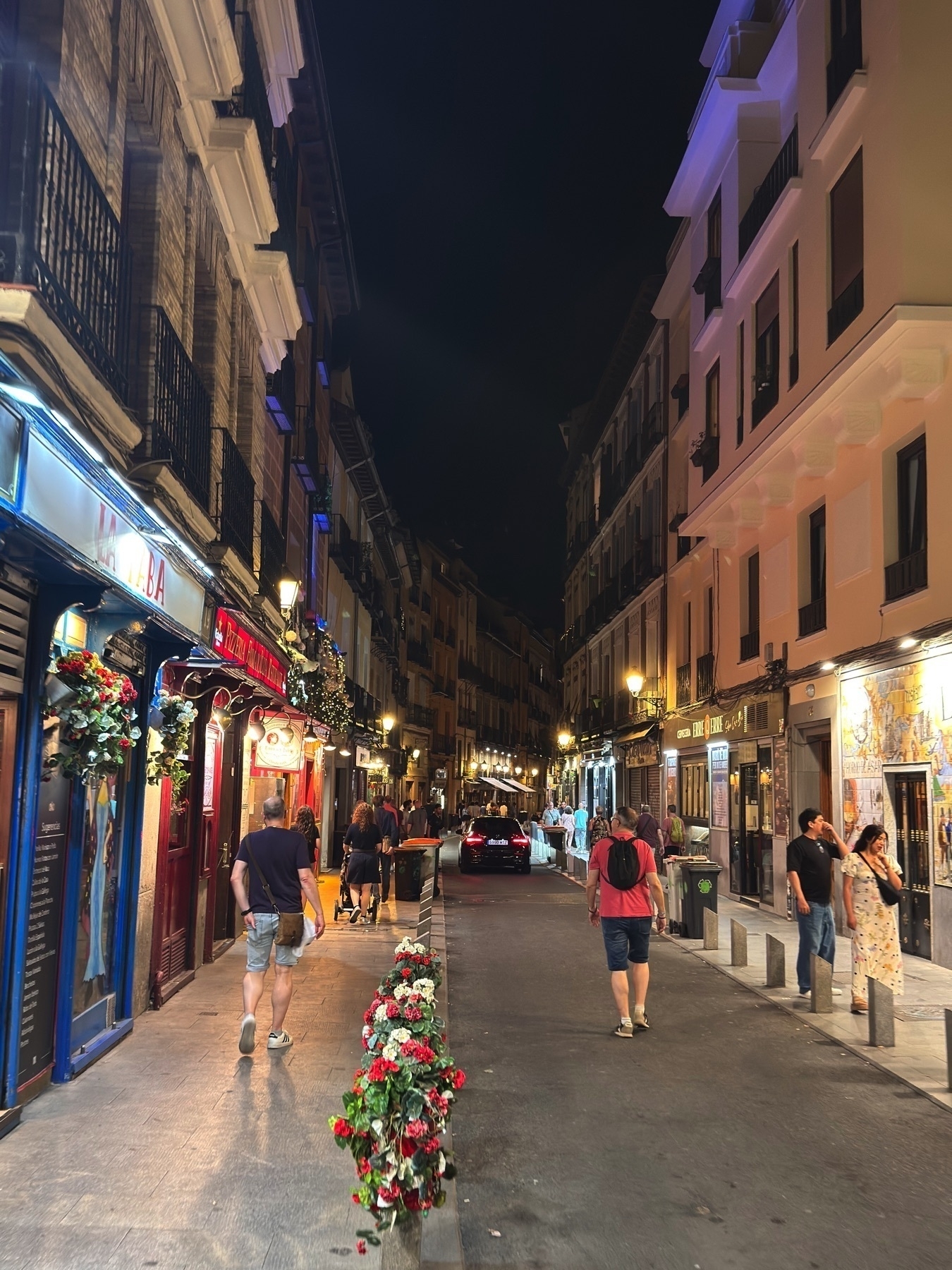
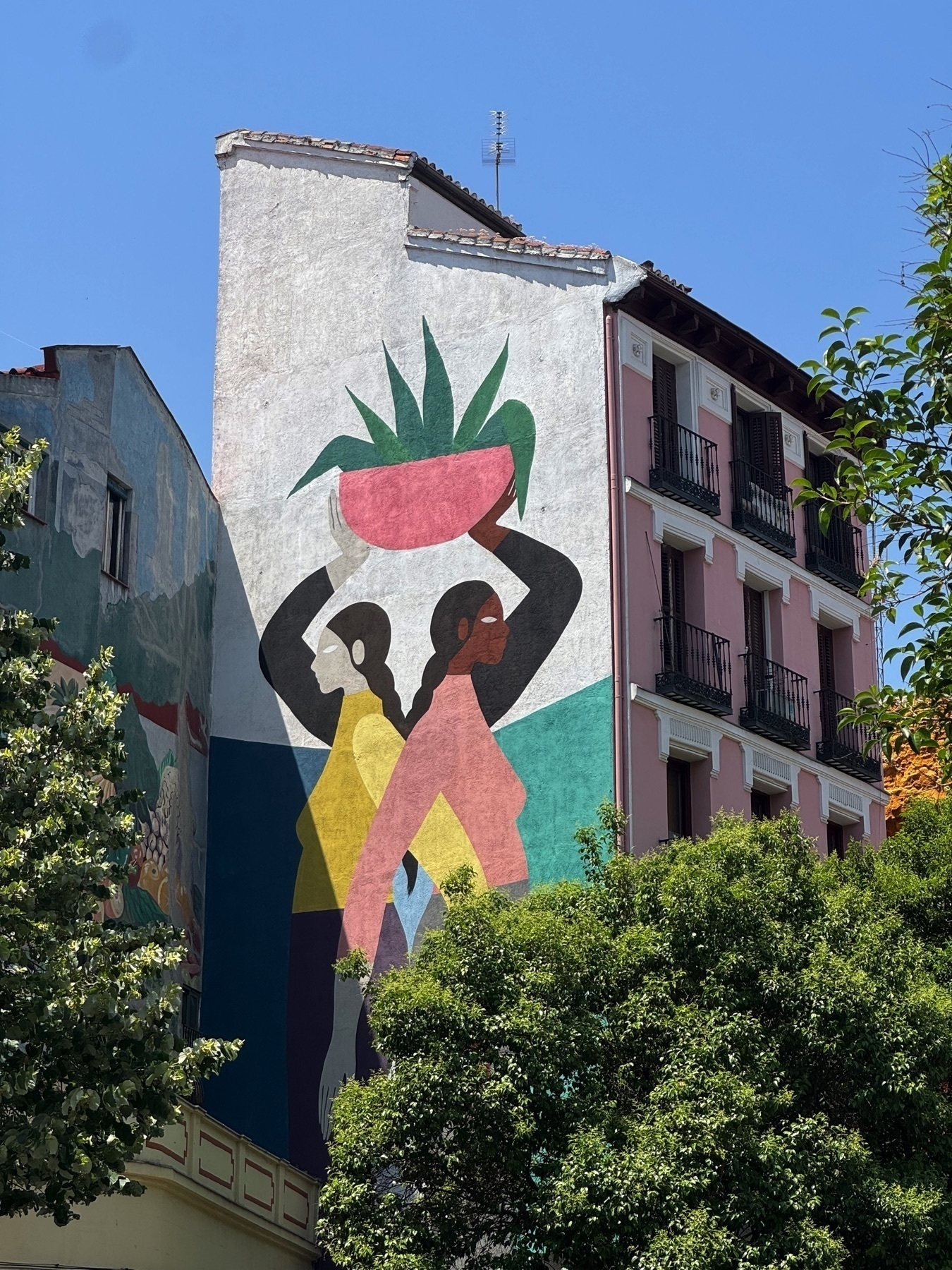
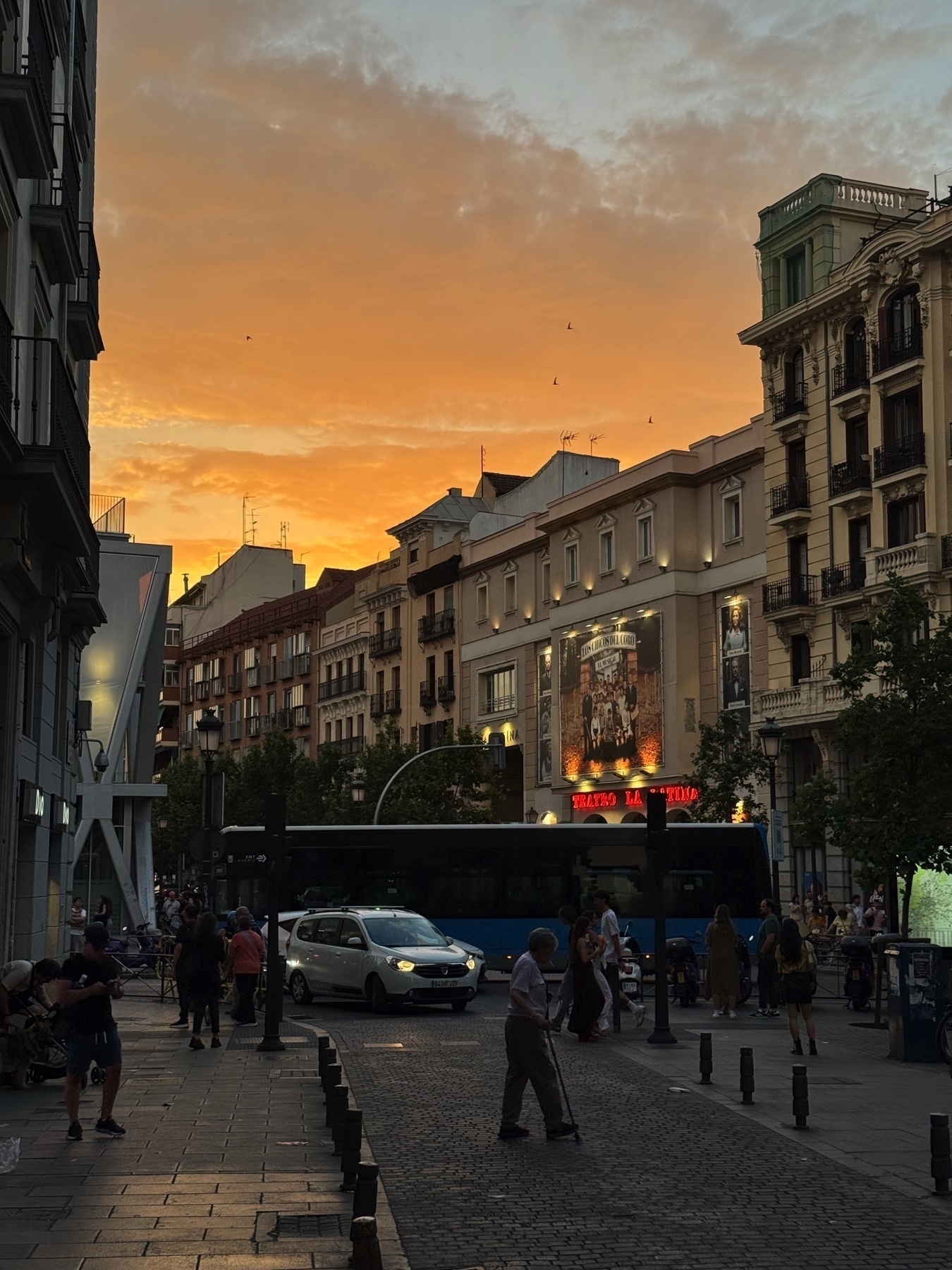
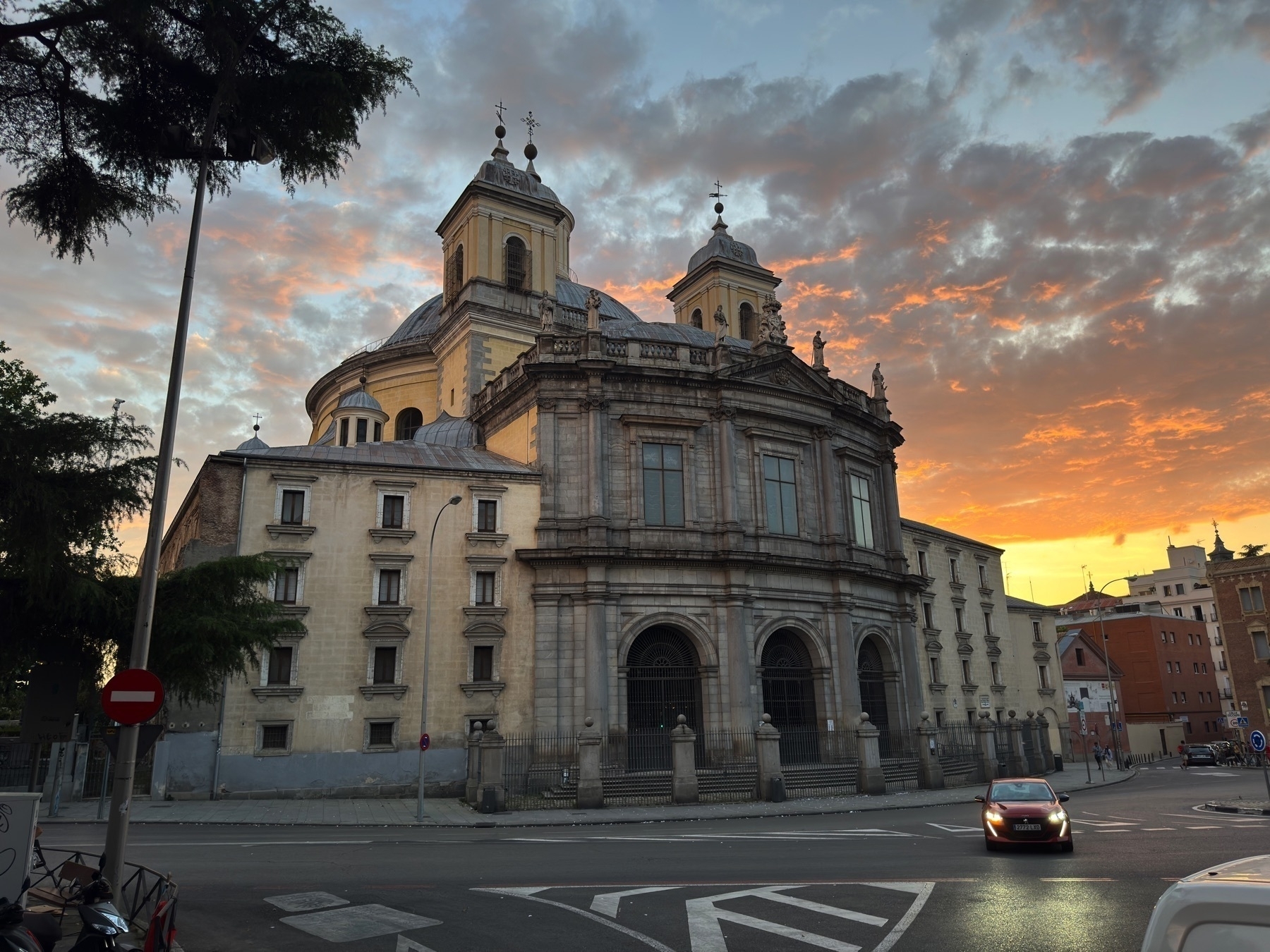
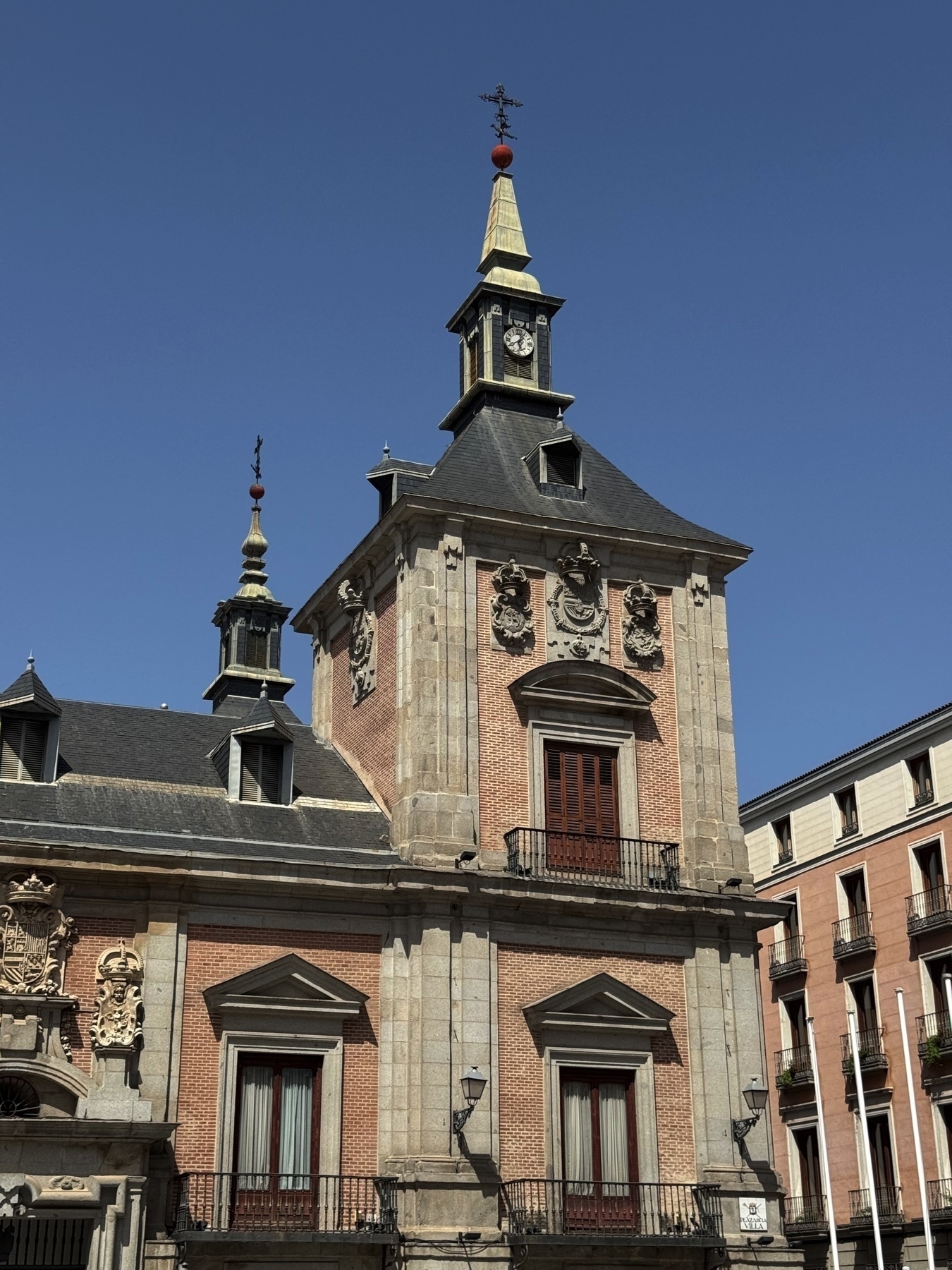
Some food shoutouts:
- Taberna Tempranillo (1): amazing duck.
- Casa del Abuelo (2): fun waiter and amazing garlic shrimp.
- Casa Revuelta (3): delicious fried cod.
- Casa Toni (4): great skewers.
- Restaurante Posada del Dragón (5): loved Calle Cava Baja in general.
- La Mallorquina (6): fantastic pastries.
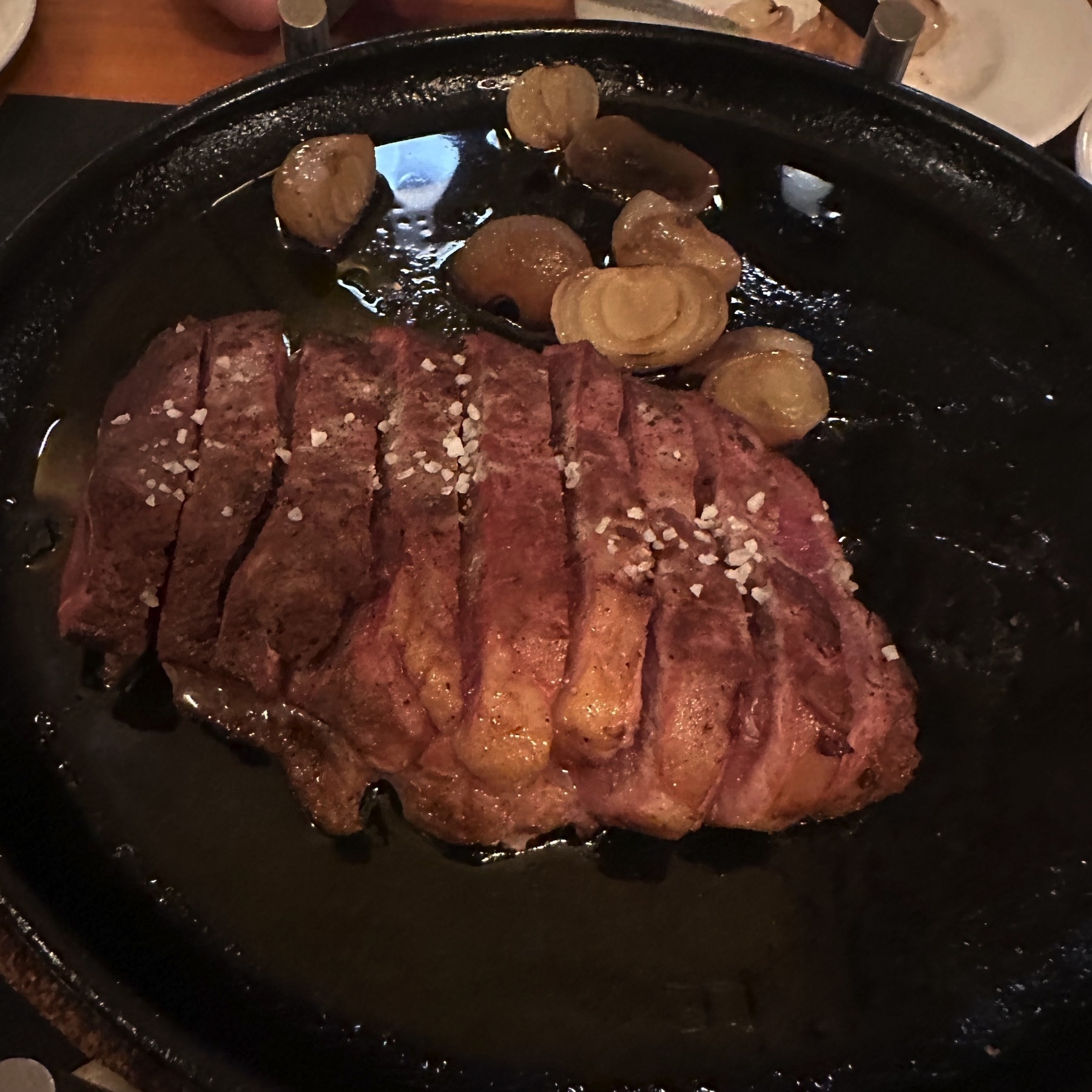
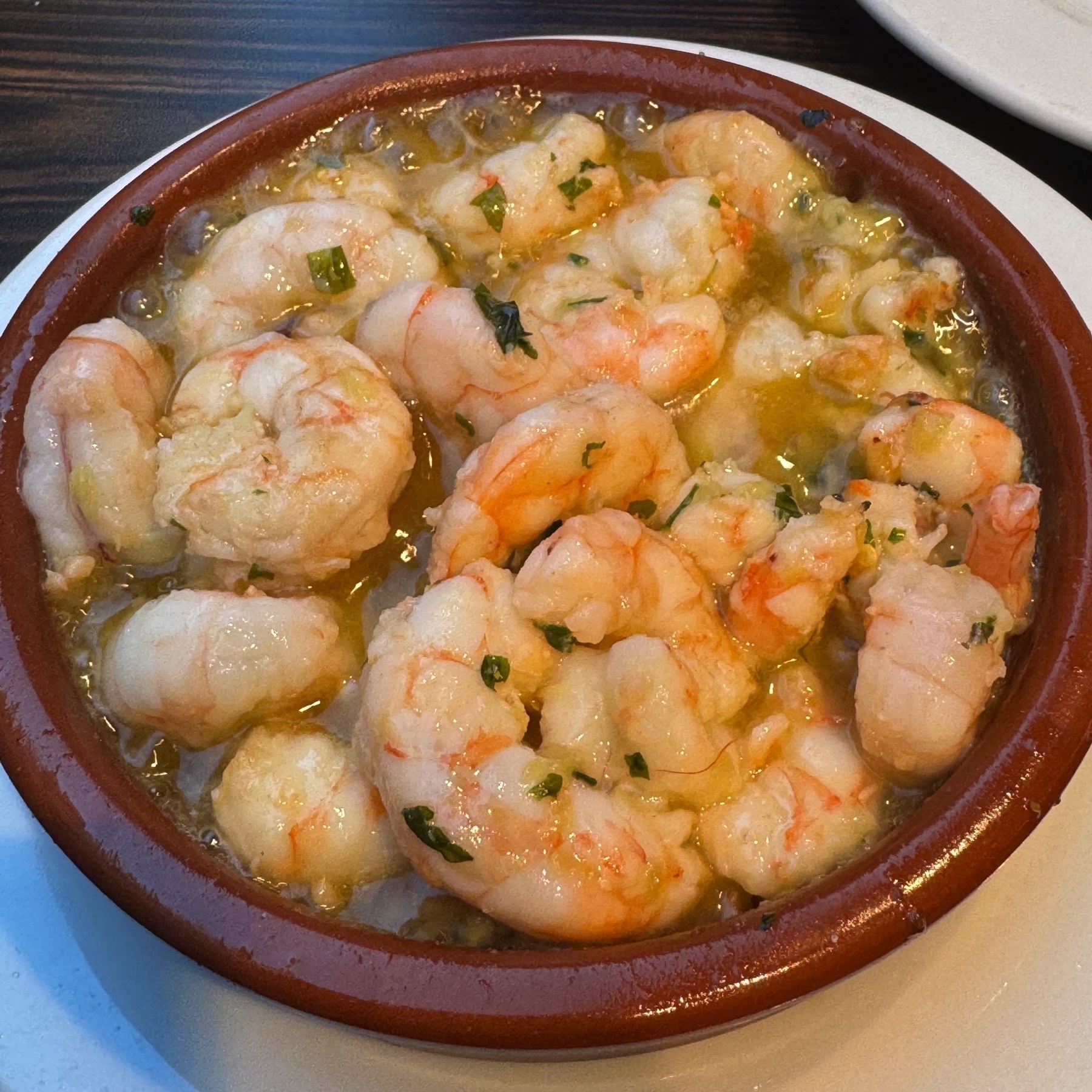
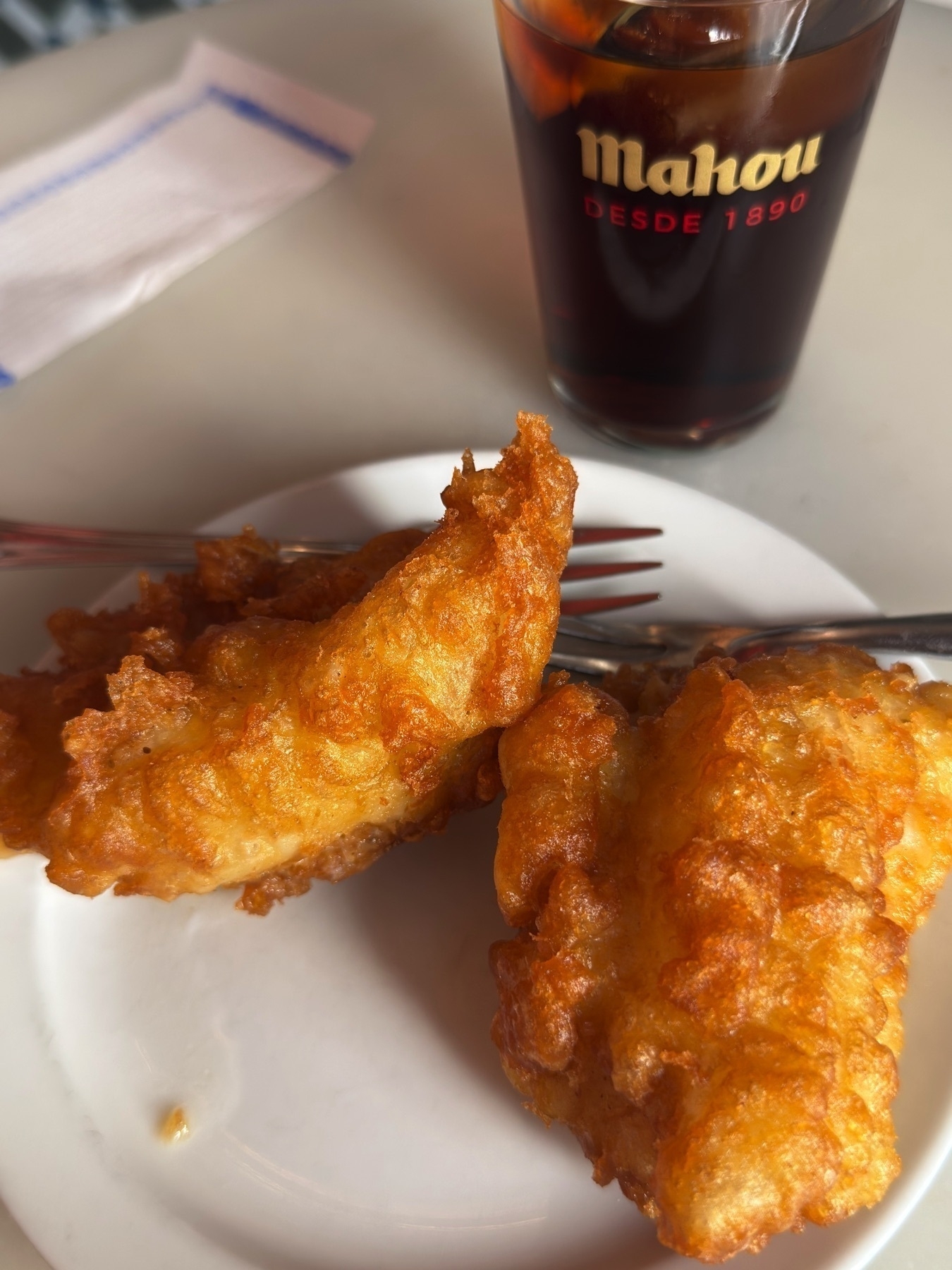
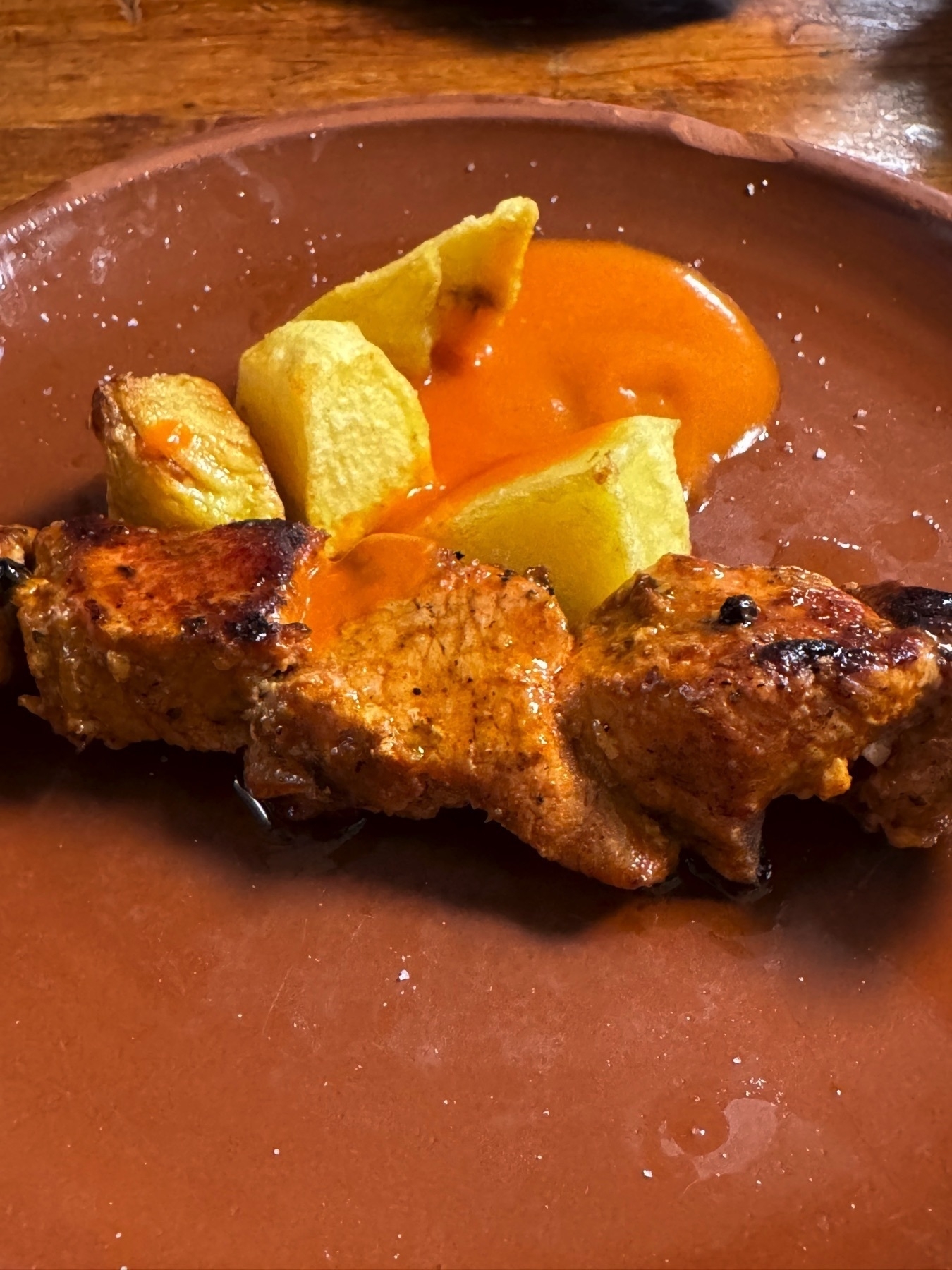
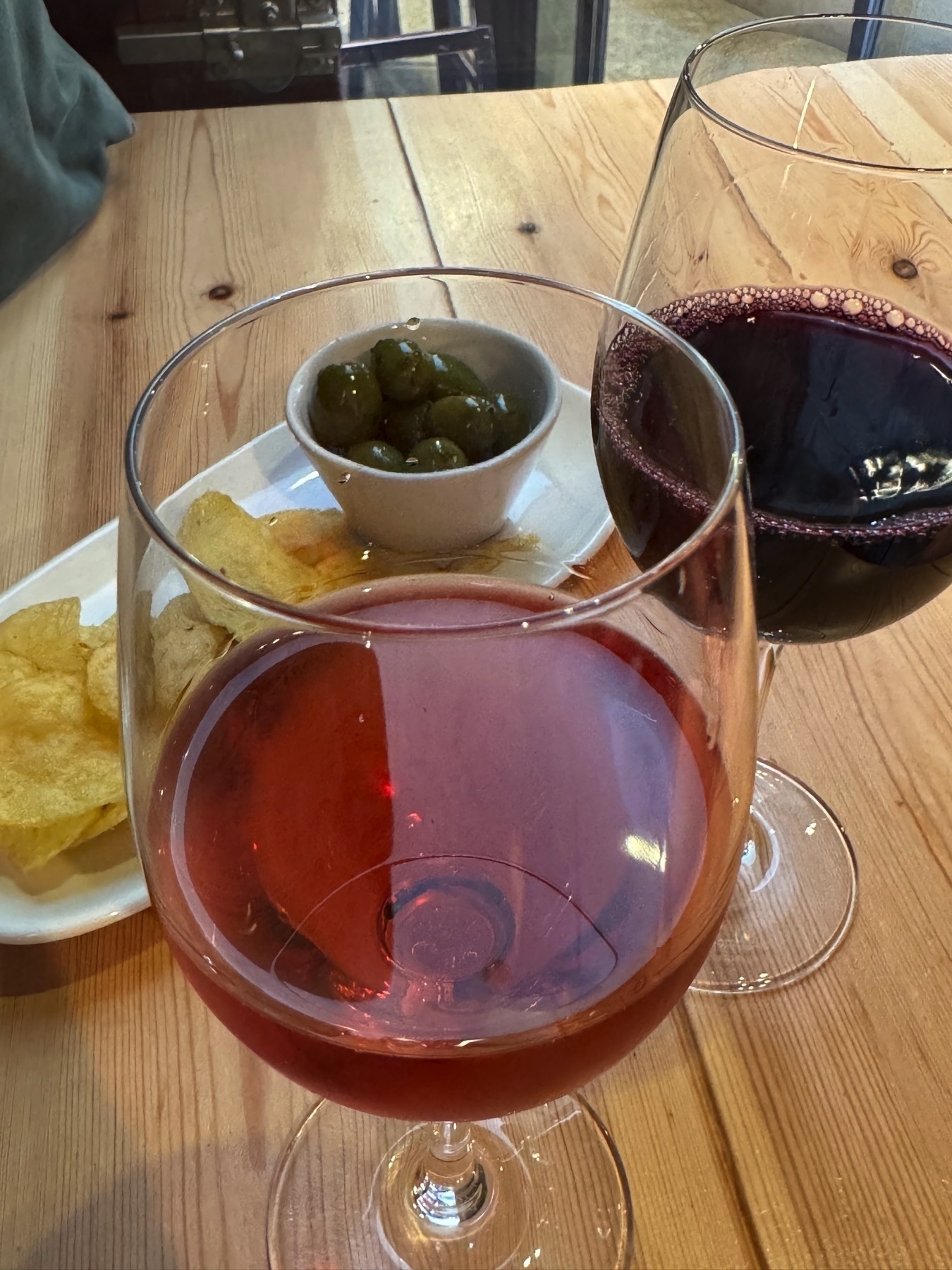
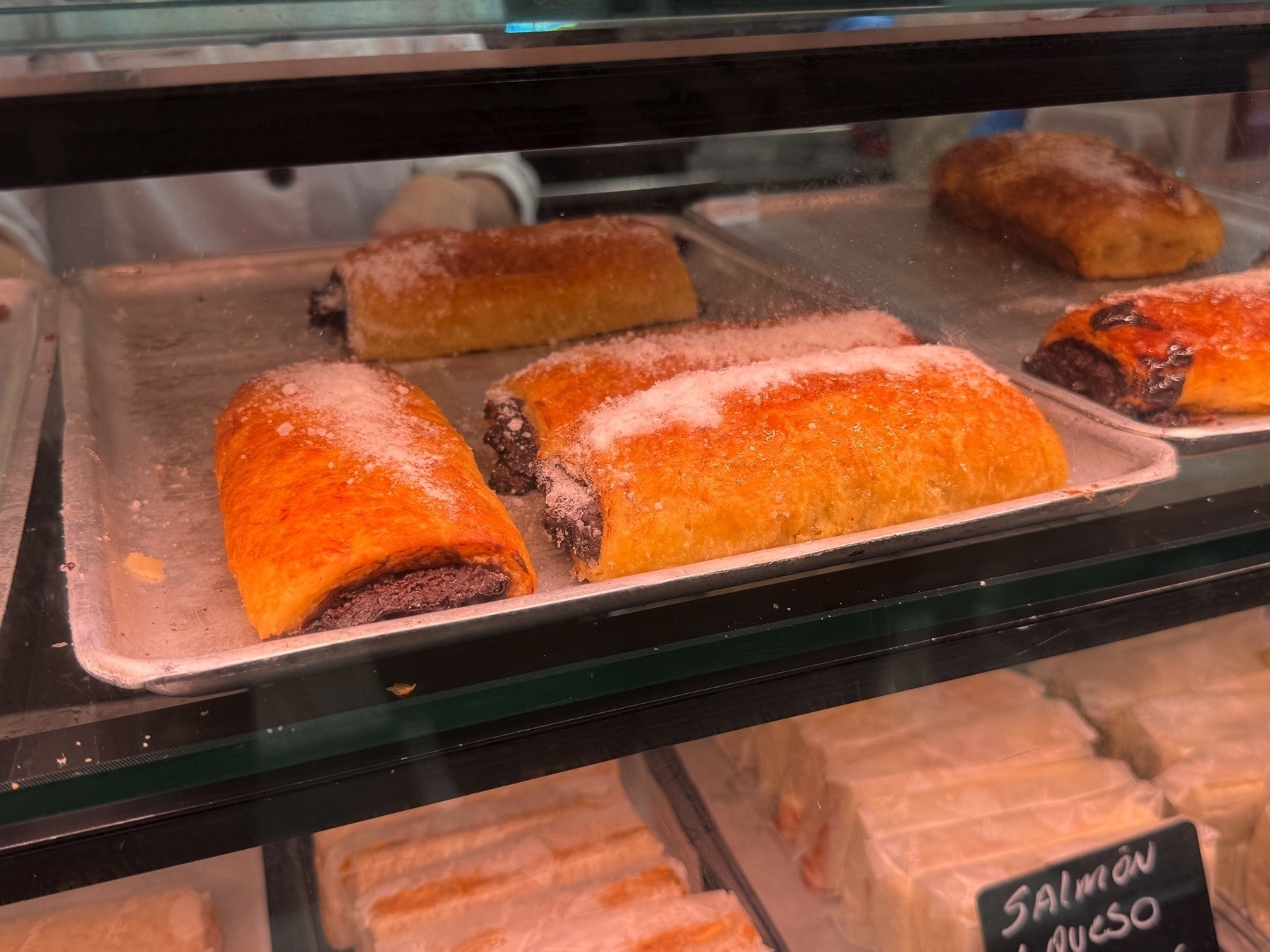
Hugo got a chance to go into the Royal Palace on a tour; unfortunately I wasn’t feeling great that afternoon, so the next morning we walked around the palace (and the Almudena Cathedral) a bit to see the outside of both and the beautiful sights over parts of the city we never ventured into.
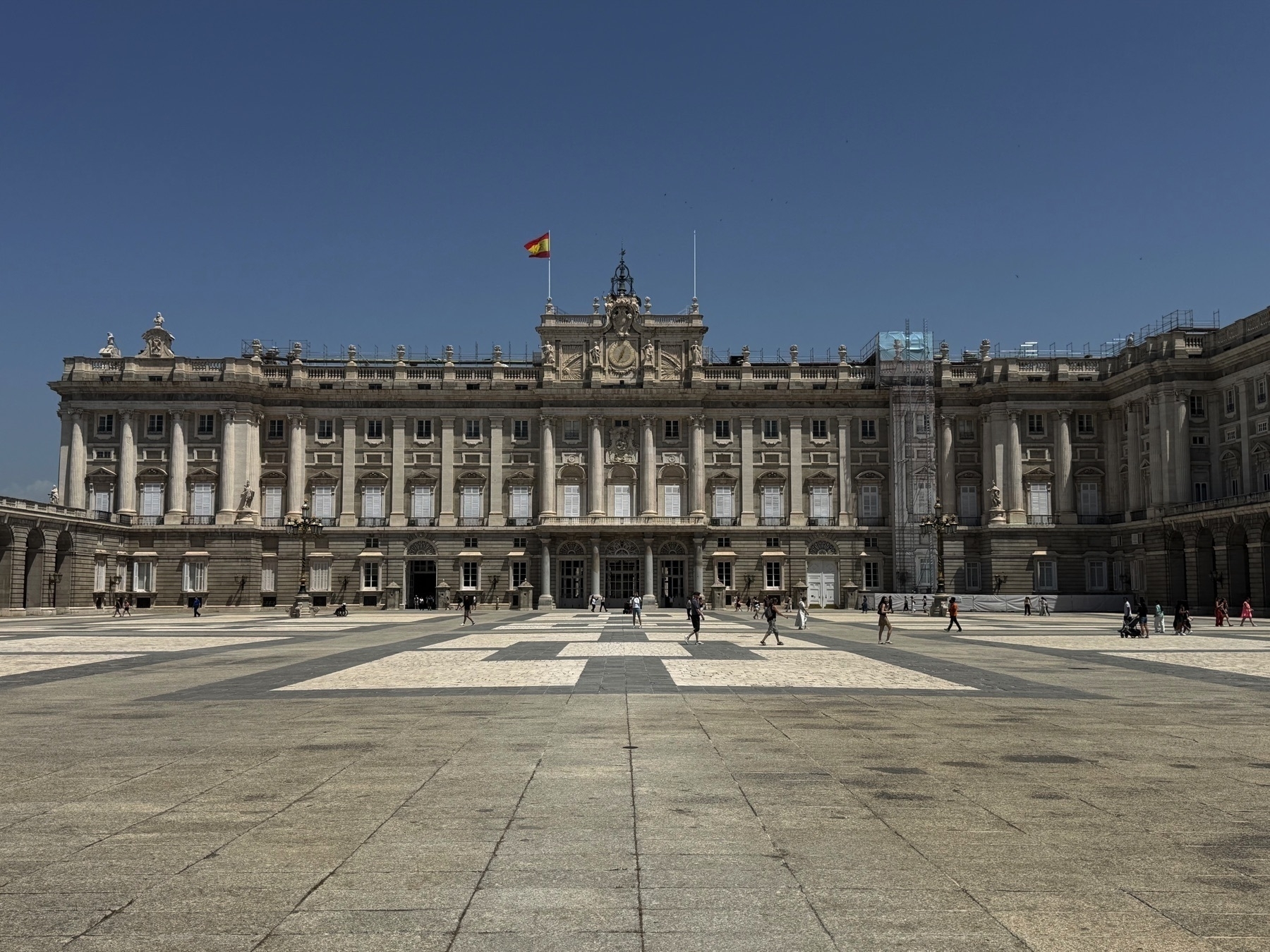
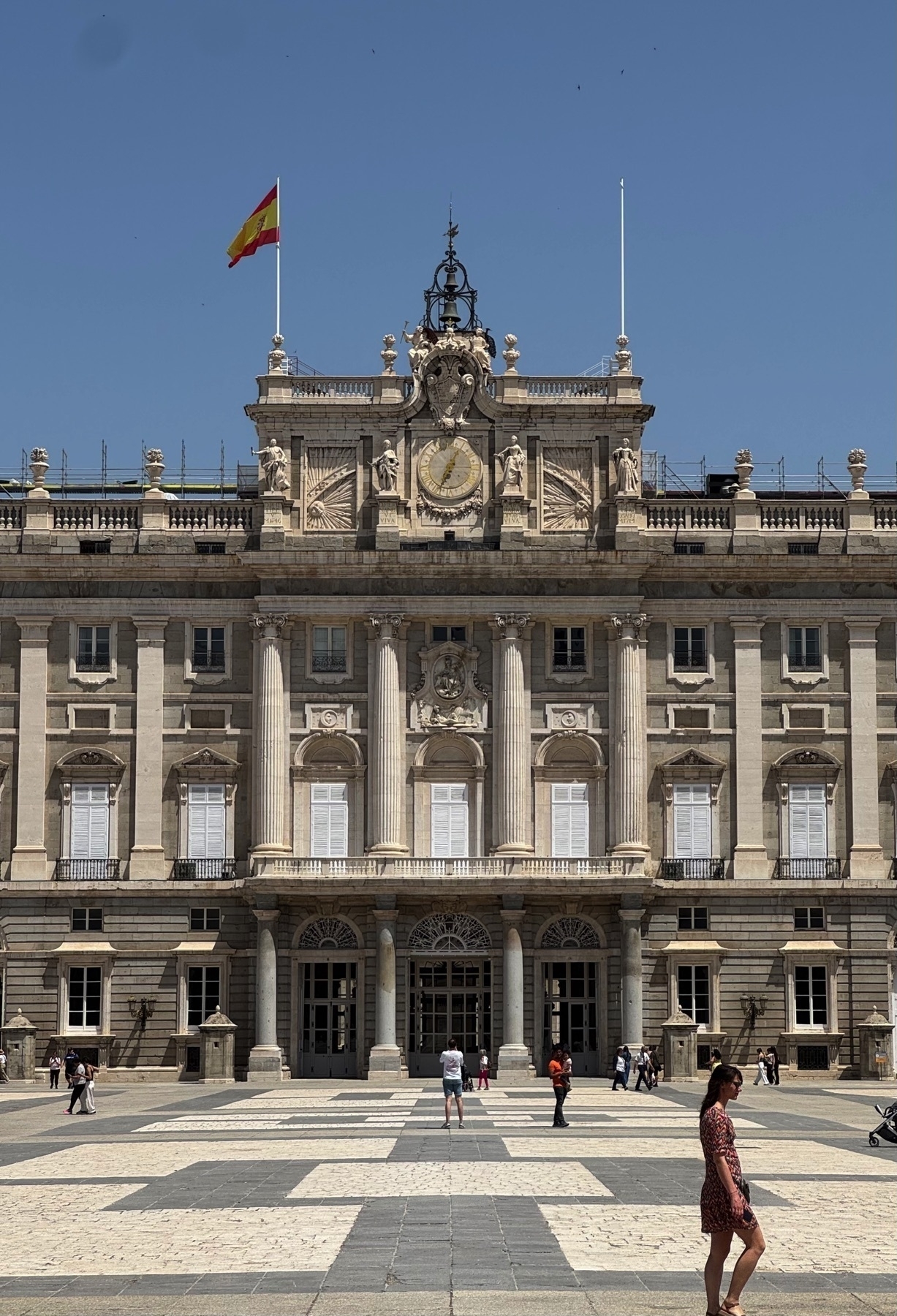
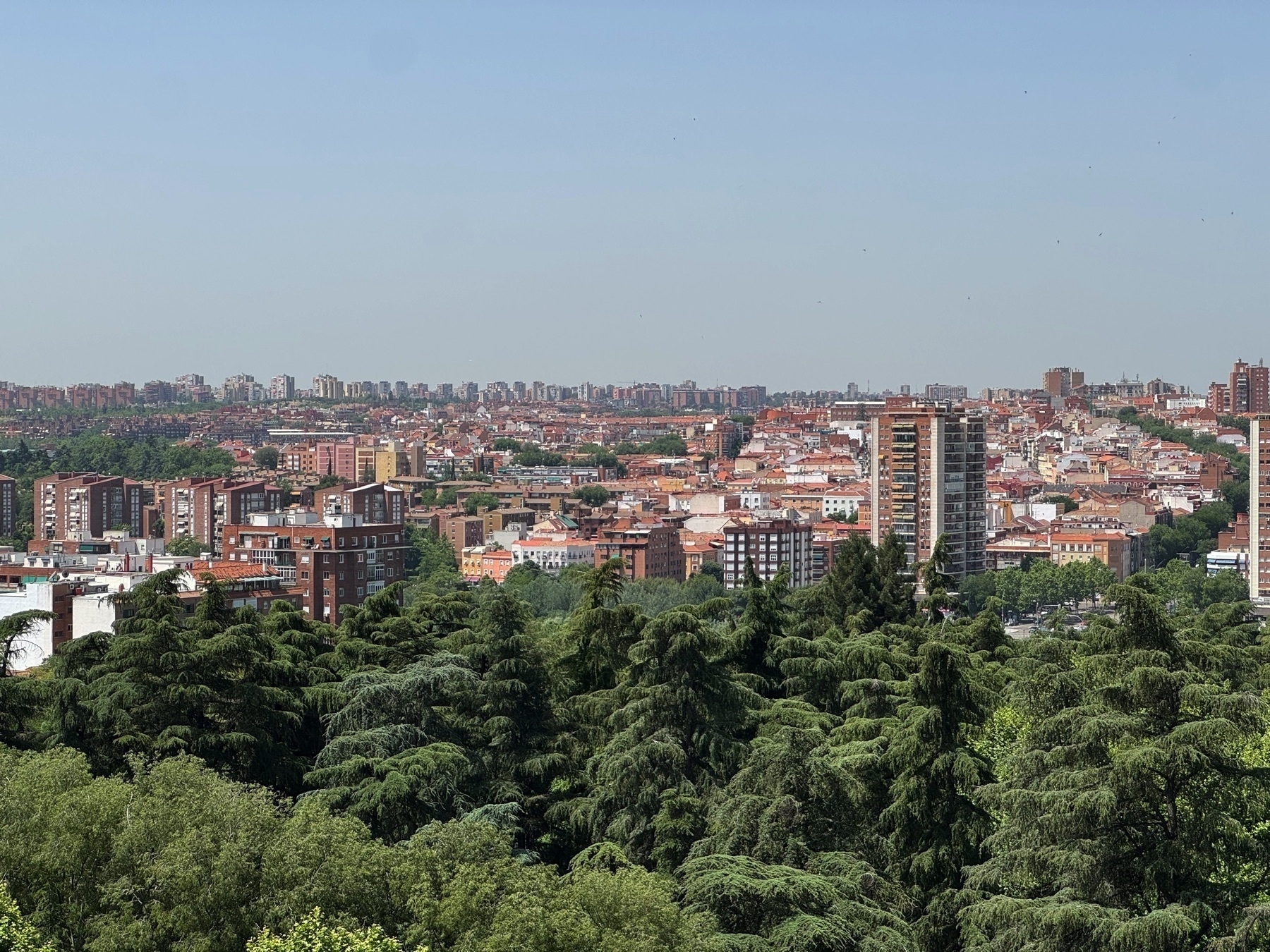
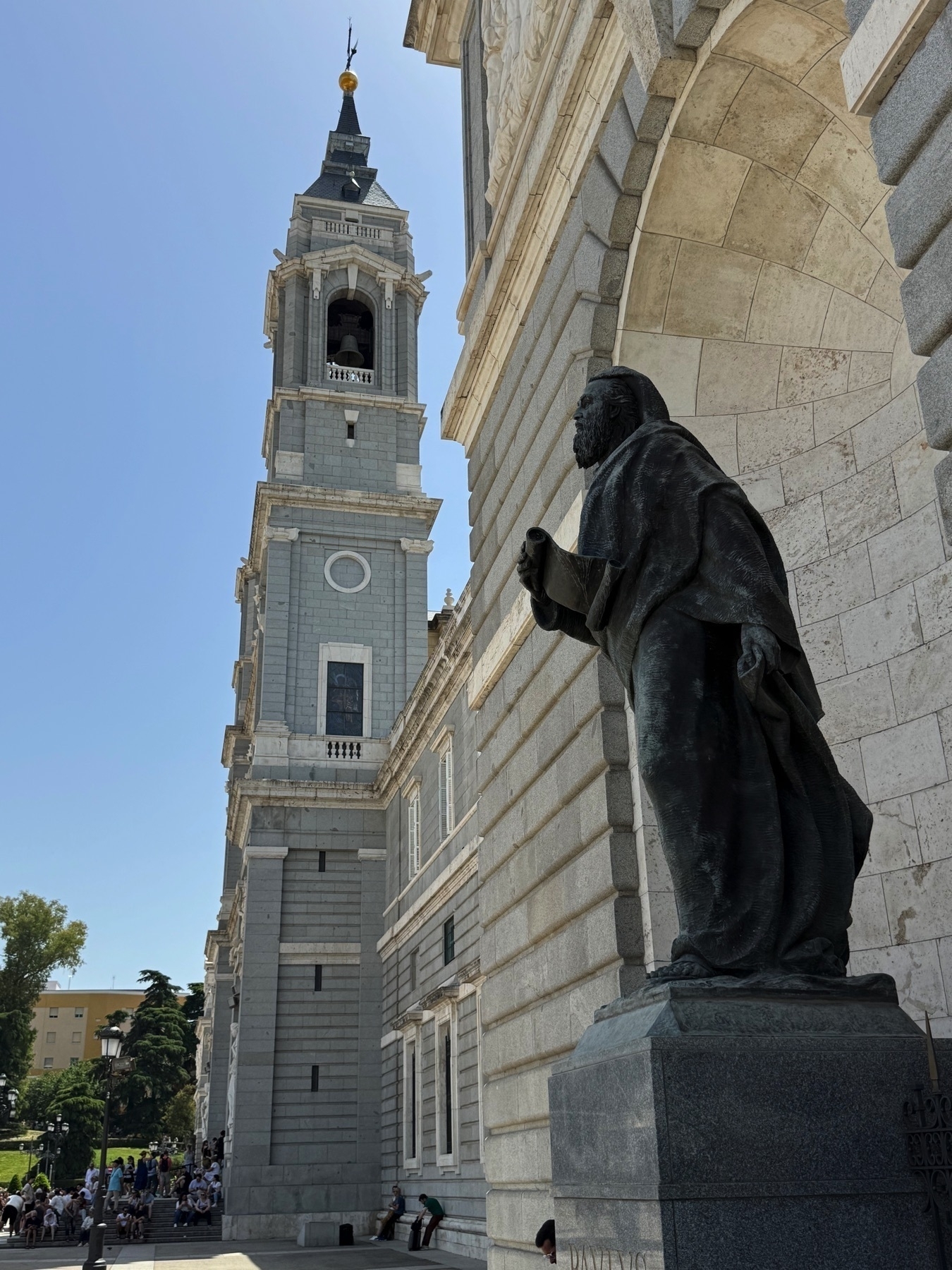
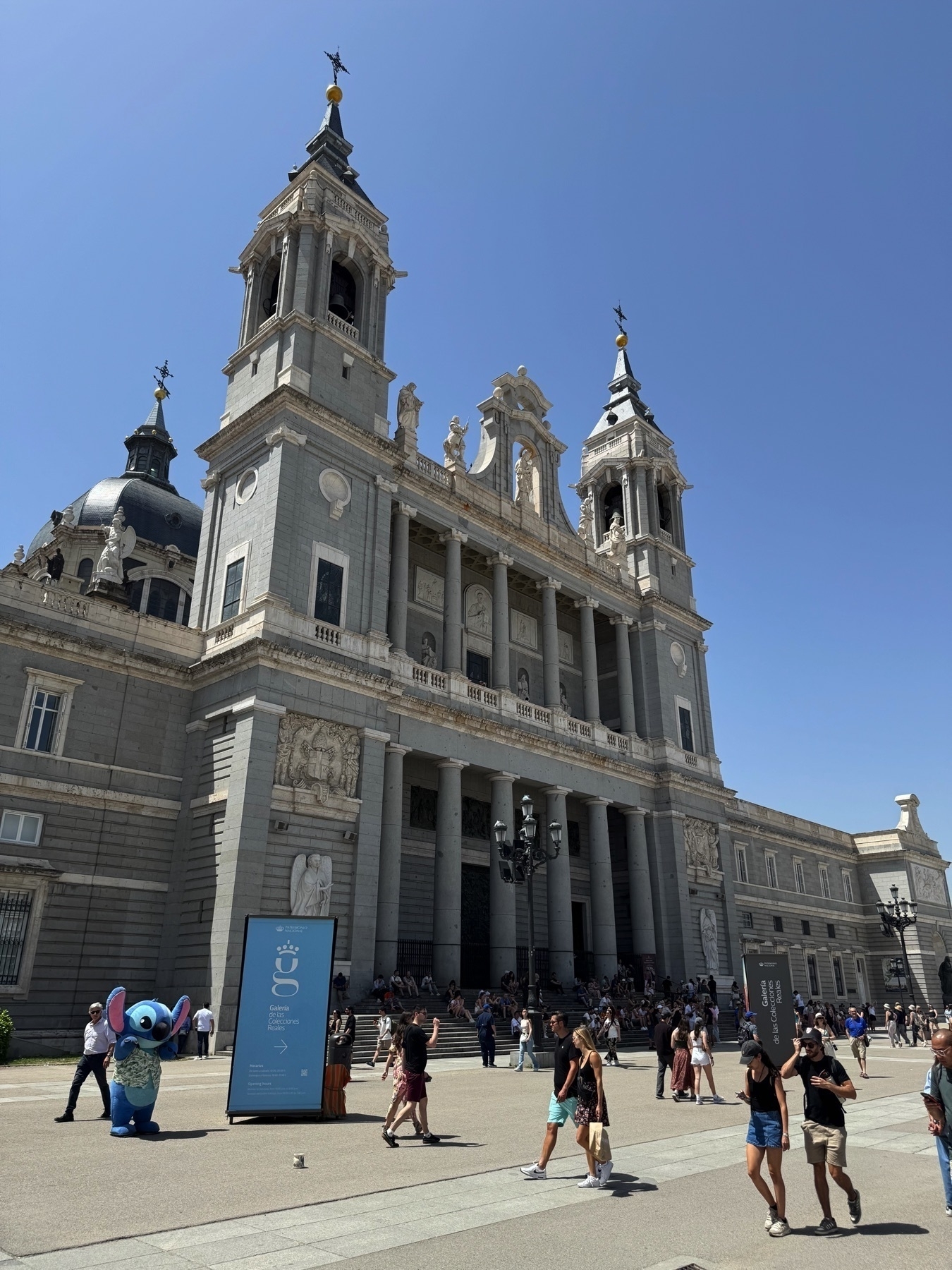
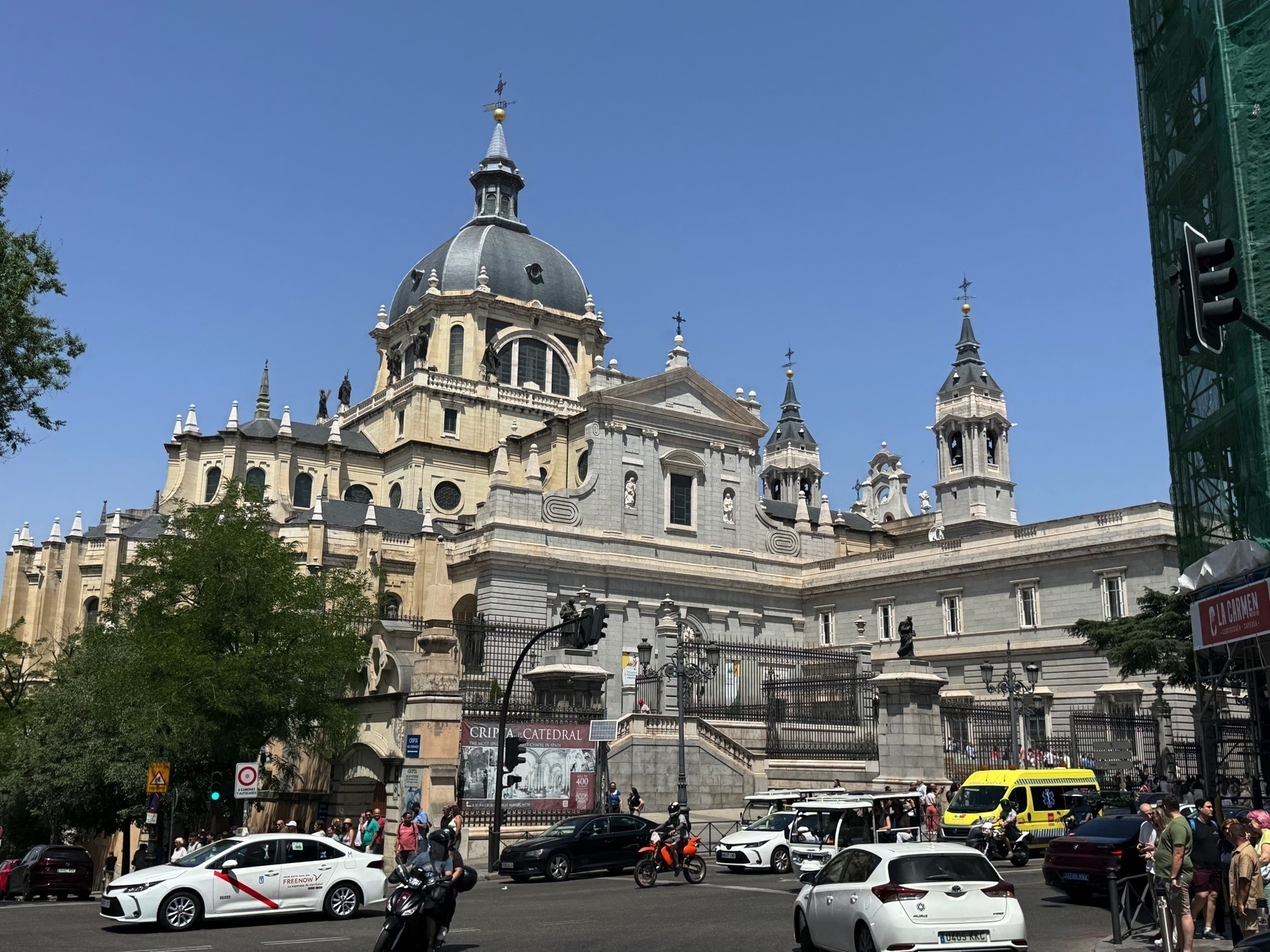
We popped into Mercado Jamón Ibérico for our last jamón 100% ibérico de bellota tasting.
As much as I’m not a huge pork-product person at home, I want to find it near Long Beach for a special treat a couple times a year.
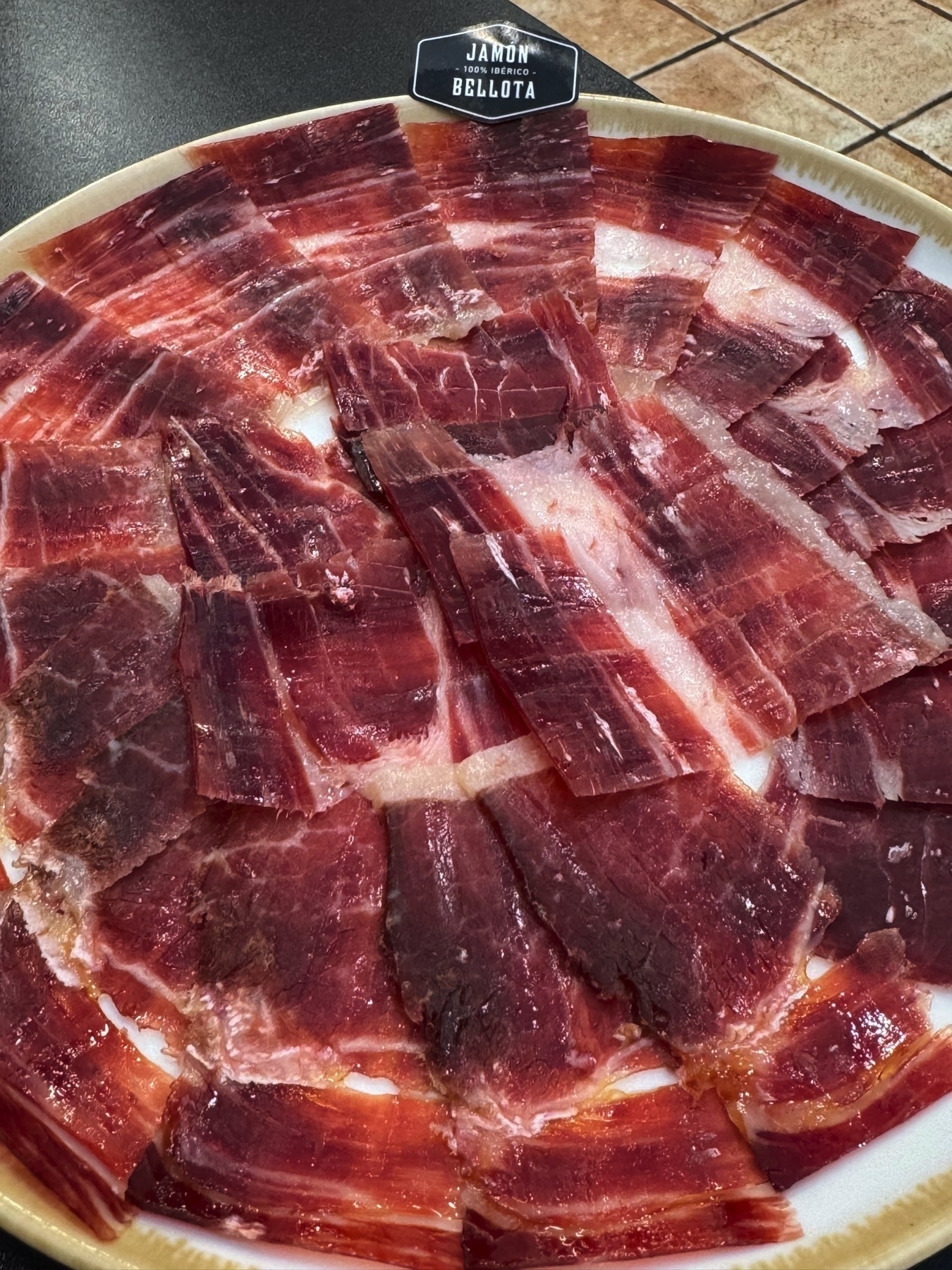
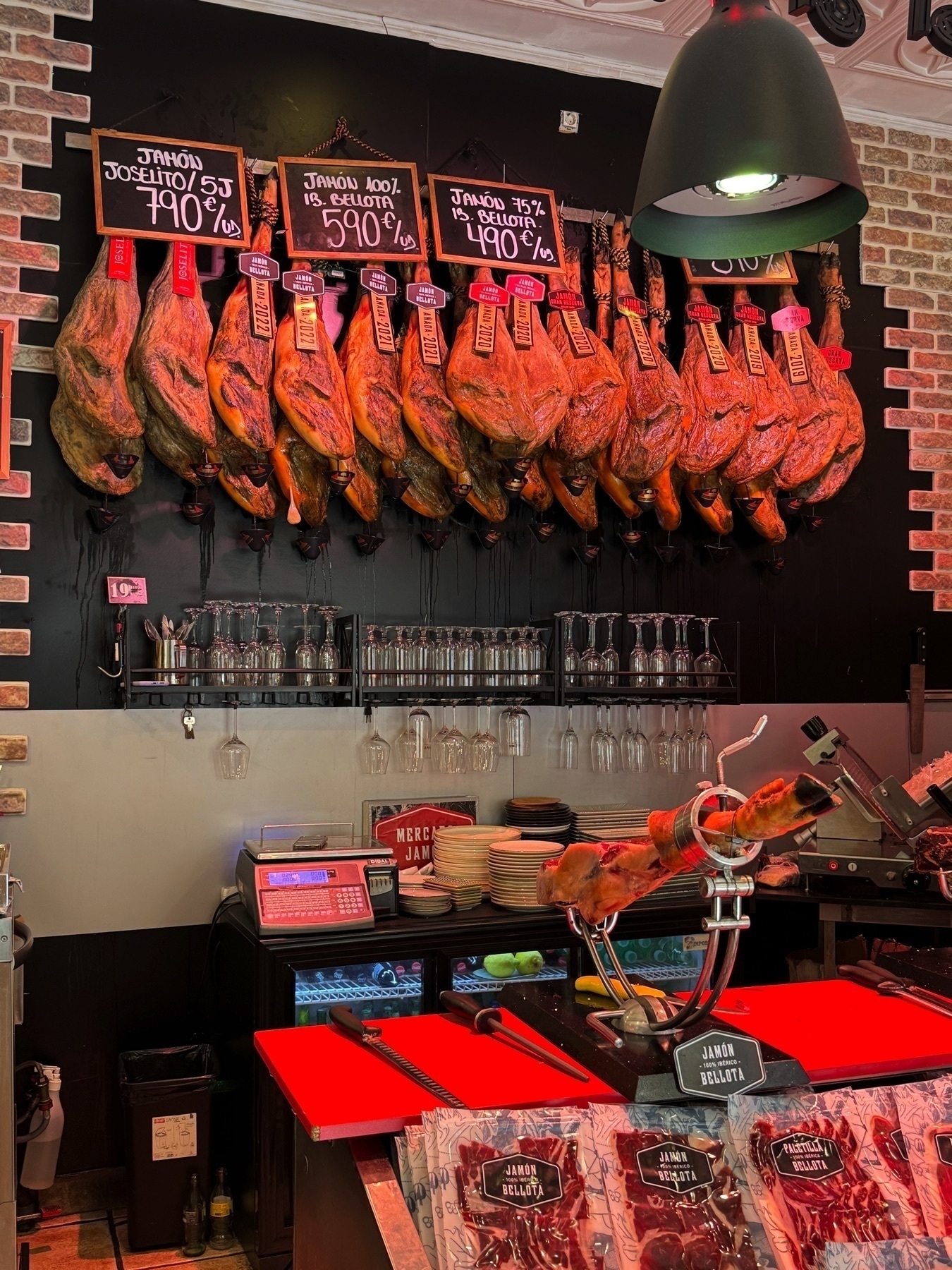
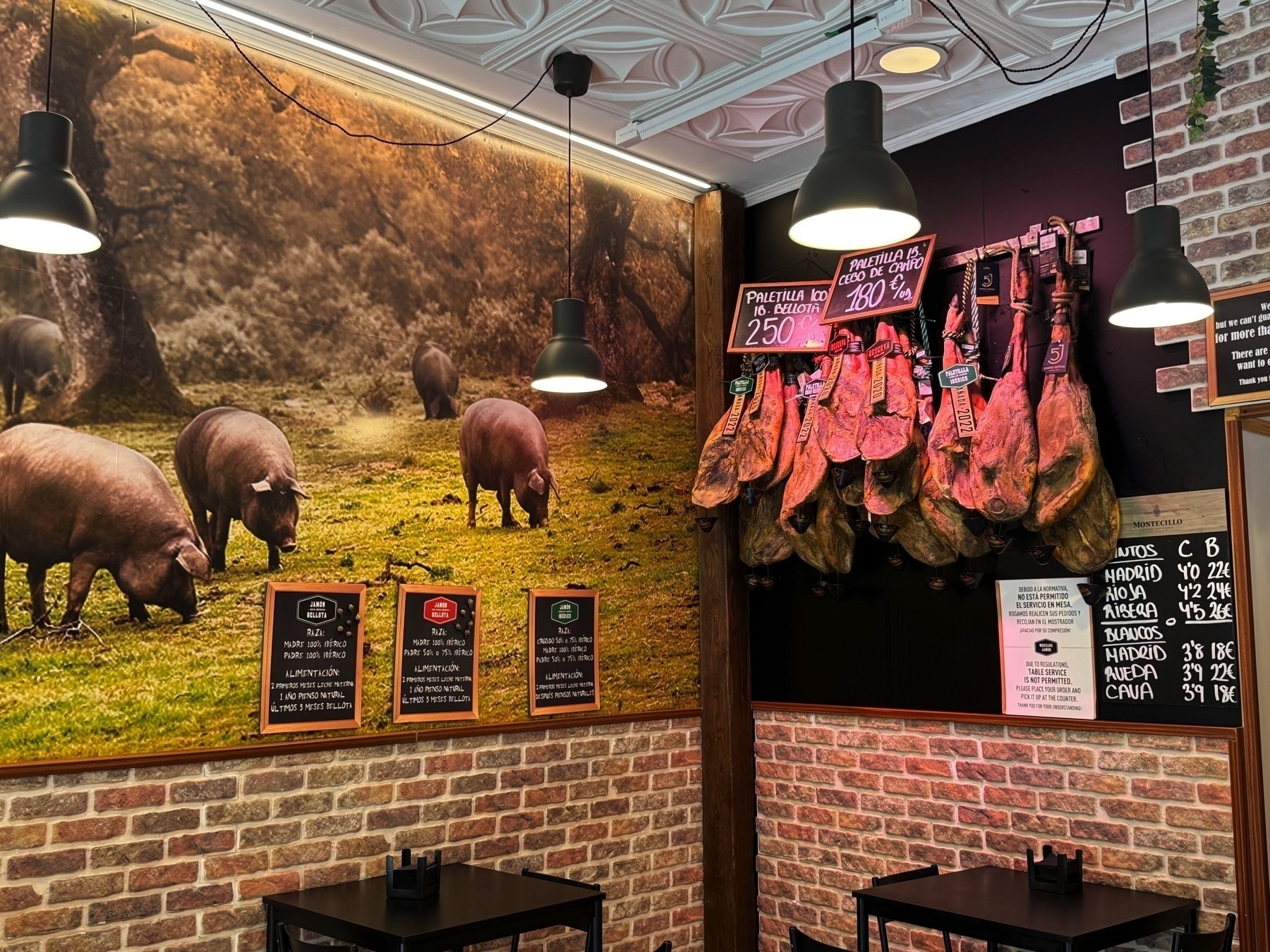
We went to the Monasterio del Corpus Christi las Carboneras to buy cookies from the cloistered nuns, but a sign on the door said no sweets until Monday.
When we went inside the church, I was surprised that even a little church still had gold-covered altars and ornate paintings.
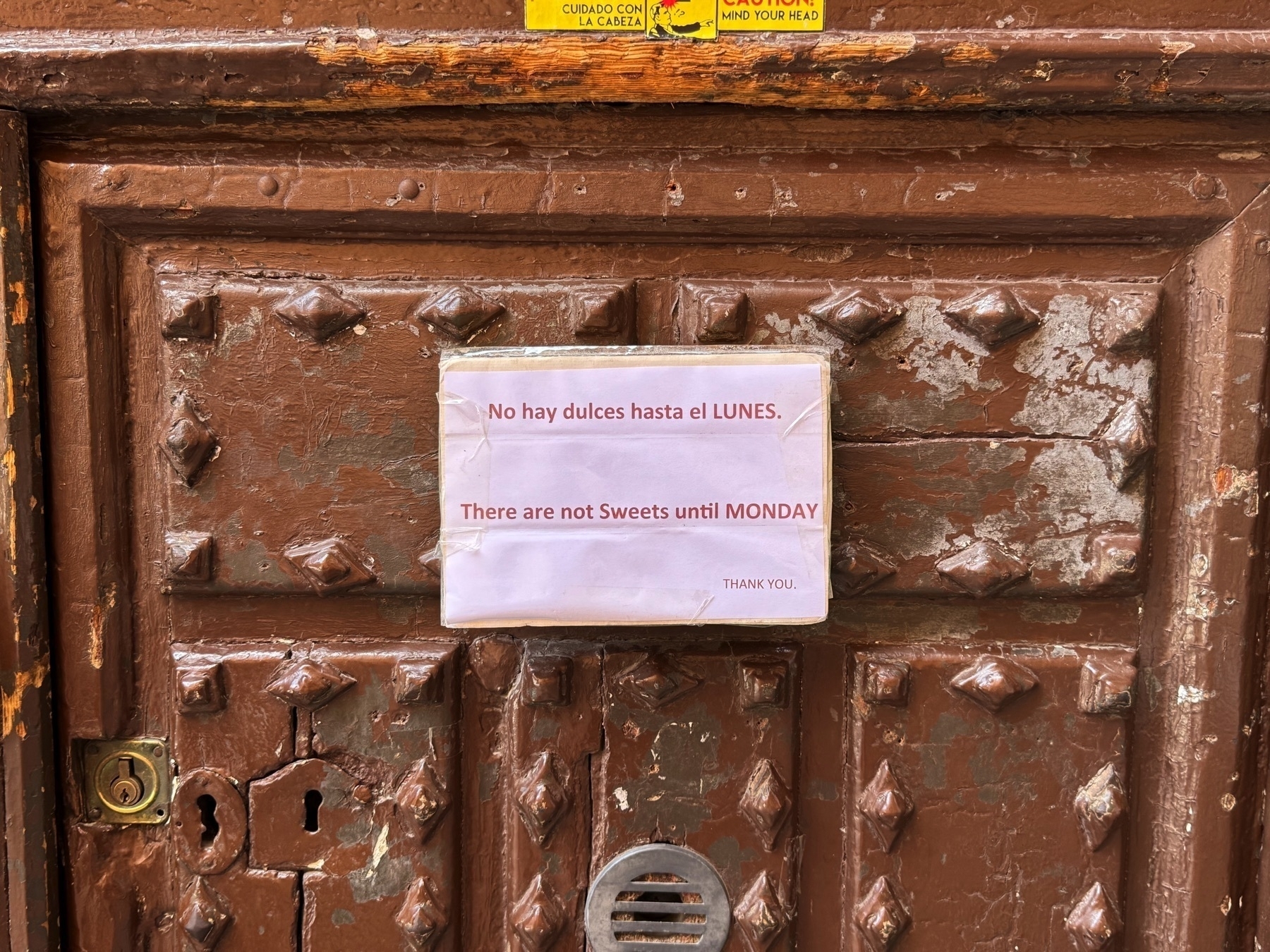
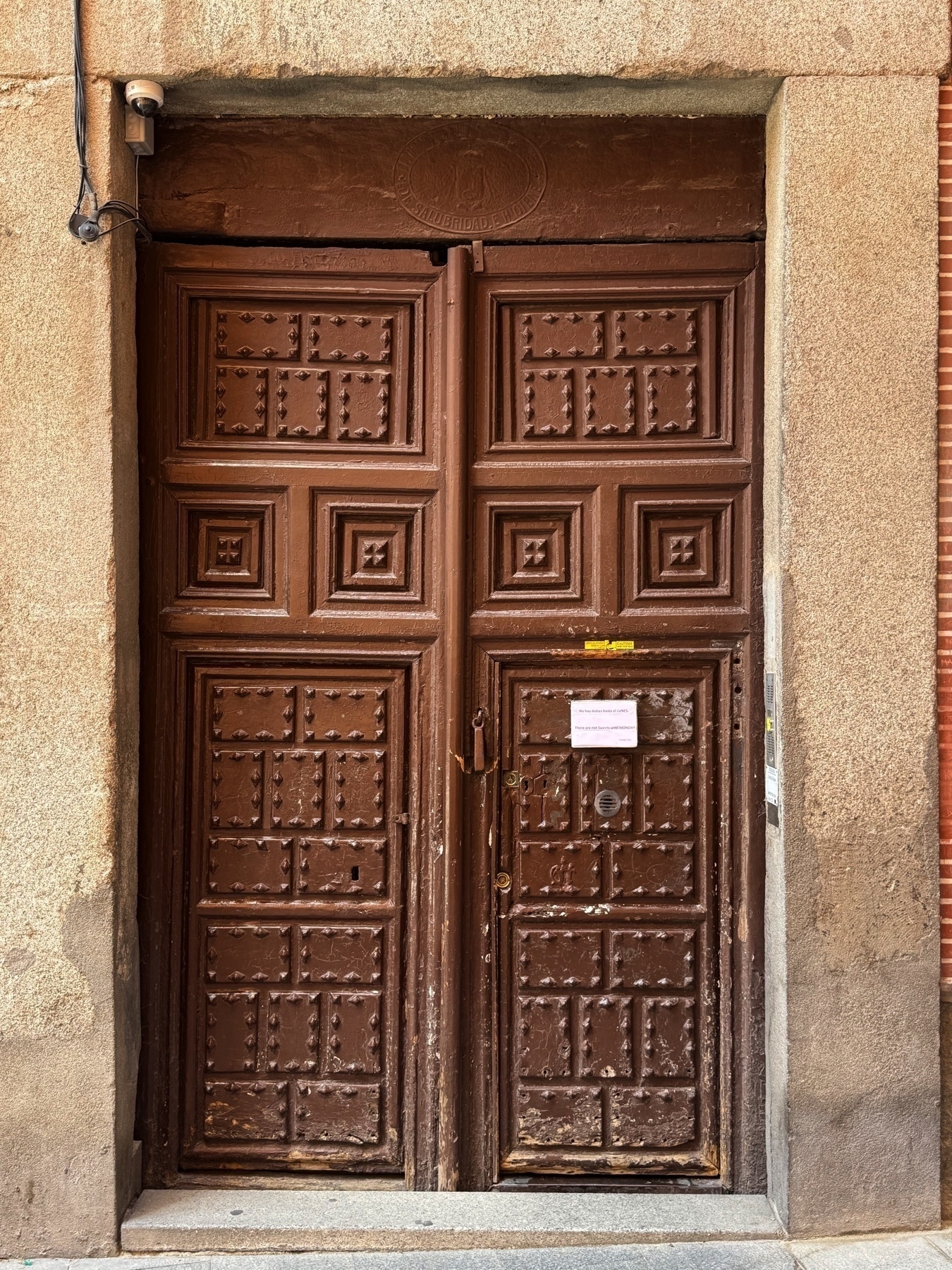
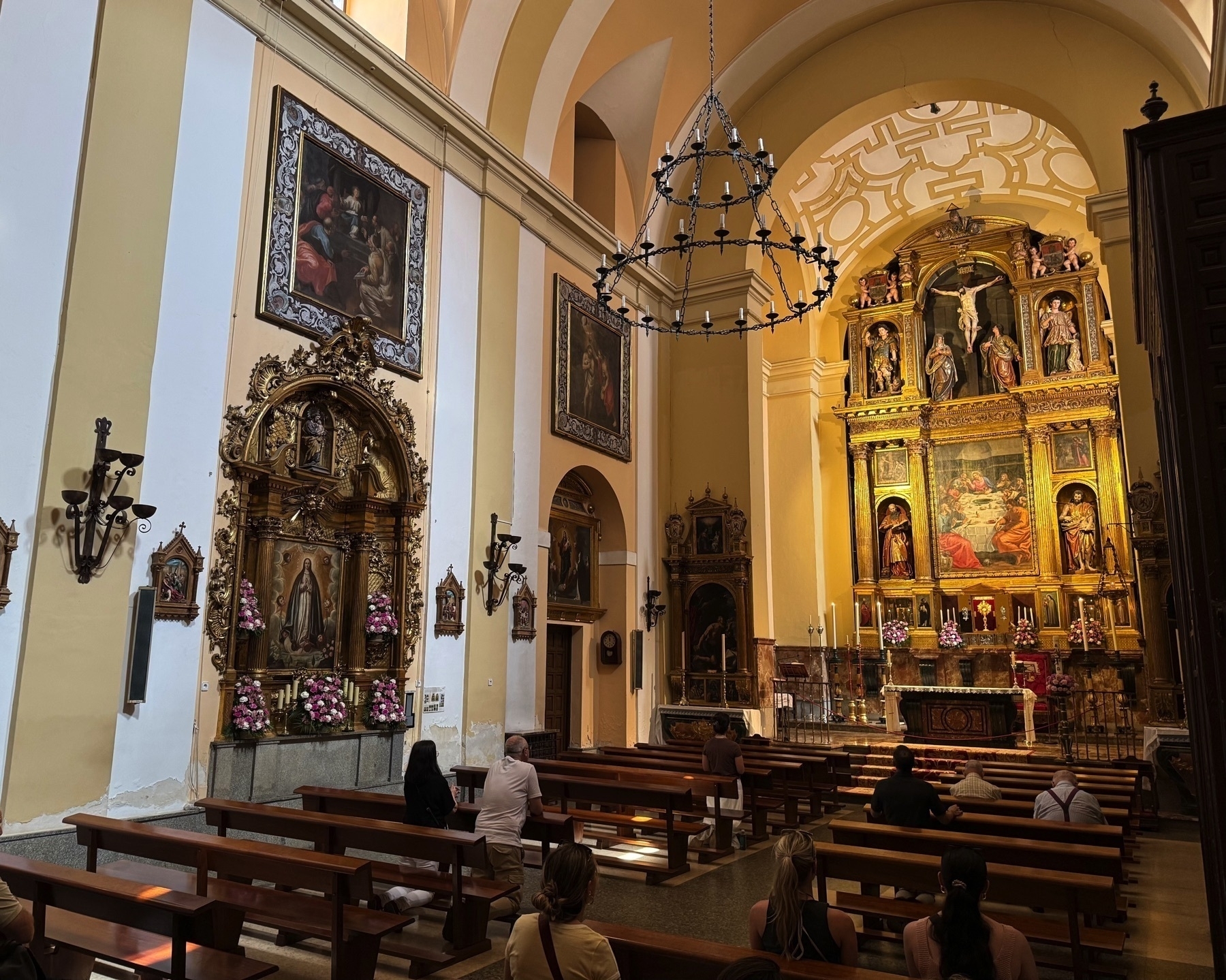
We stopped into Pastelería El Riojano for a quick soletilla con chocolate and it was delicious! The melted chocolate was rich and the ladyfingers were very soft sponge. Their other desserts and ice creams looked great too!
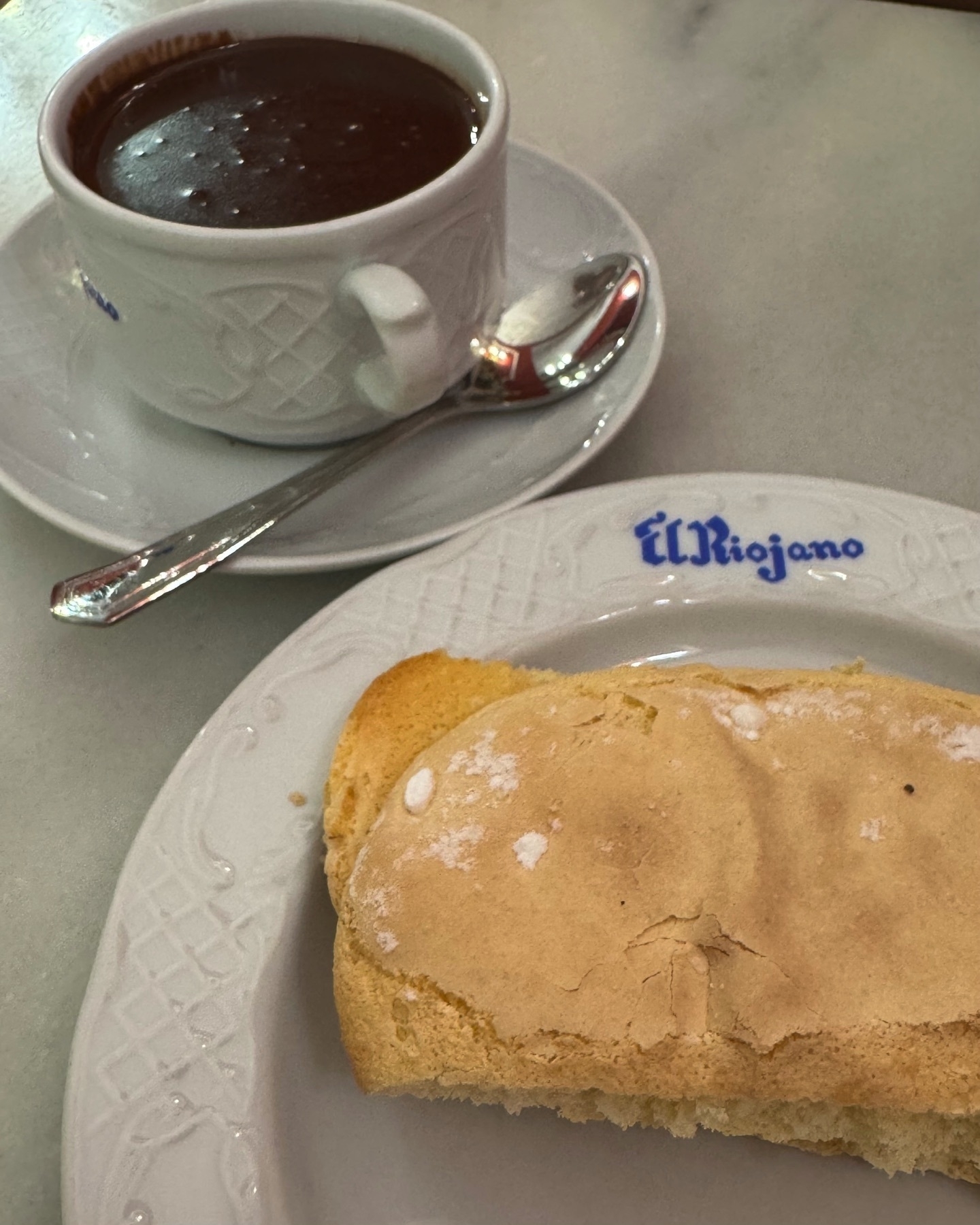
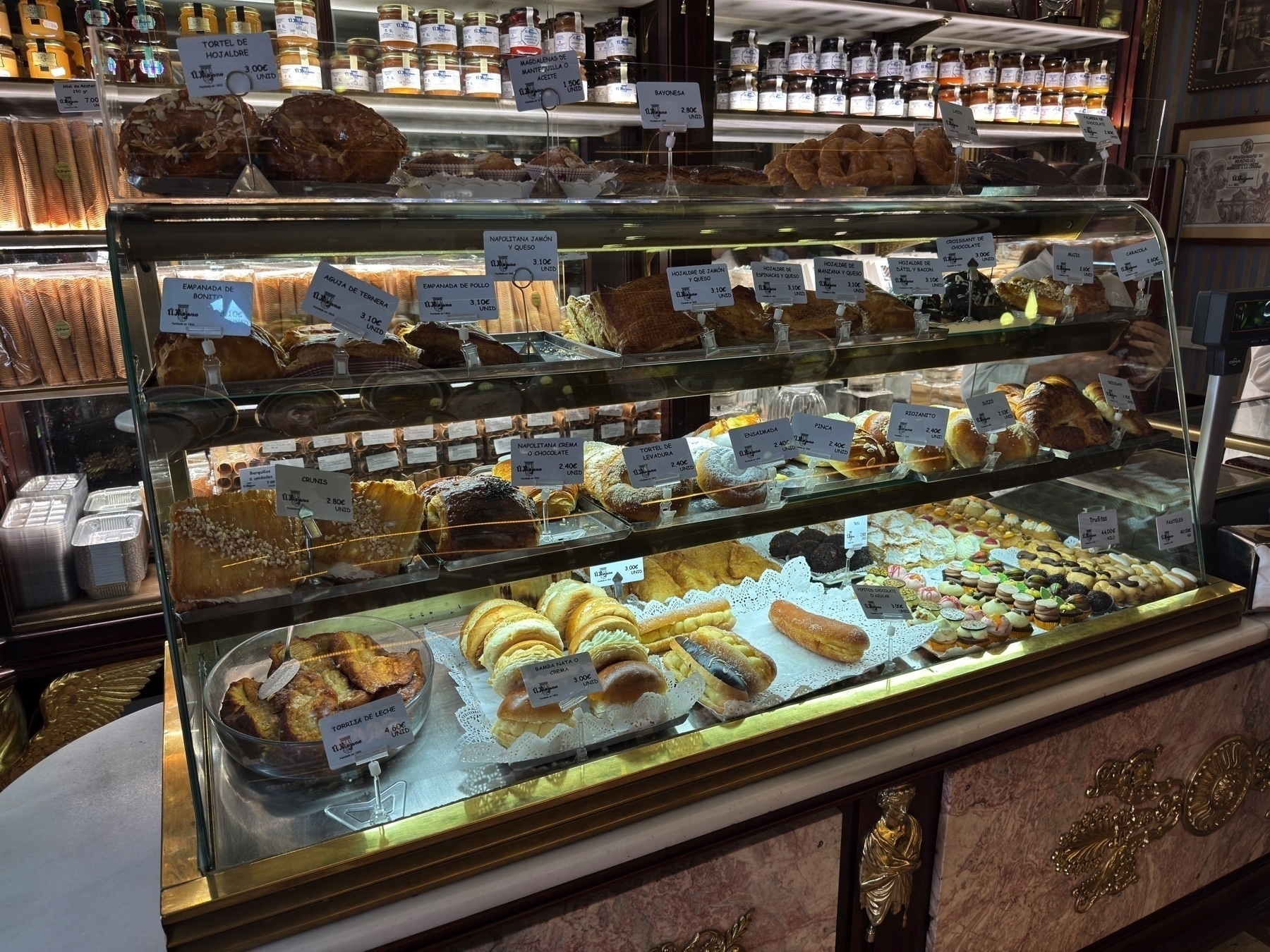
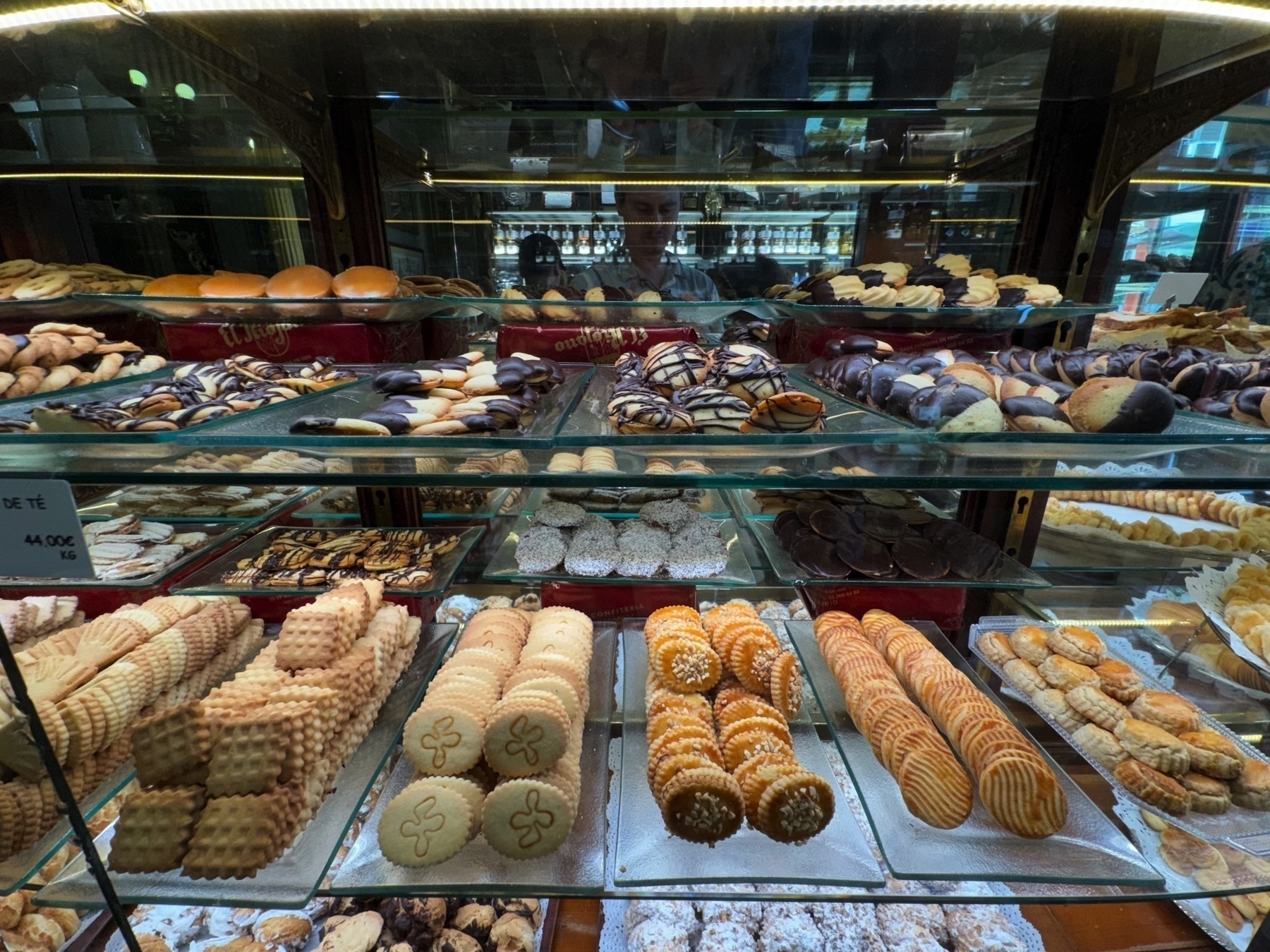
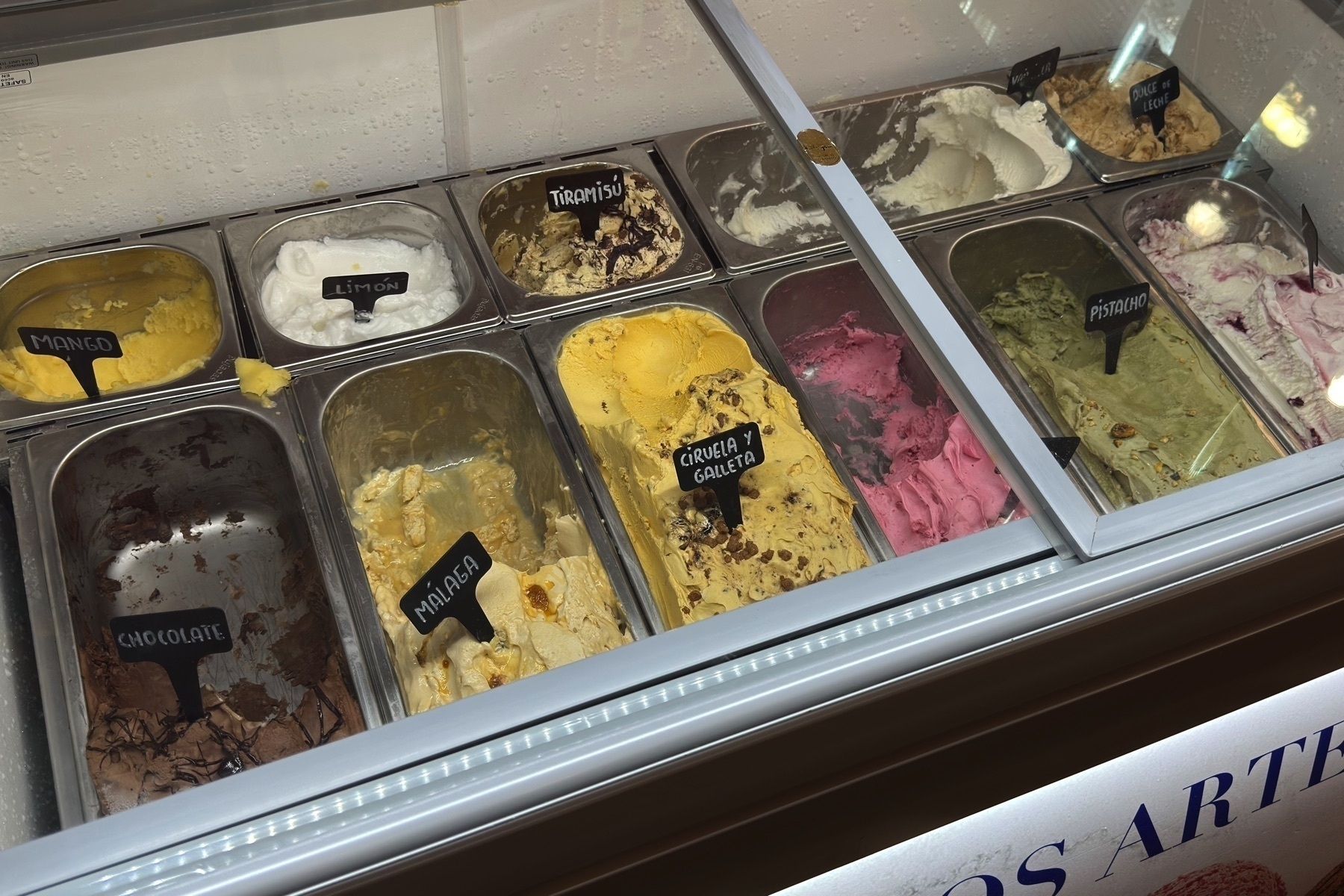
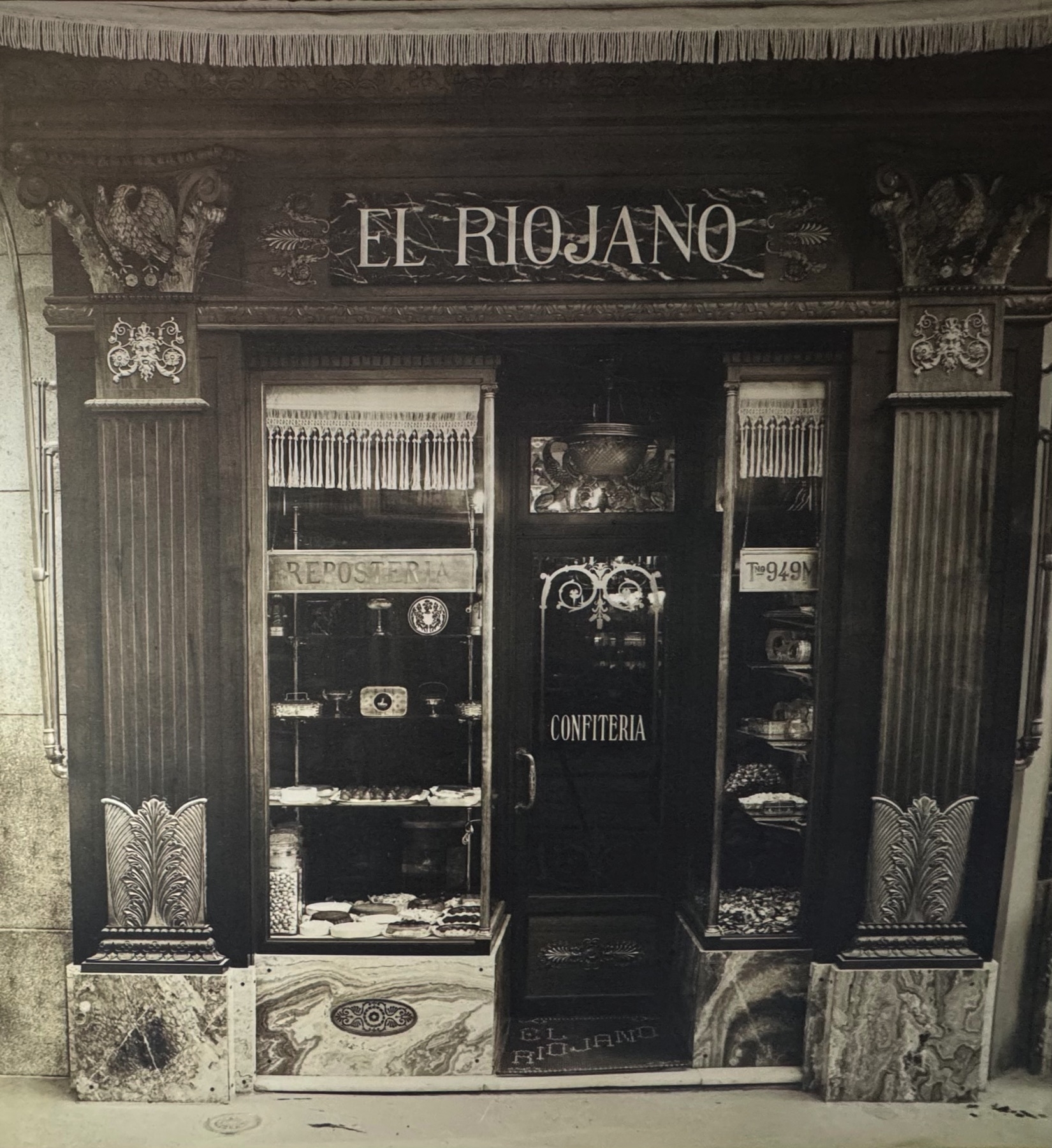
We popped into Mercado de San Miguel for cava and were surprised this market was entirely food stalls (unlike València and Málaga, which were focused on fresh groceries).
I especially loved the wall art with subtle gay-themed stop signs to mimic the actual stop signs throughout Madrid.
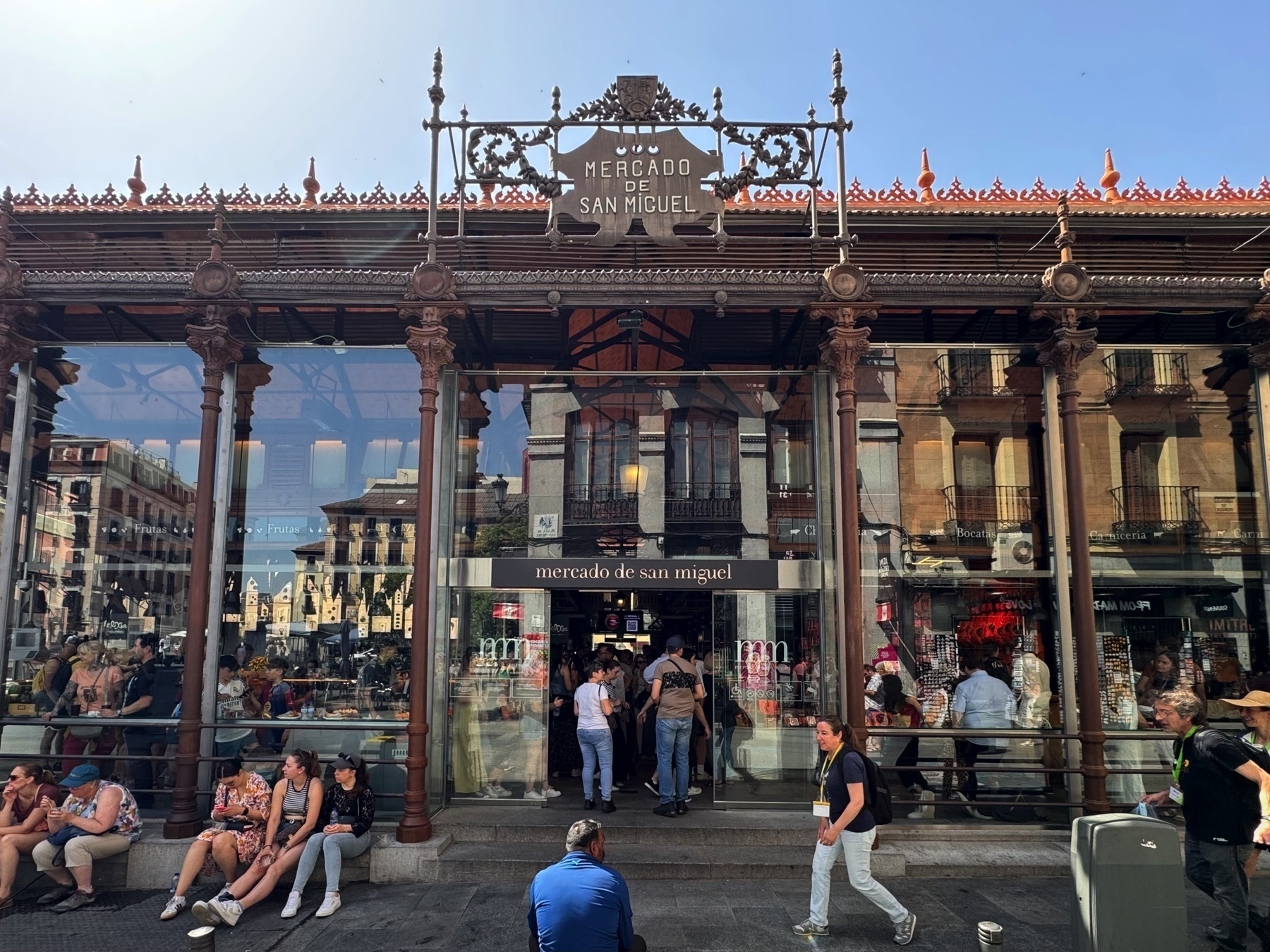
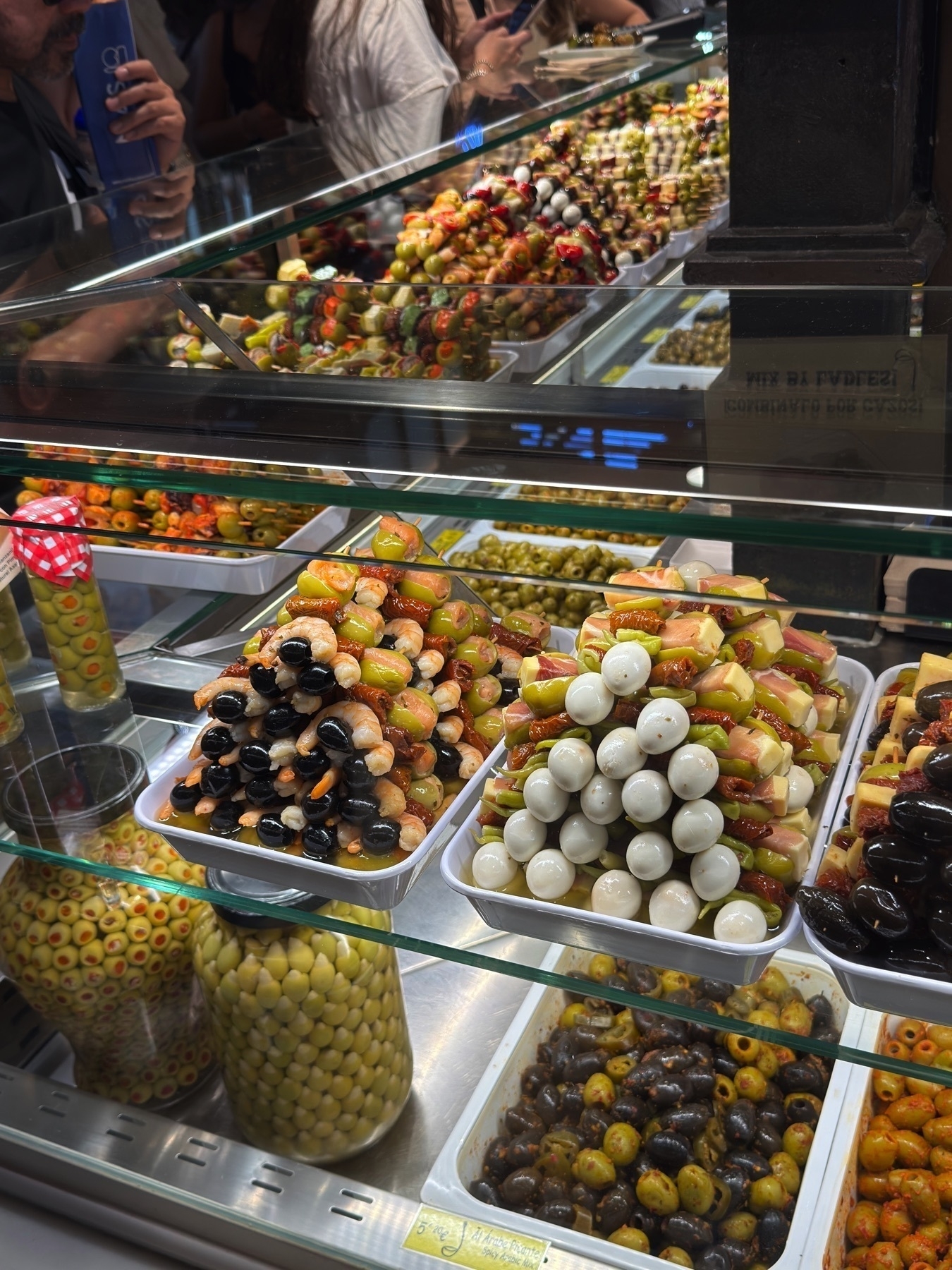
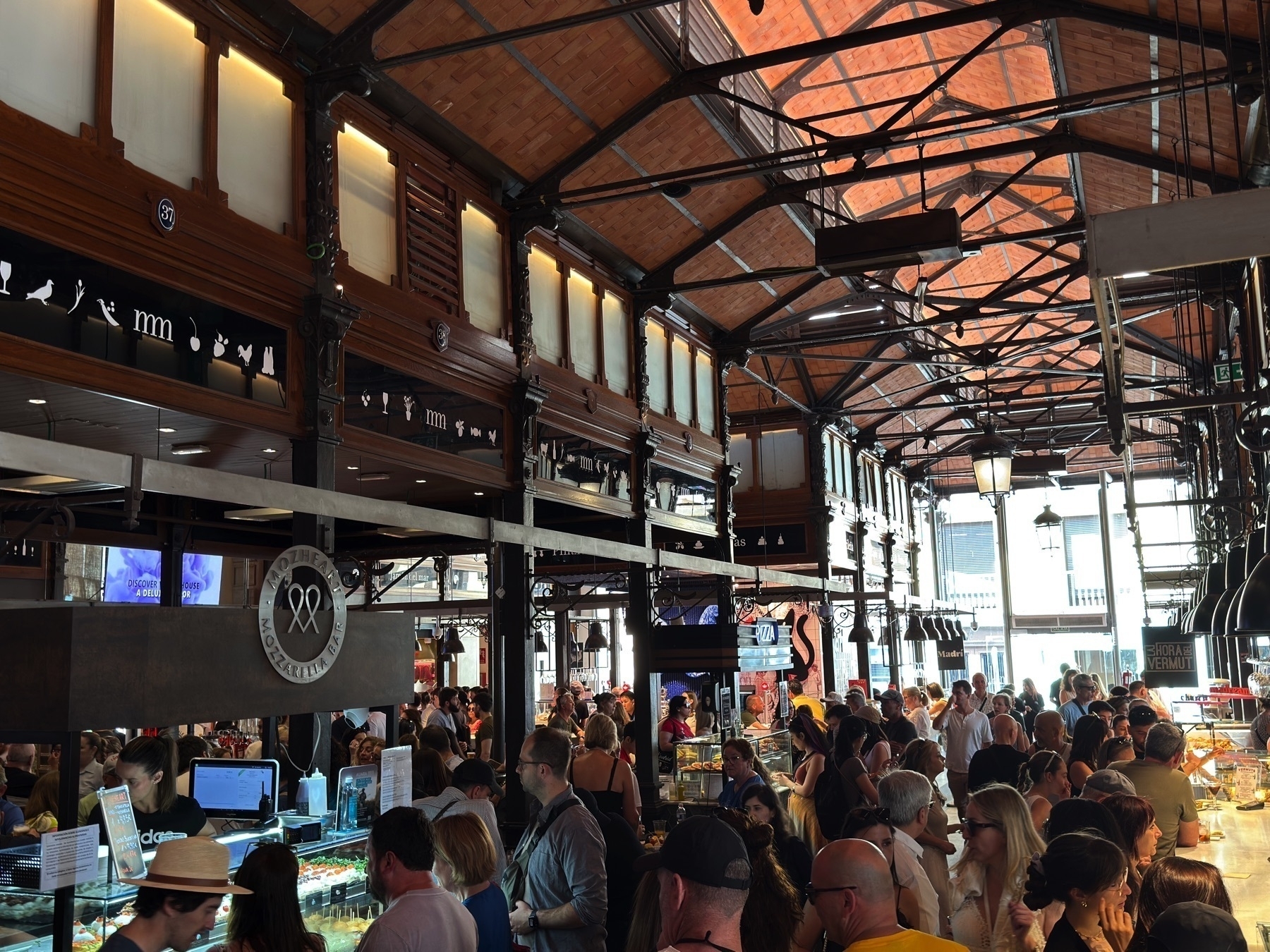
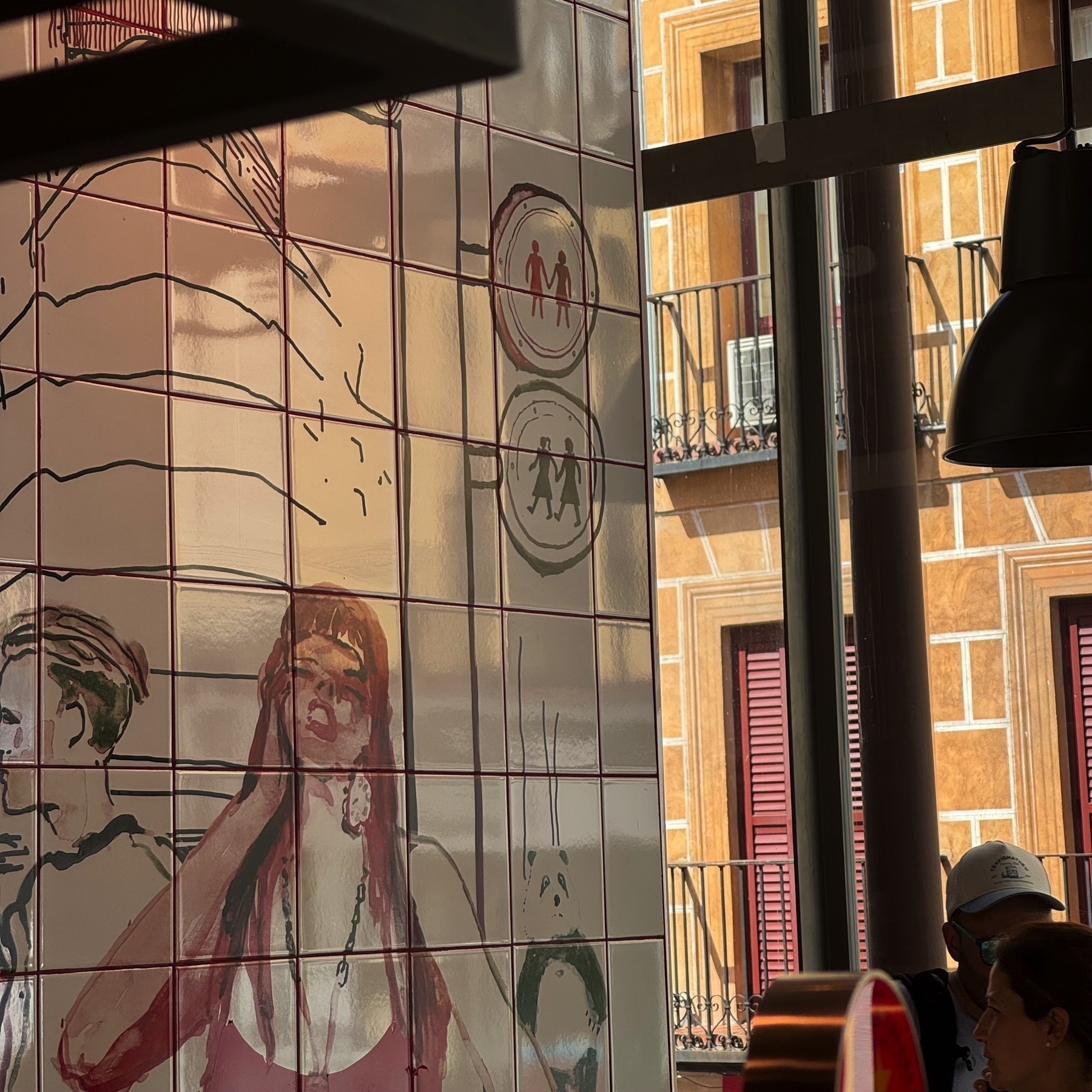
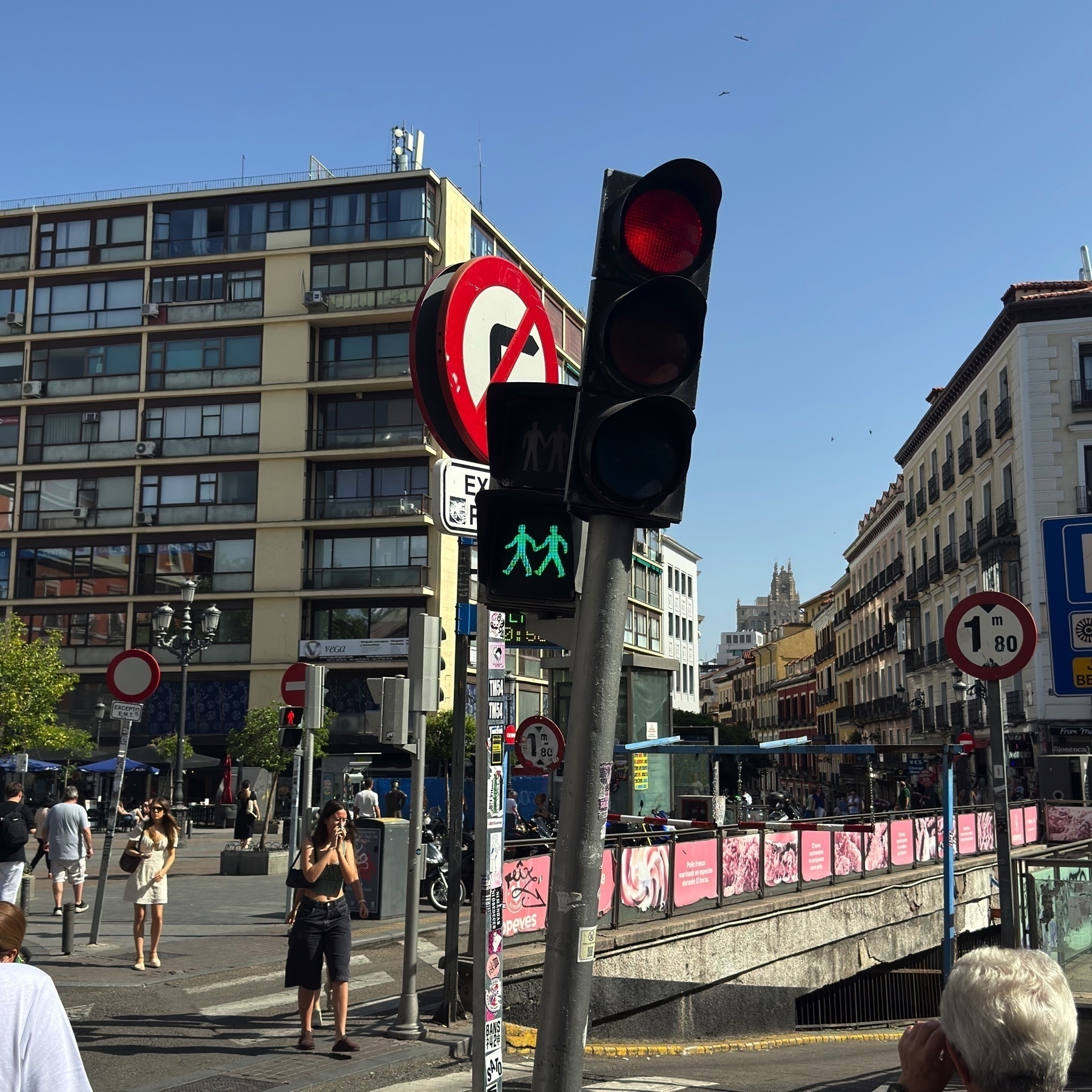
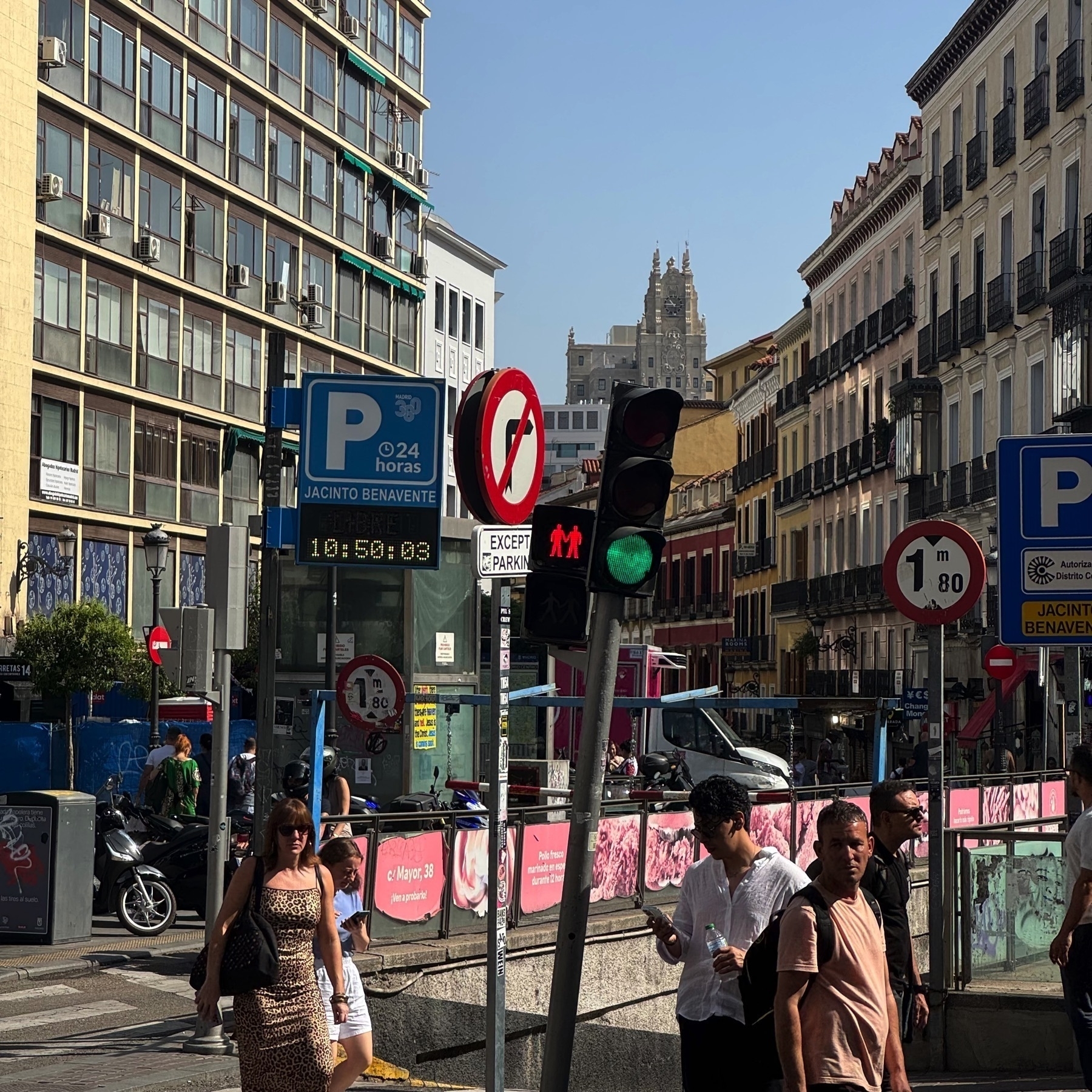
We went to Taberna Sanlúcar and really enjoyed the alcachofa, adobo sanluqueño, garbanzos con espinacas y bacalao, and of course the jamón ibérico. The place was packed when we arrived; we waited for a bit to sit at the bar and eat. Many people came and were turned away because they were so busy.
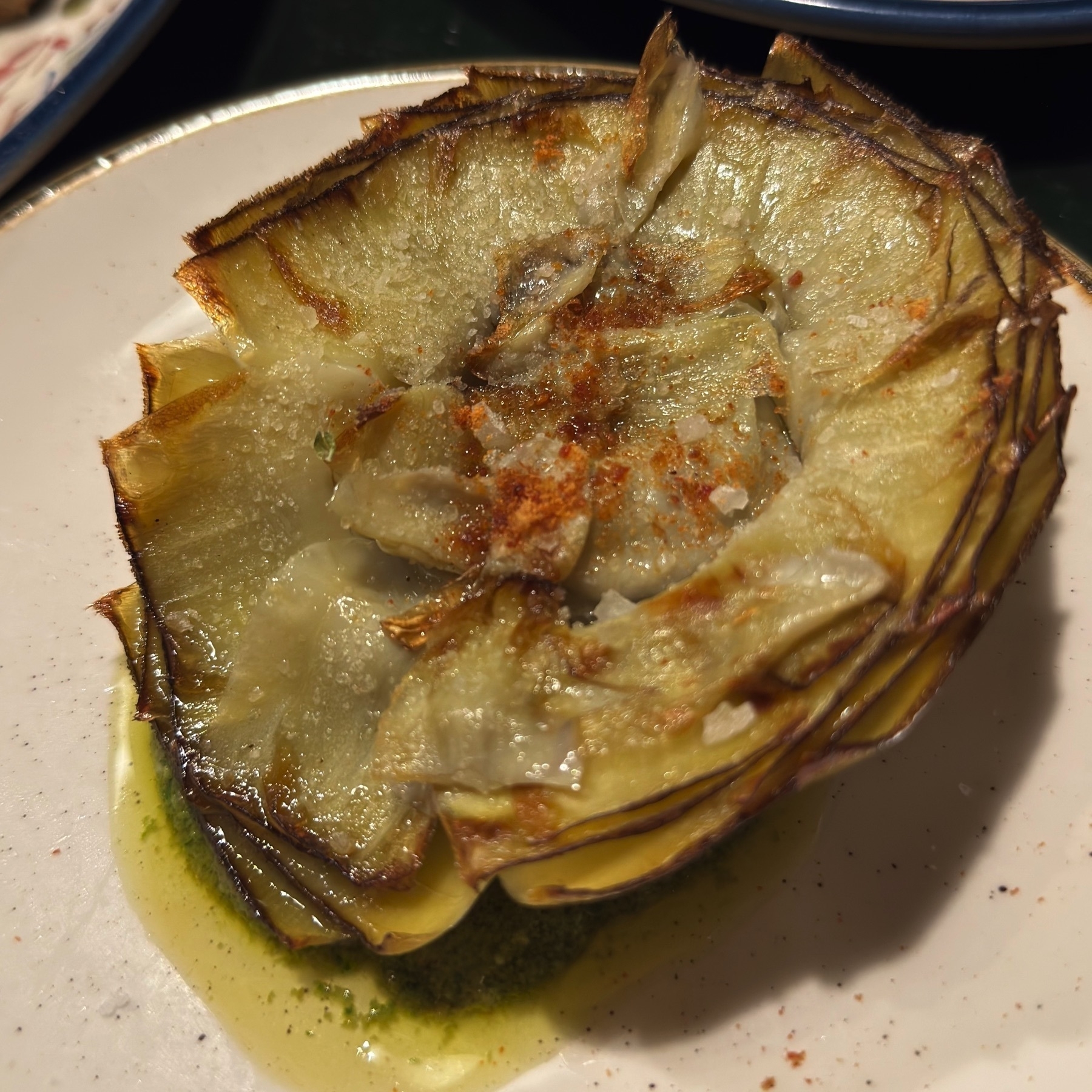
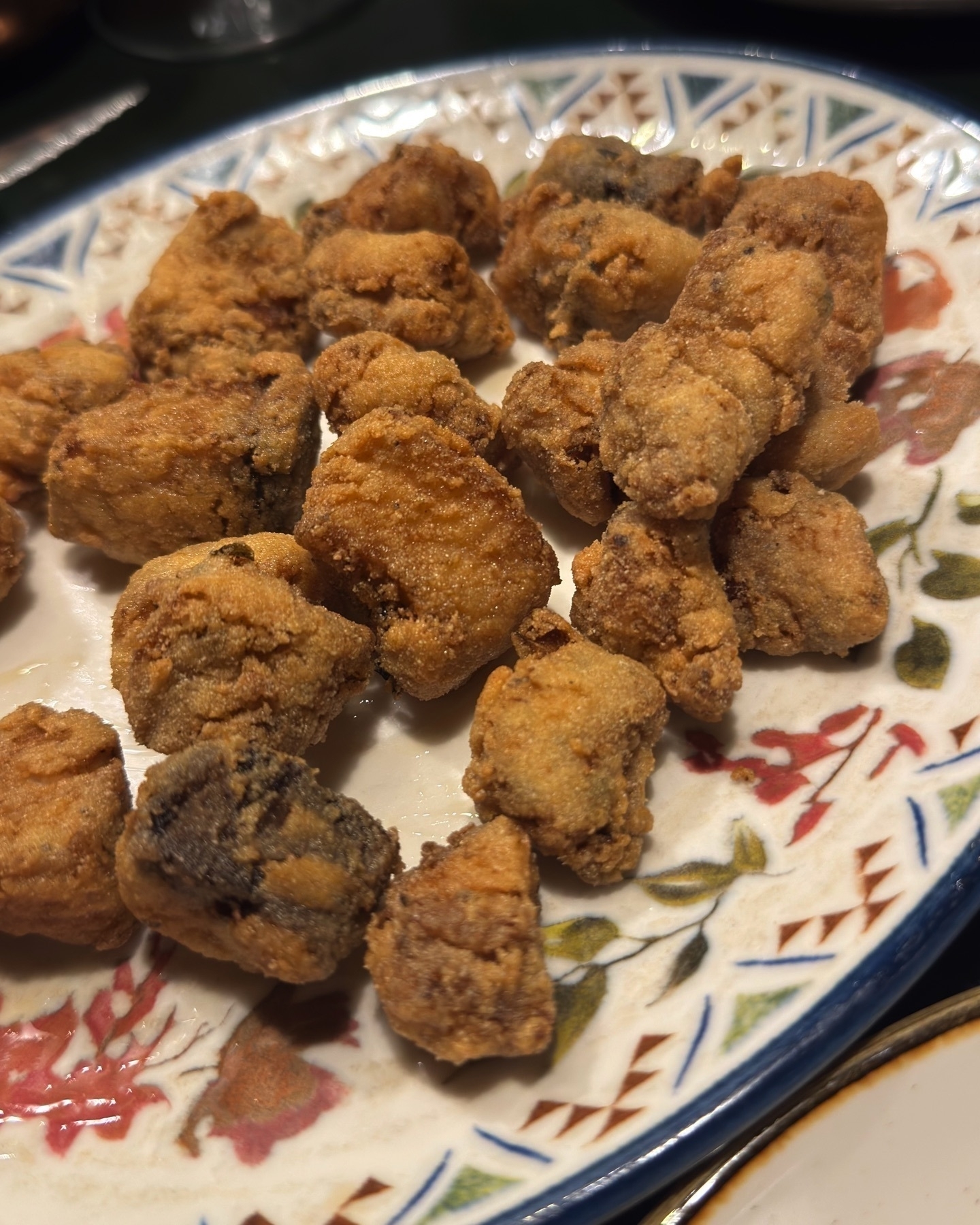
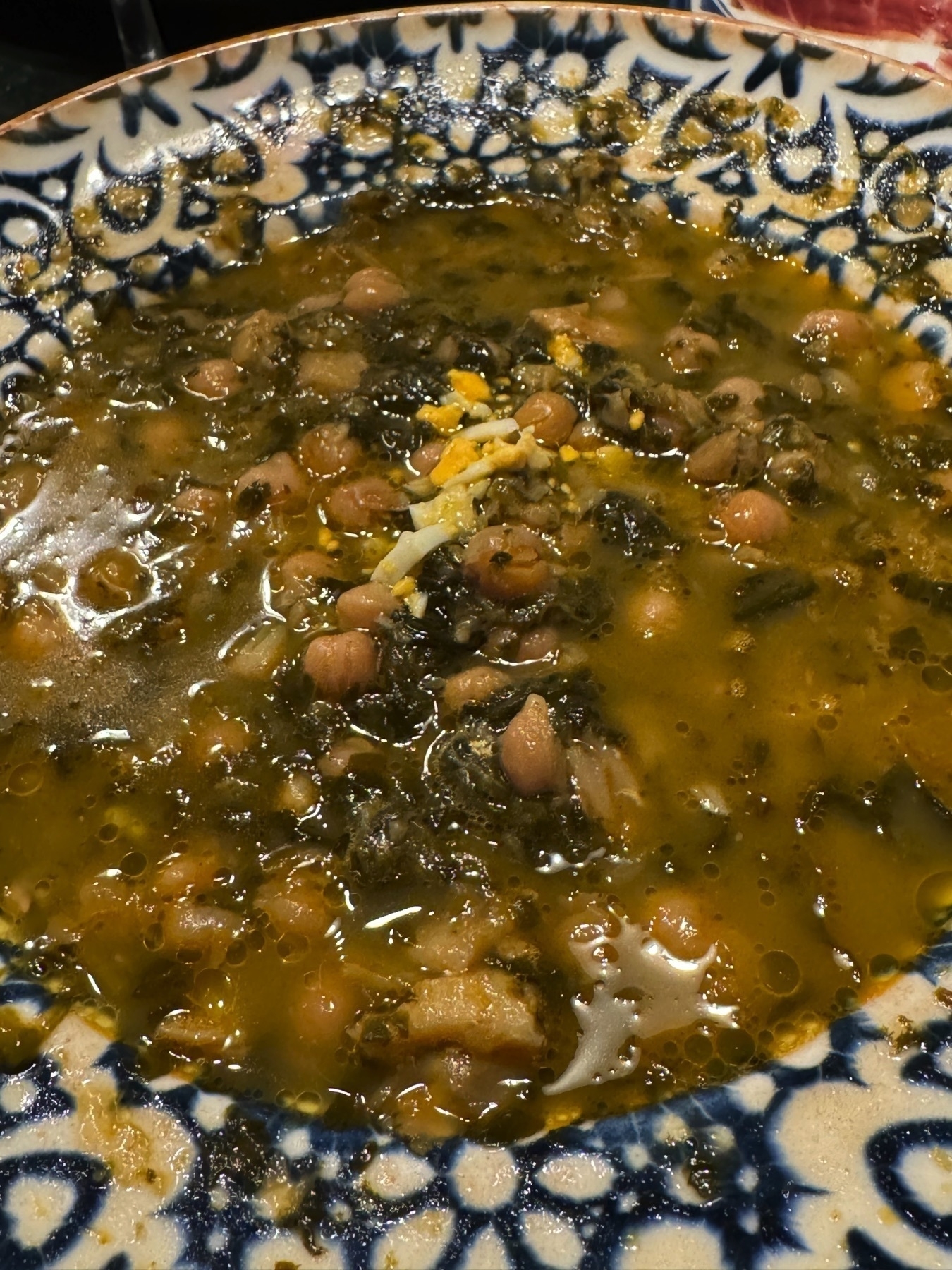
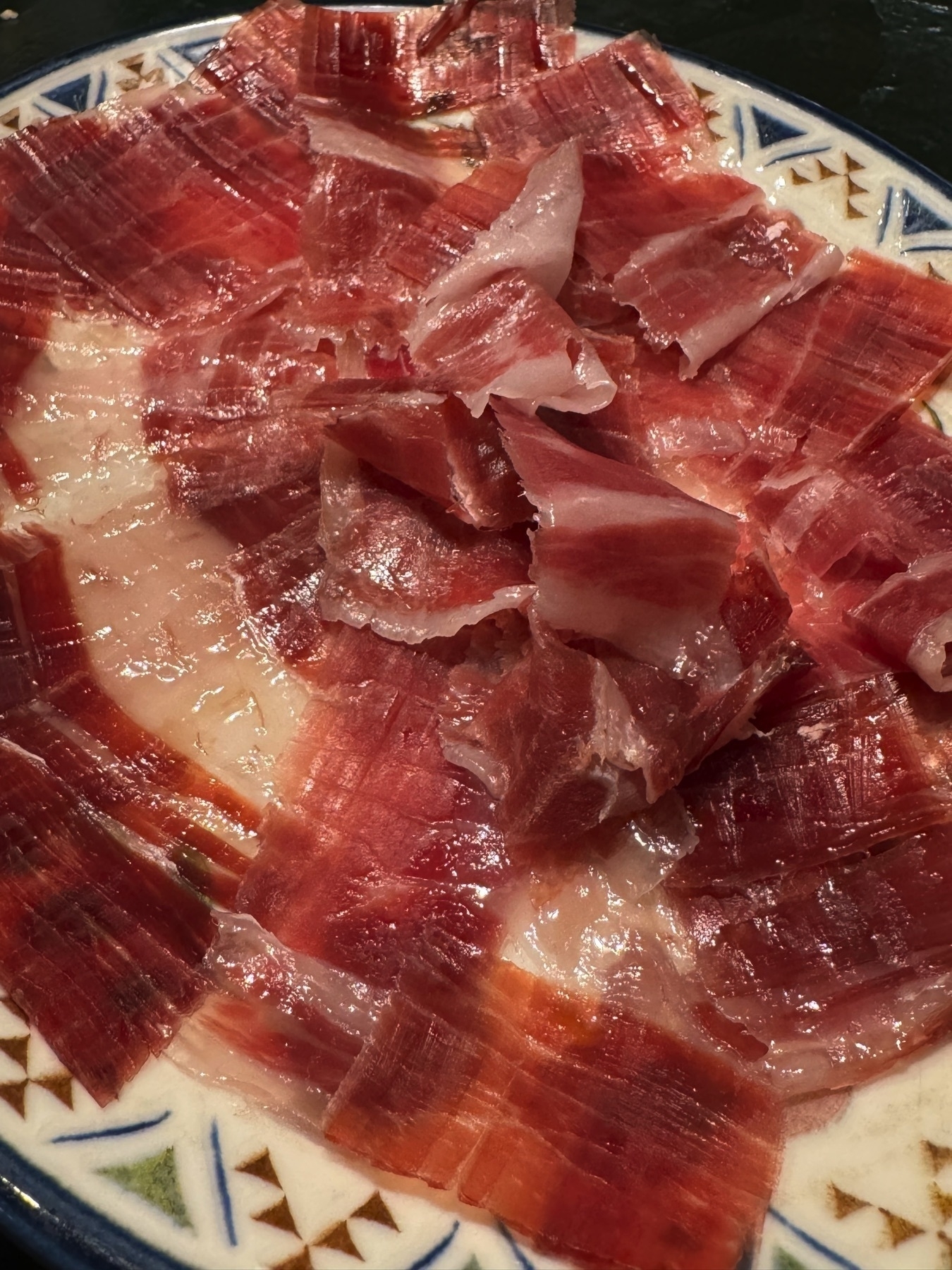
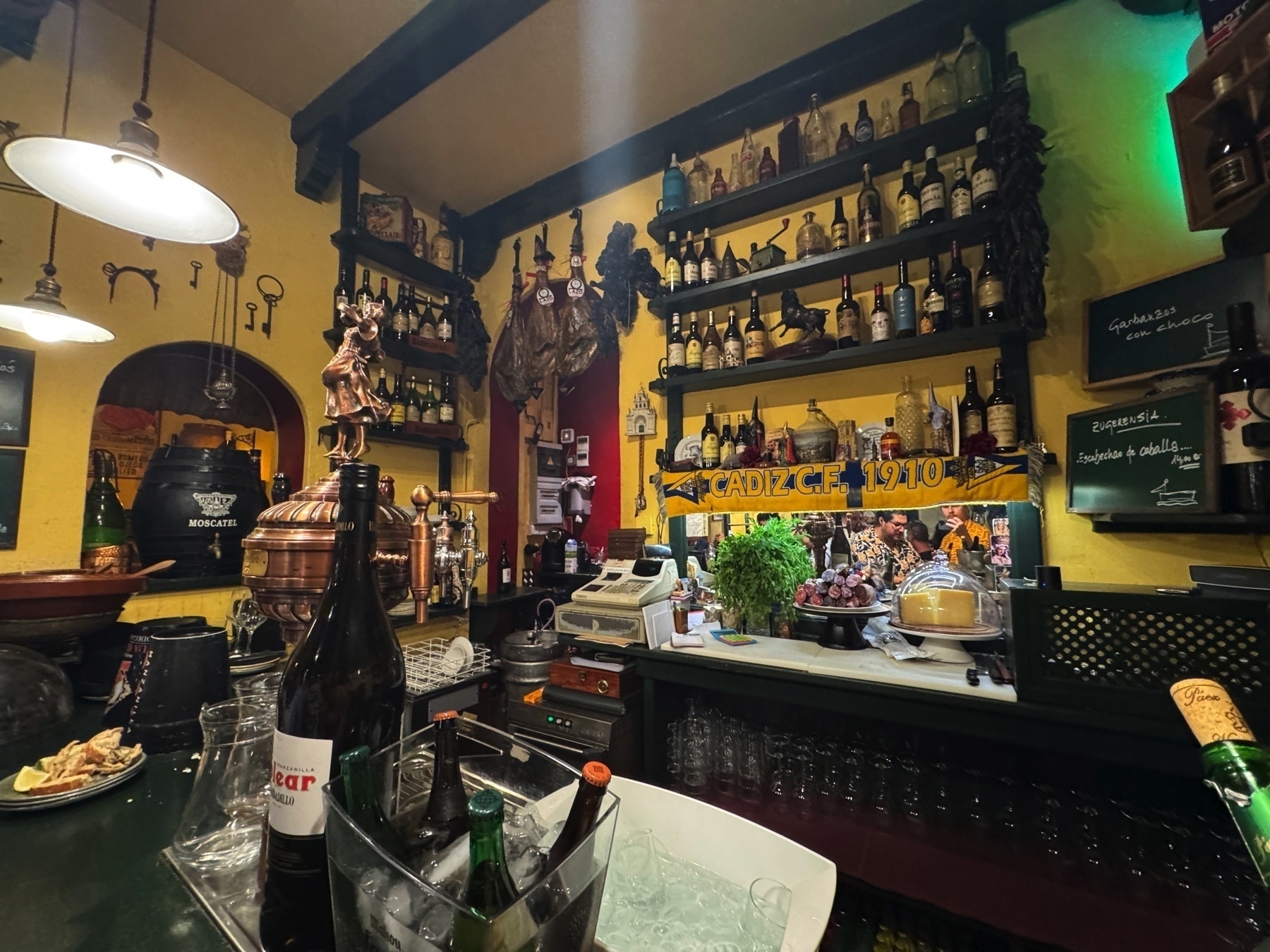
My dad’s one recommendation for Madrid was visiting the Museo Nacional del Prado—it was a great recommendation! We did the two-hour self-guided tour which only highlighted 1–2 paintings in each room.
No photos allowed, so just a few photos from the outside.



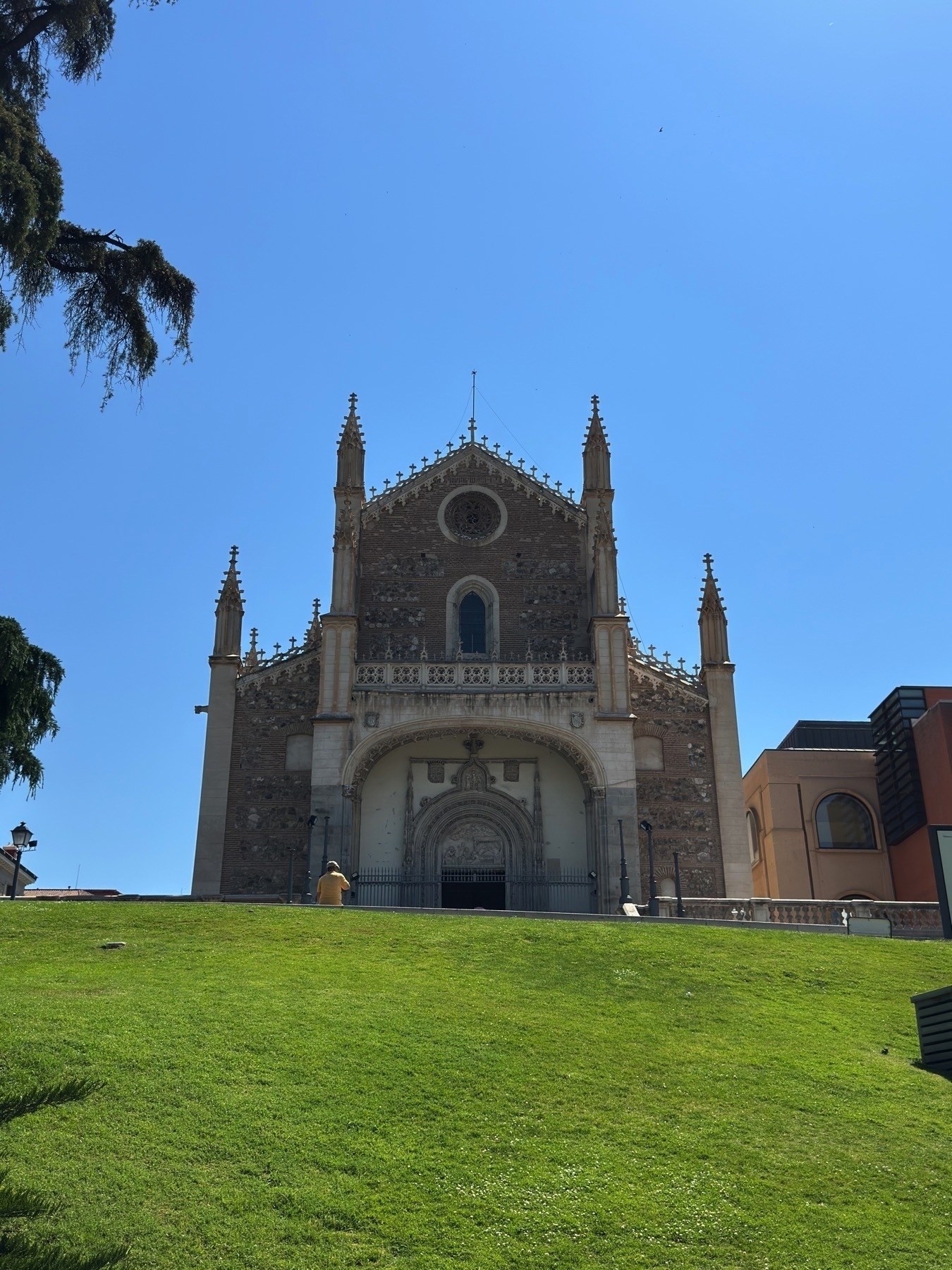
We went to Taberna La Concha a couple of times because we loved their pollo en curry rojo, ensalada de tomate y Mozarella (with a tasty honey-mustard vinaigrette), and tosta de salmón (with tzatziki). The waiters were fun and they always gave us chocolate truffles (for free) when we paid.
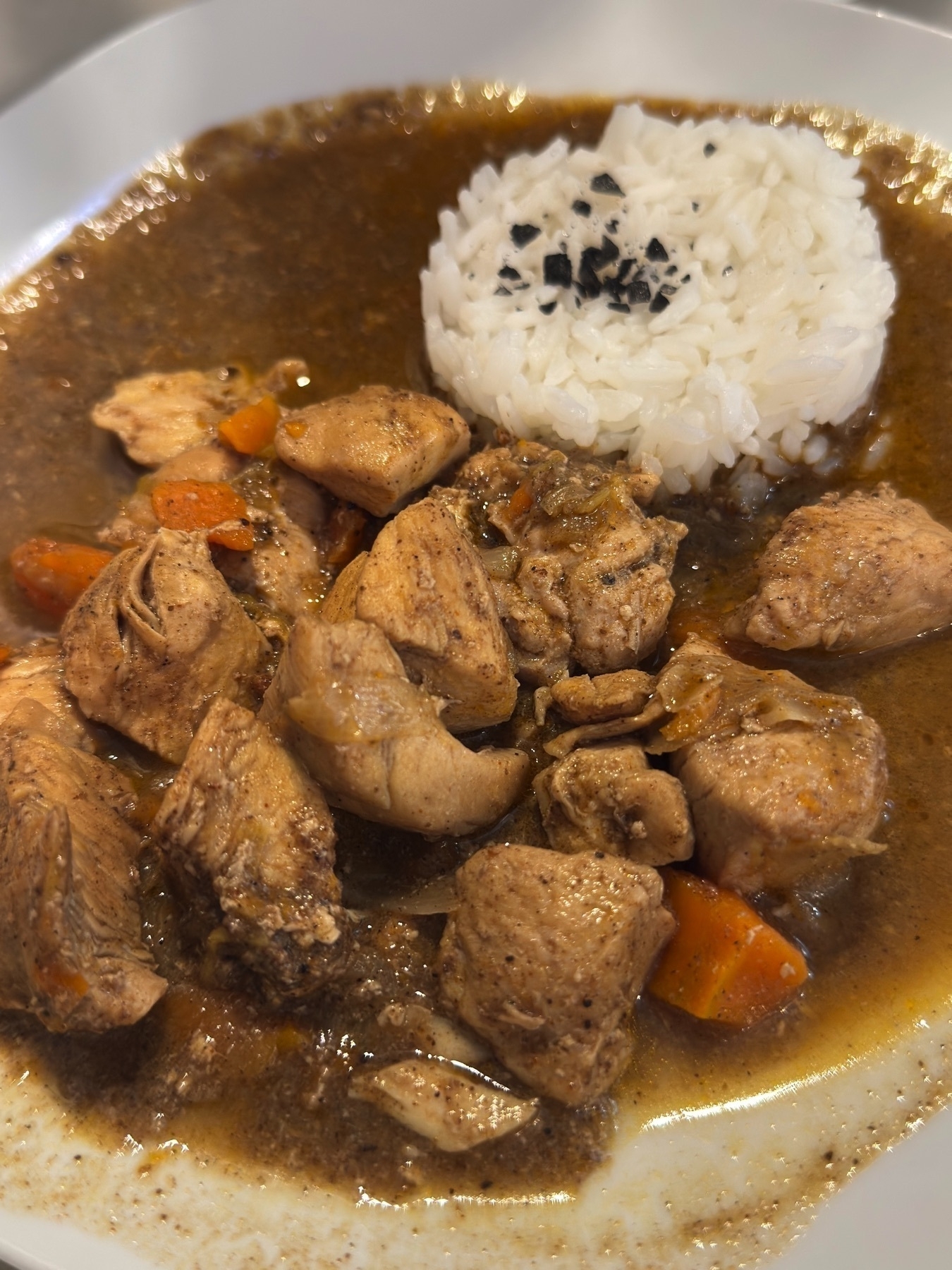
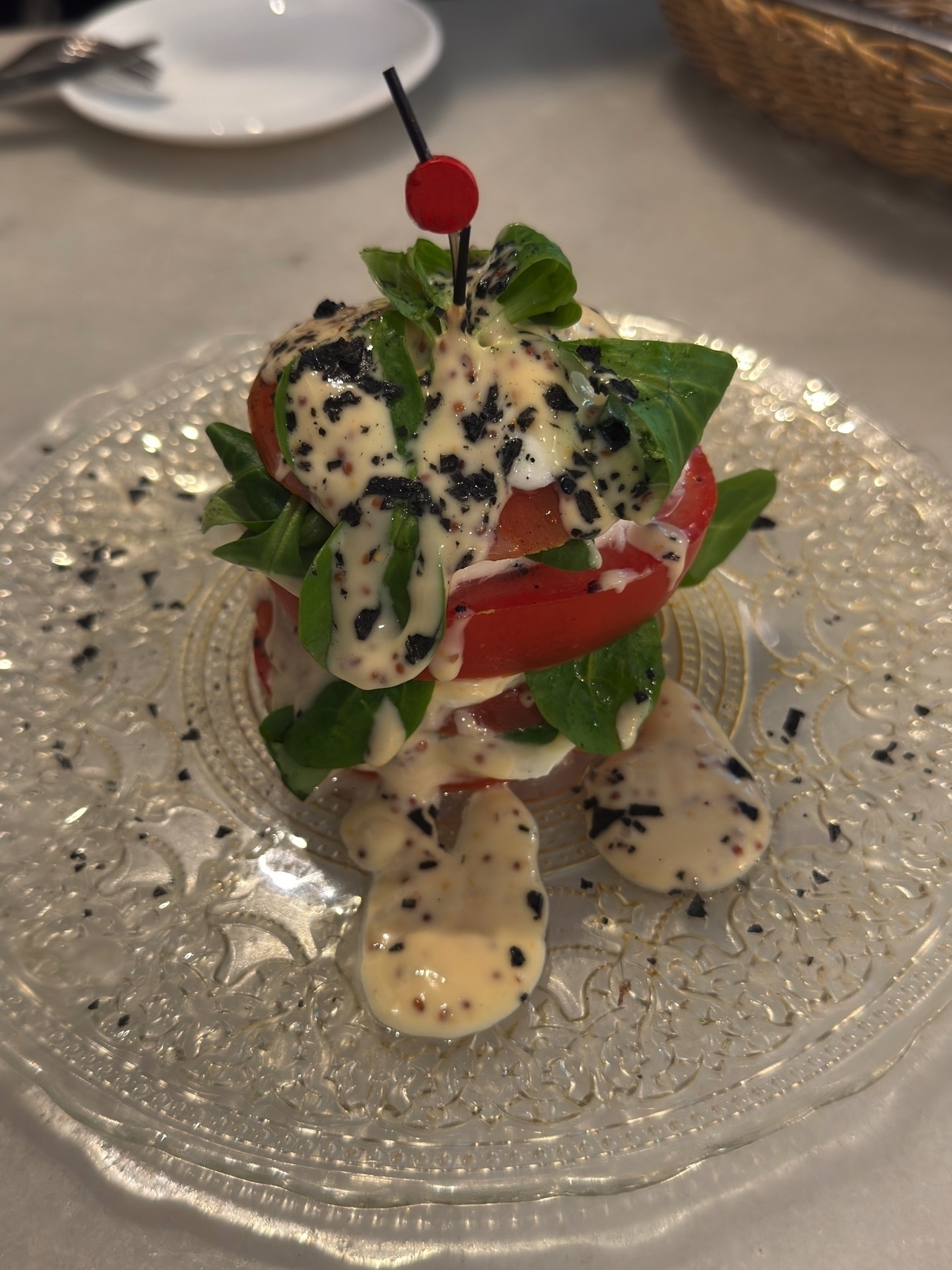
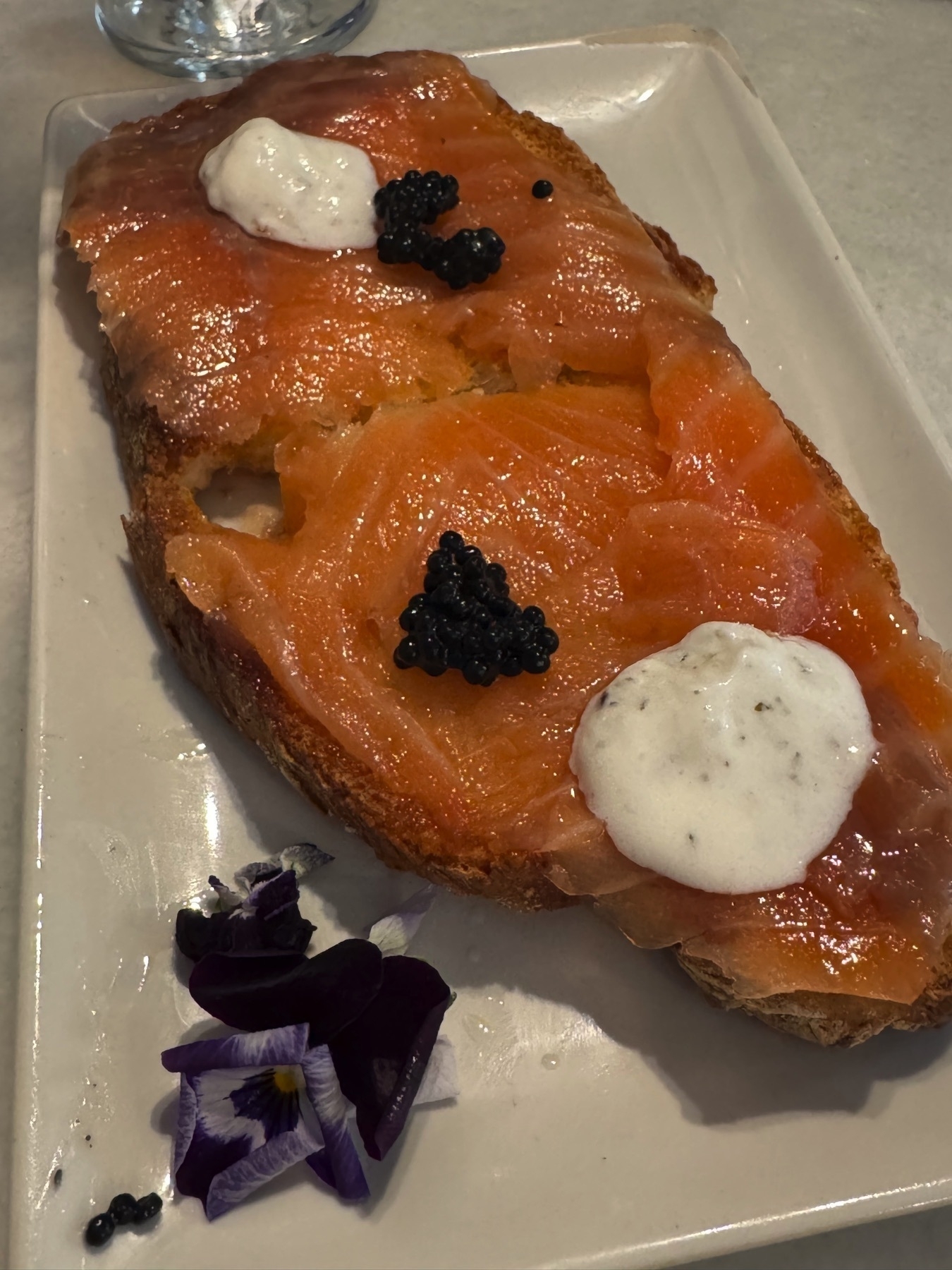
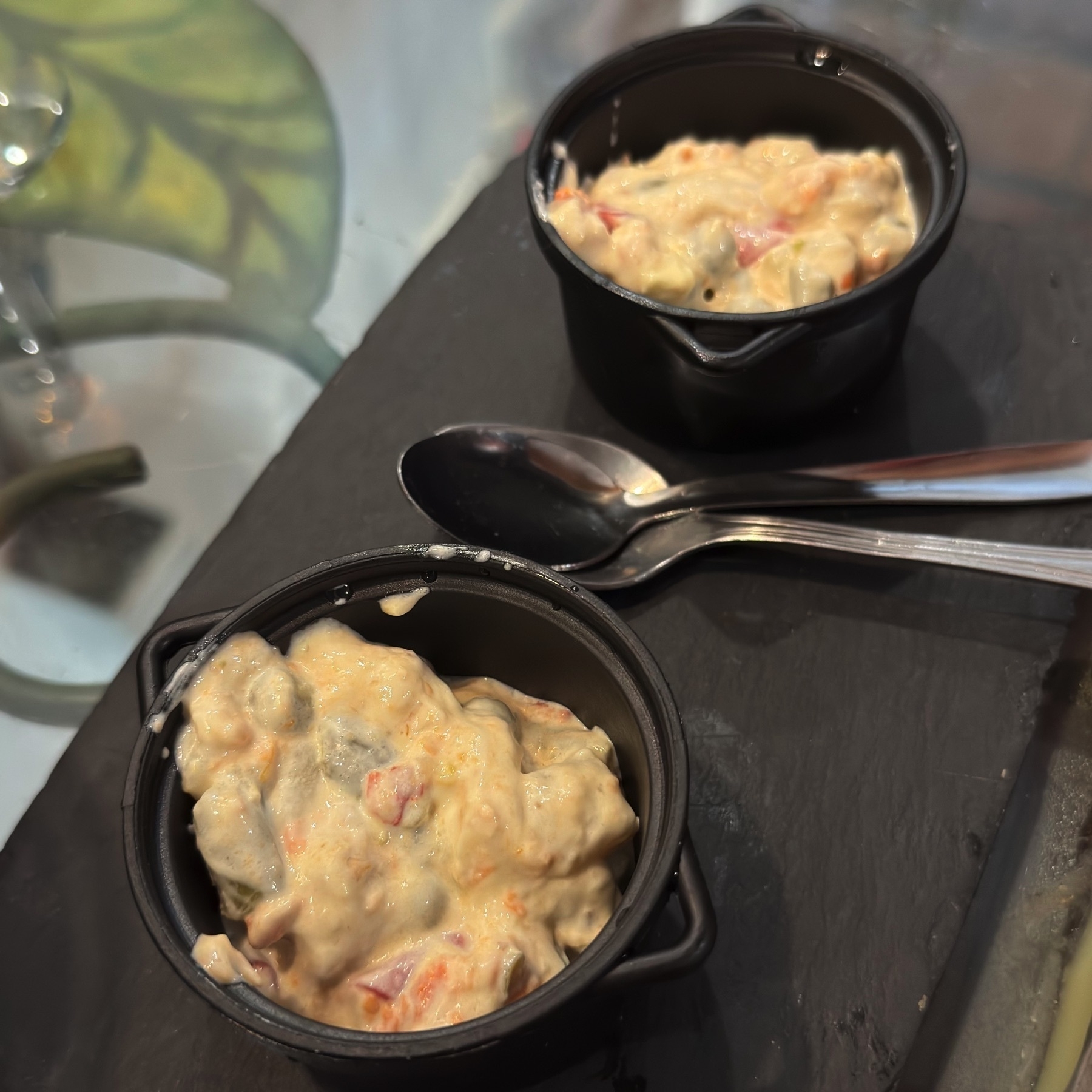
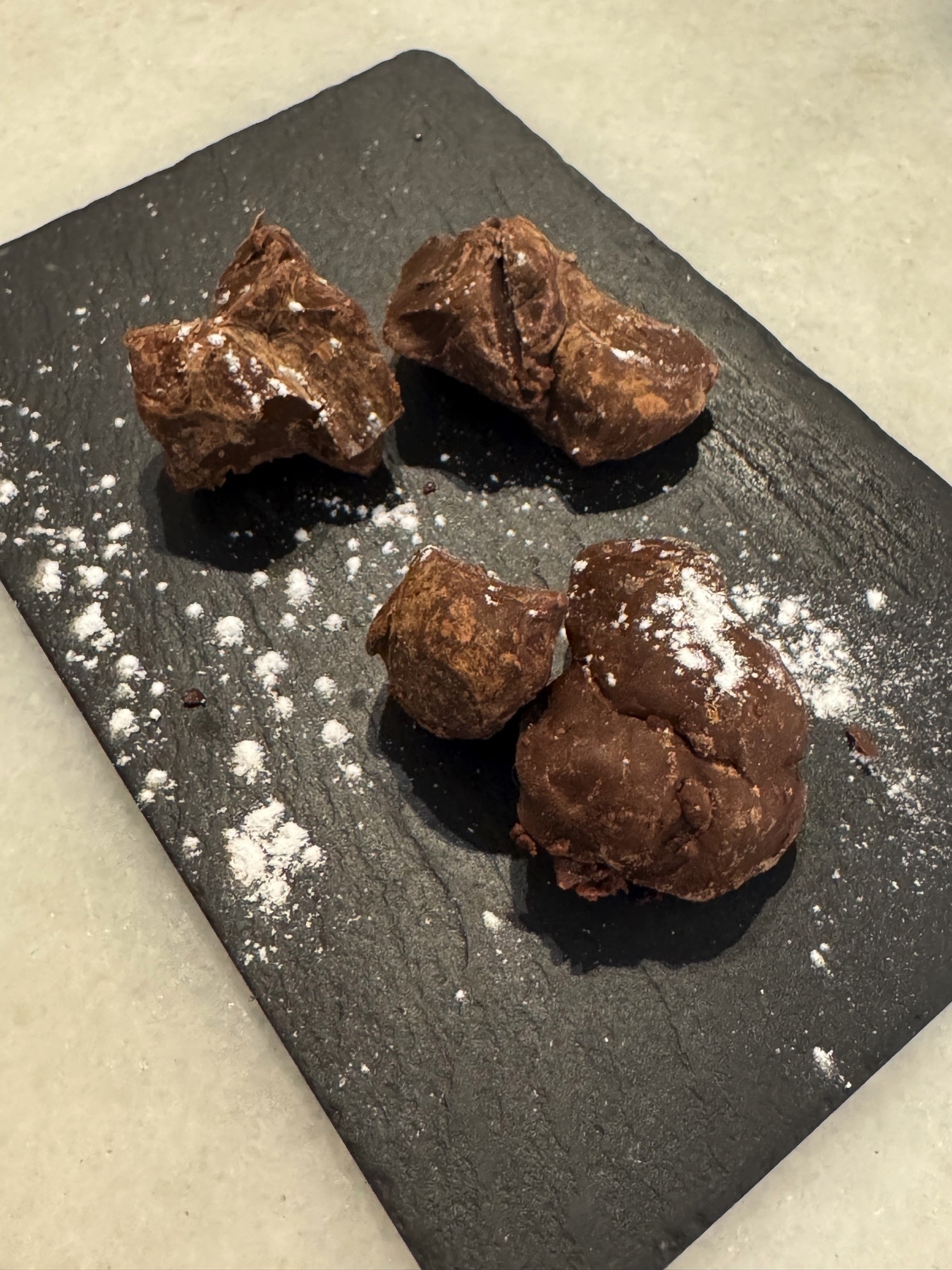
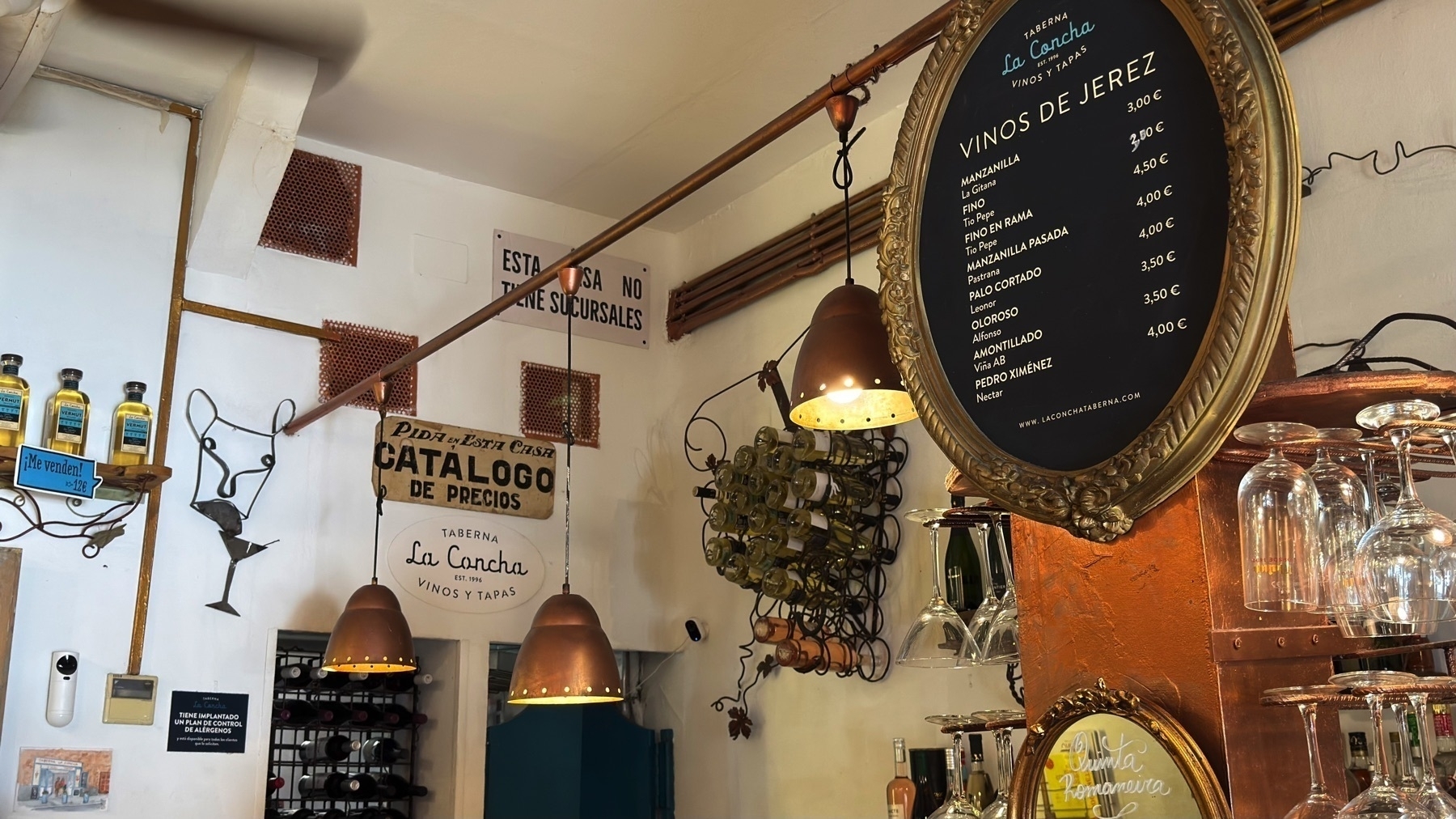
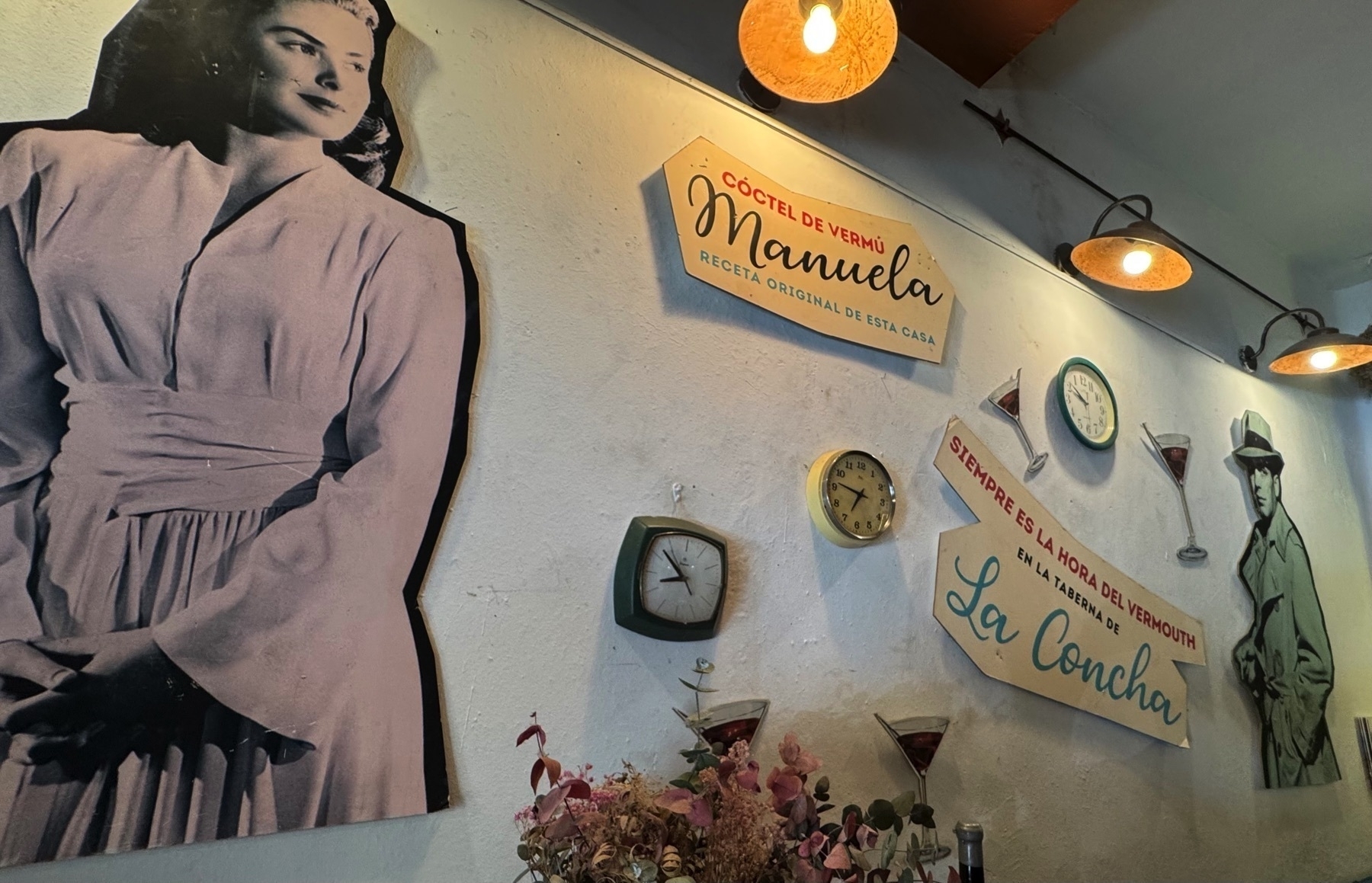
Trains in Spain
We took hi-speed Renfe trains between Sevilla, Málaga, and Granada.
The booking process online was straightforward enough. We booked all of them in advance so we could pick good times and select our seats.
Two of our three trains were delayed—I think the longest wait was another 30–45 minutes, so not too long.
Every station had security, but it was very light and just consisted of a metal detector and putting our bags through a machine. No taking electronics out, no taking off shoes, etc.
All of the stations had at least a little cafe from which to grab something to eat, which was nice.
Overall, I’d definitely recommend taking the hi-speed trains to get around! They are slower than flying but more convenient in just about every other aspect.
